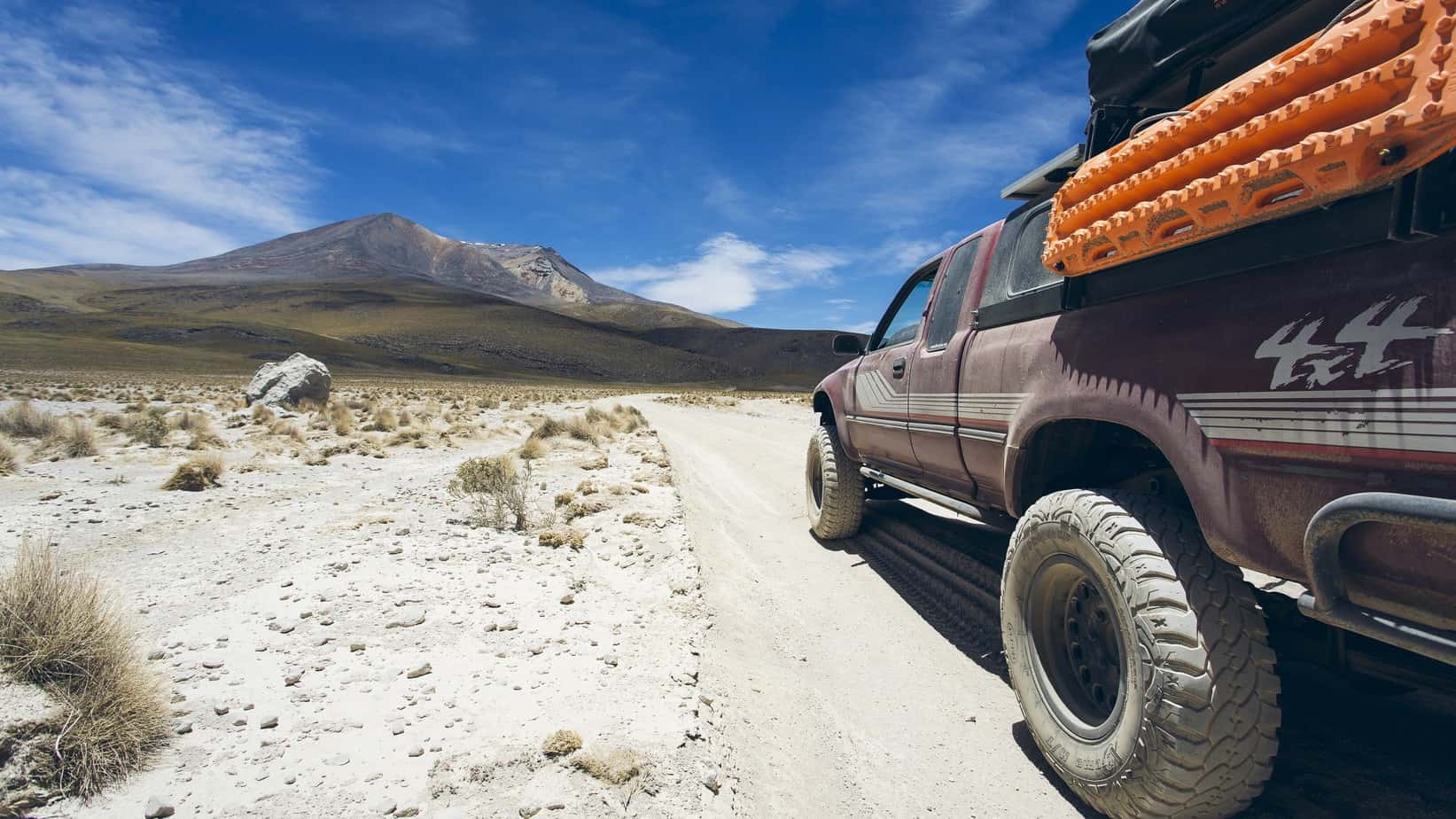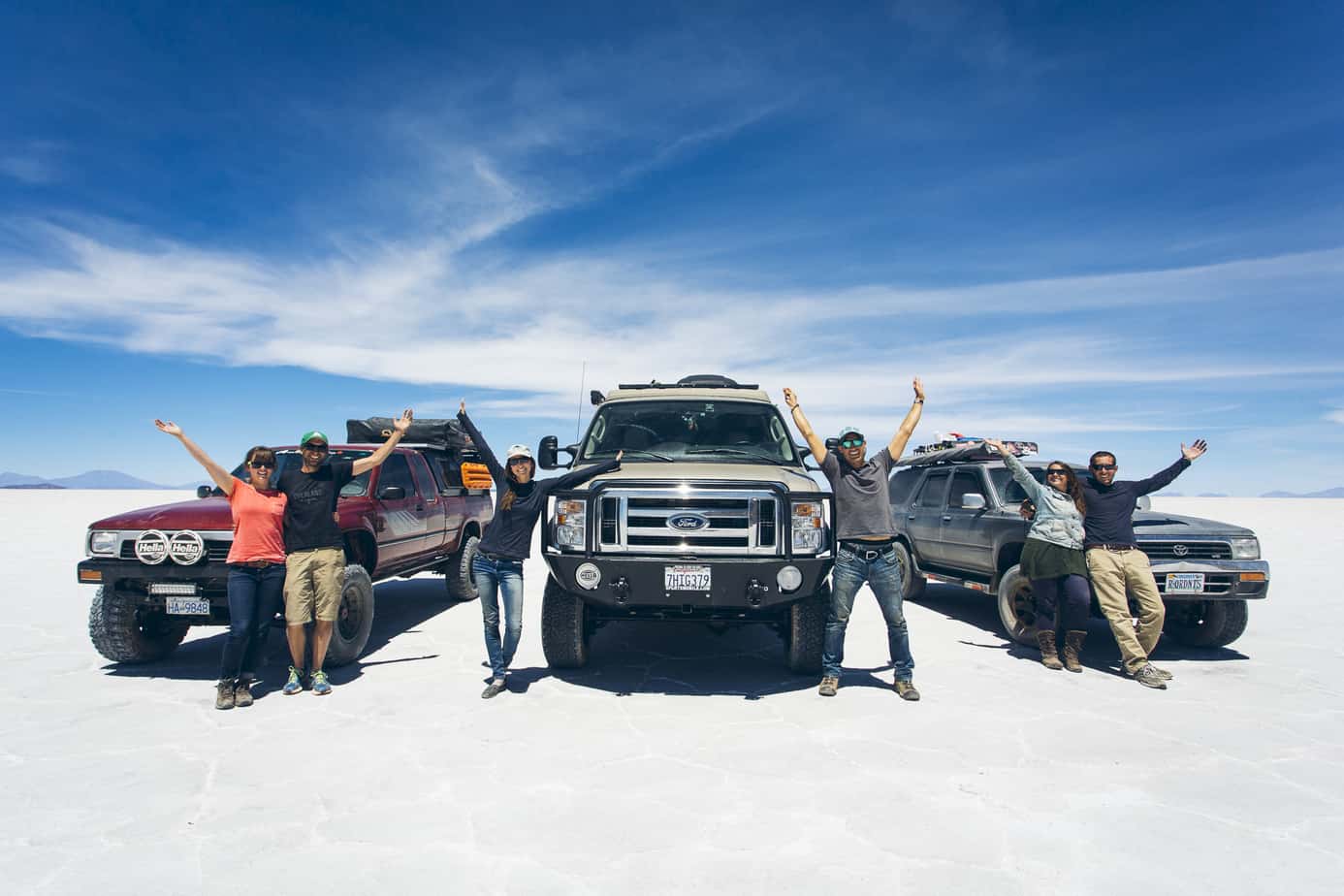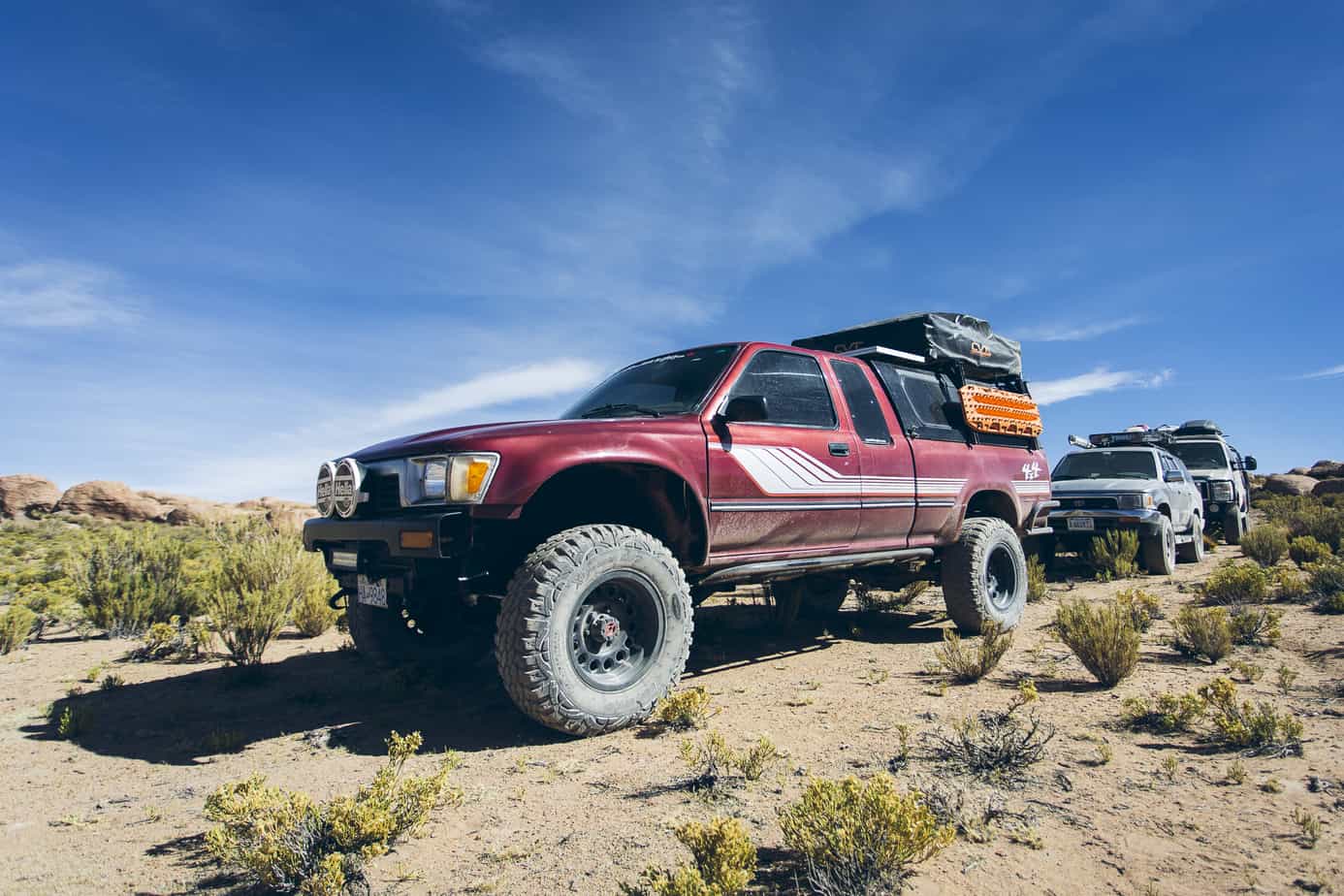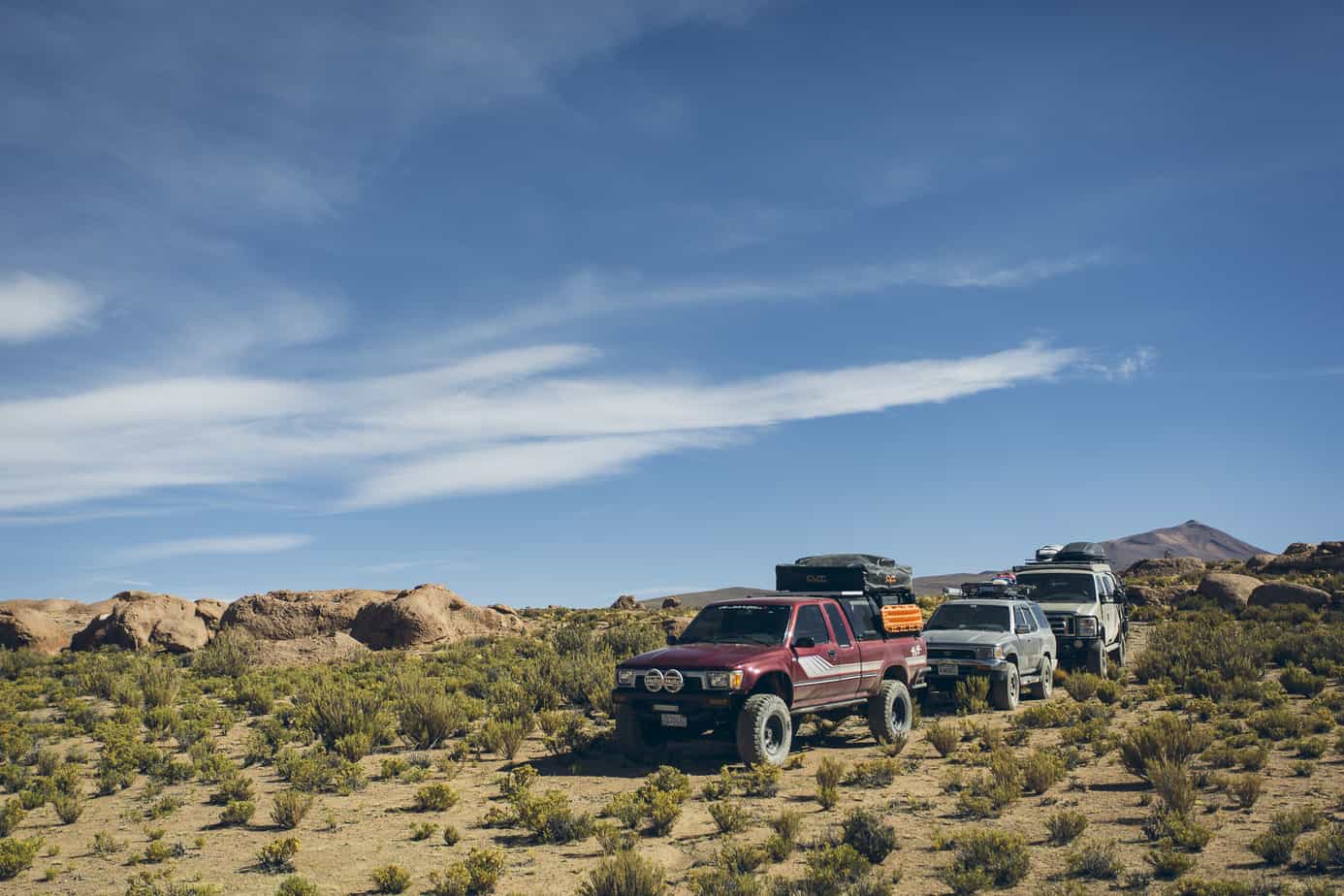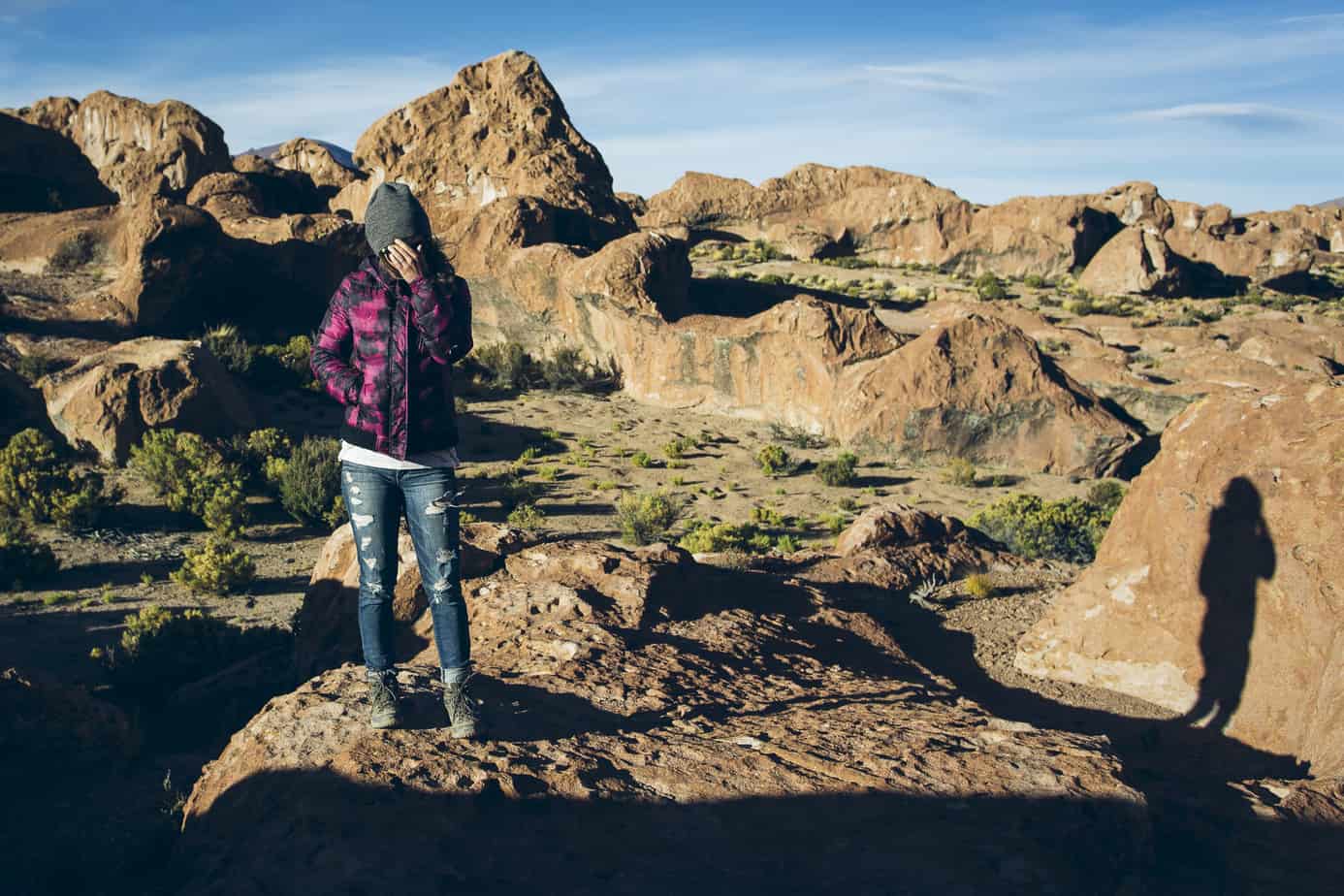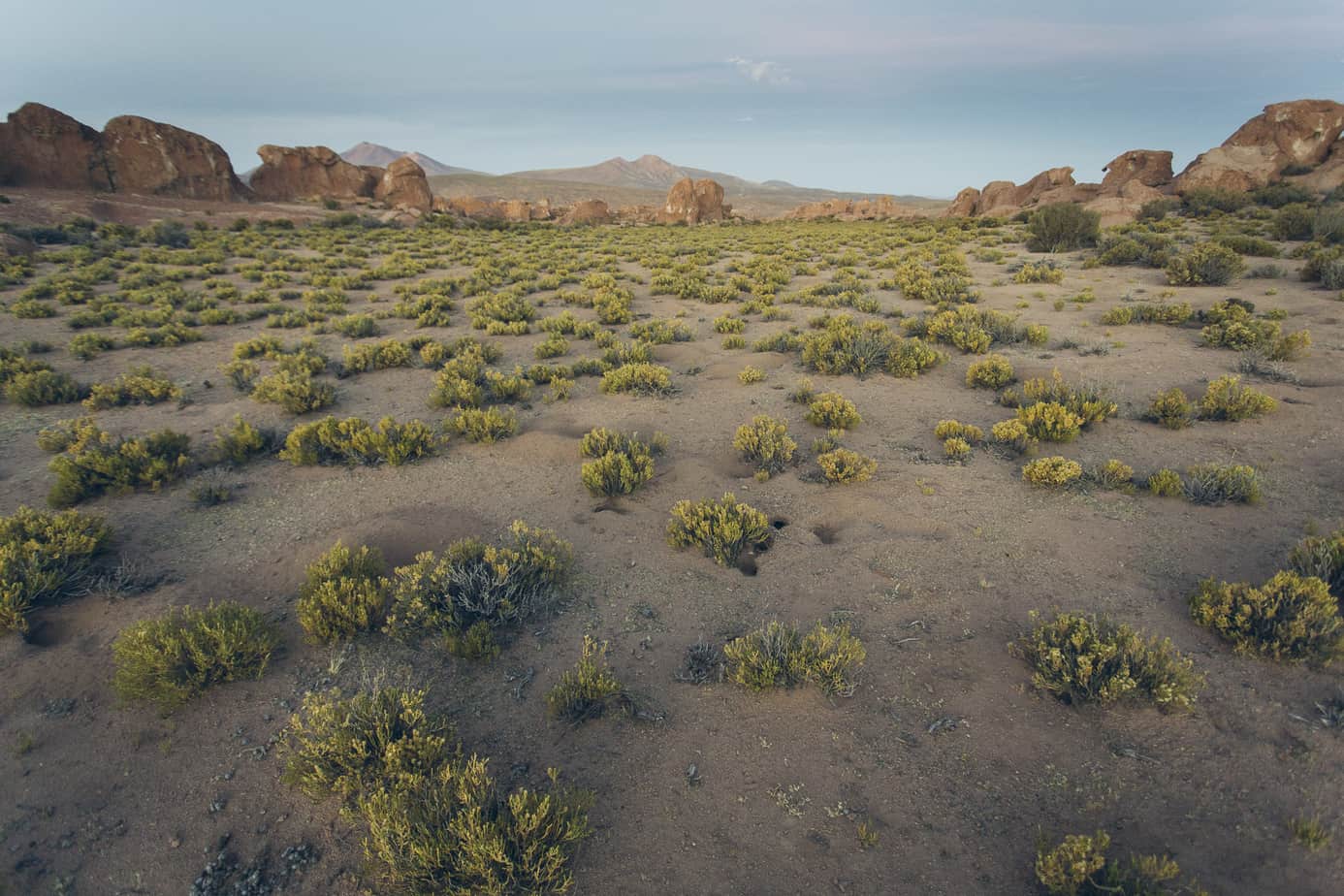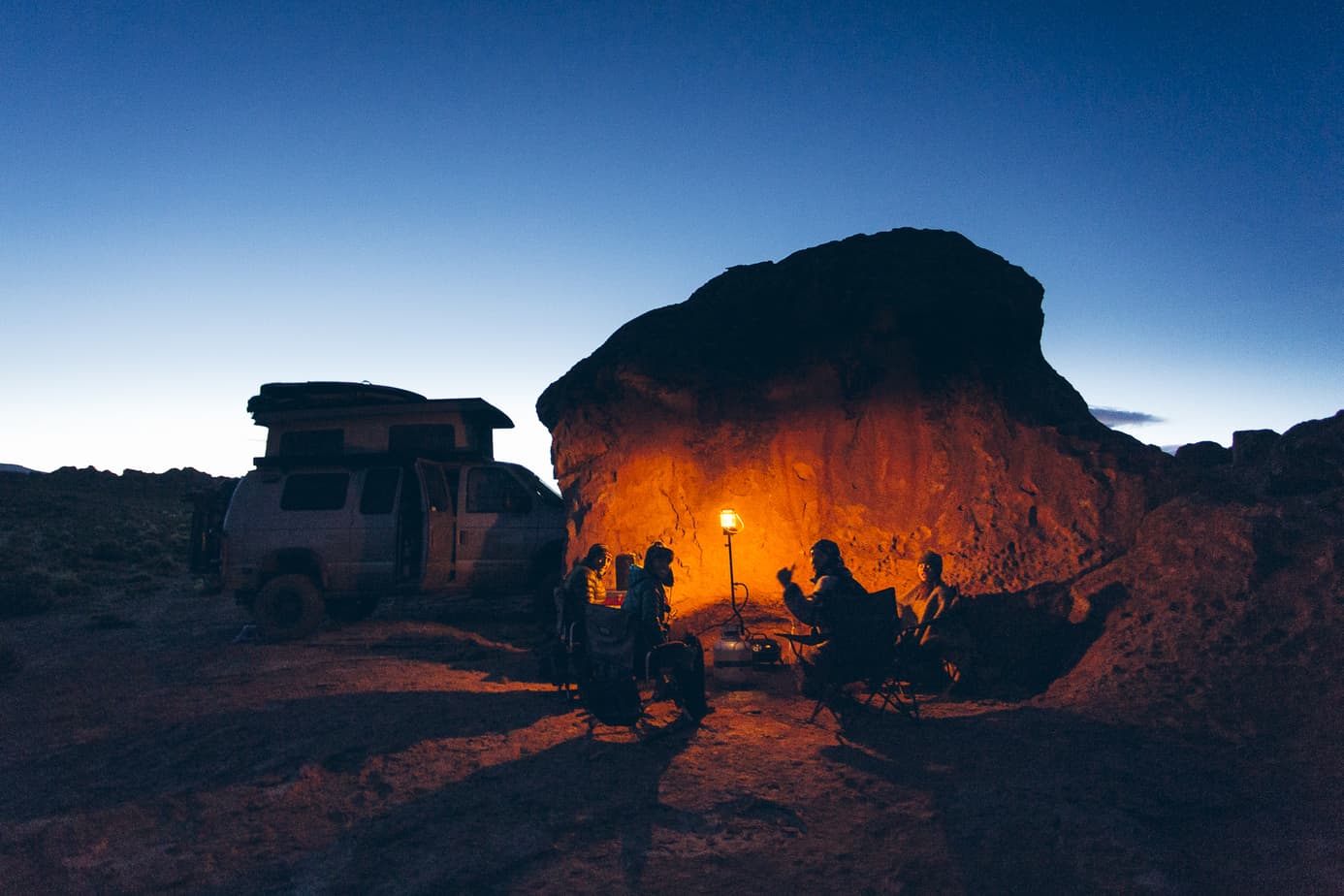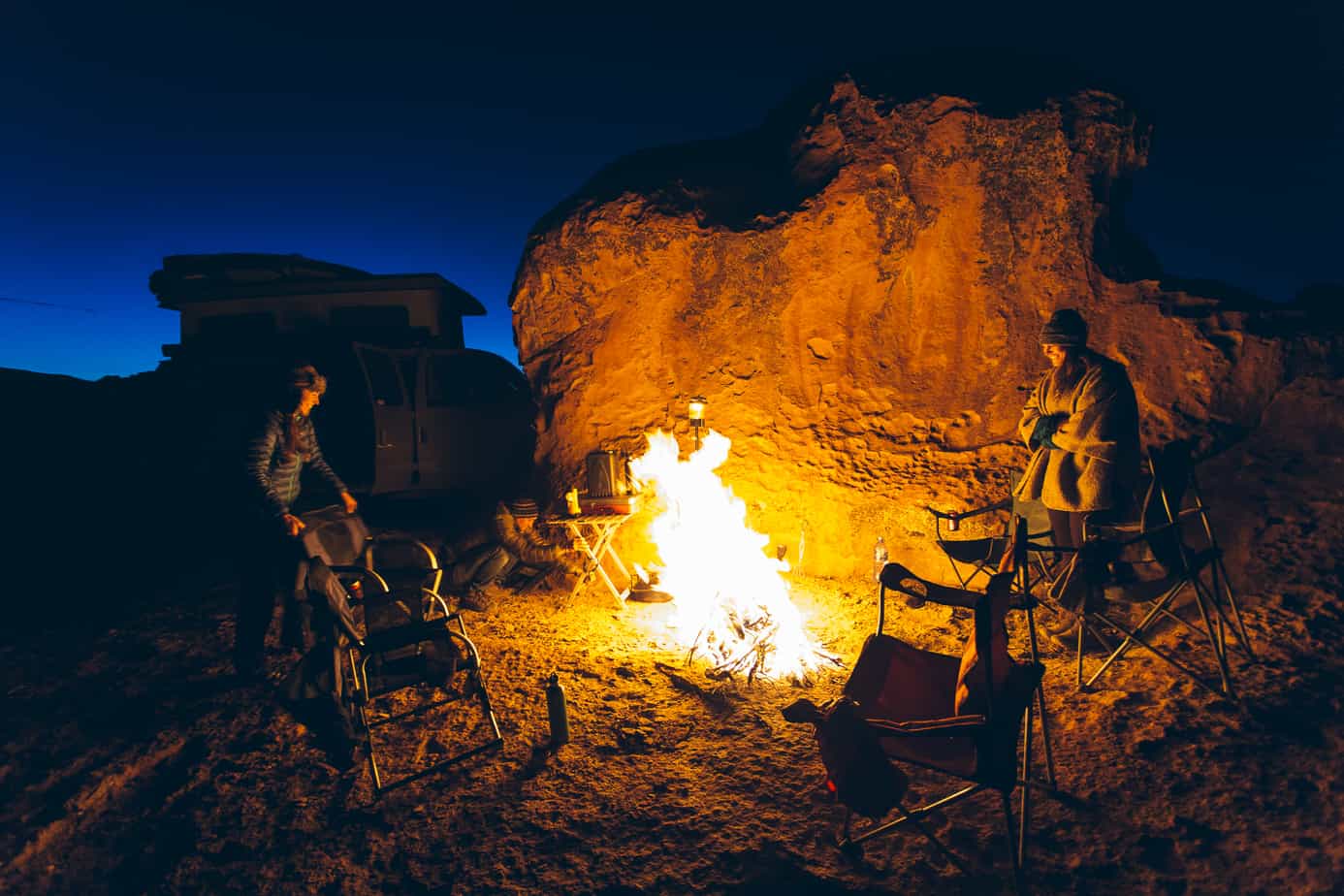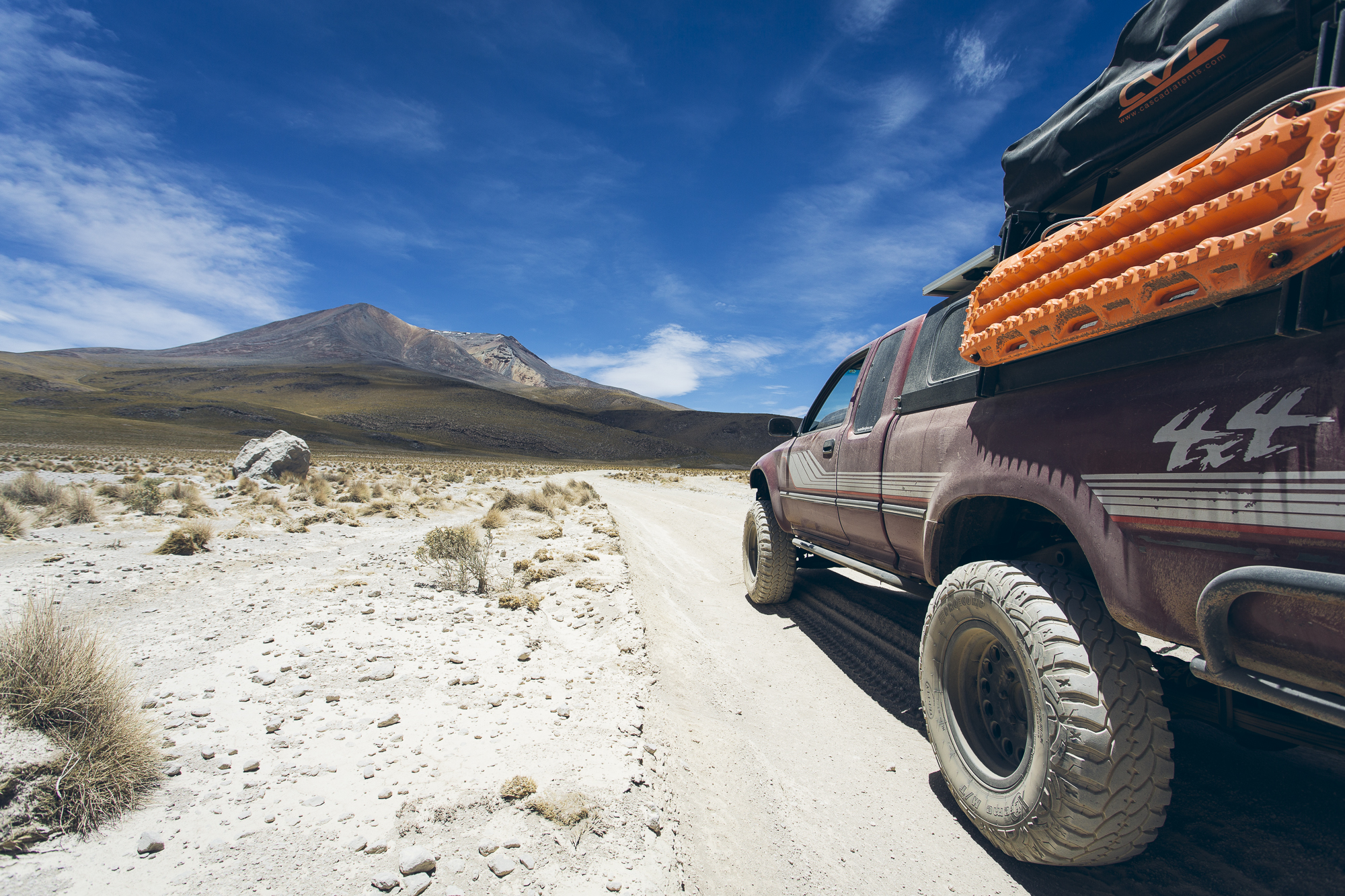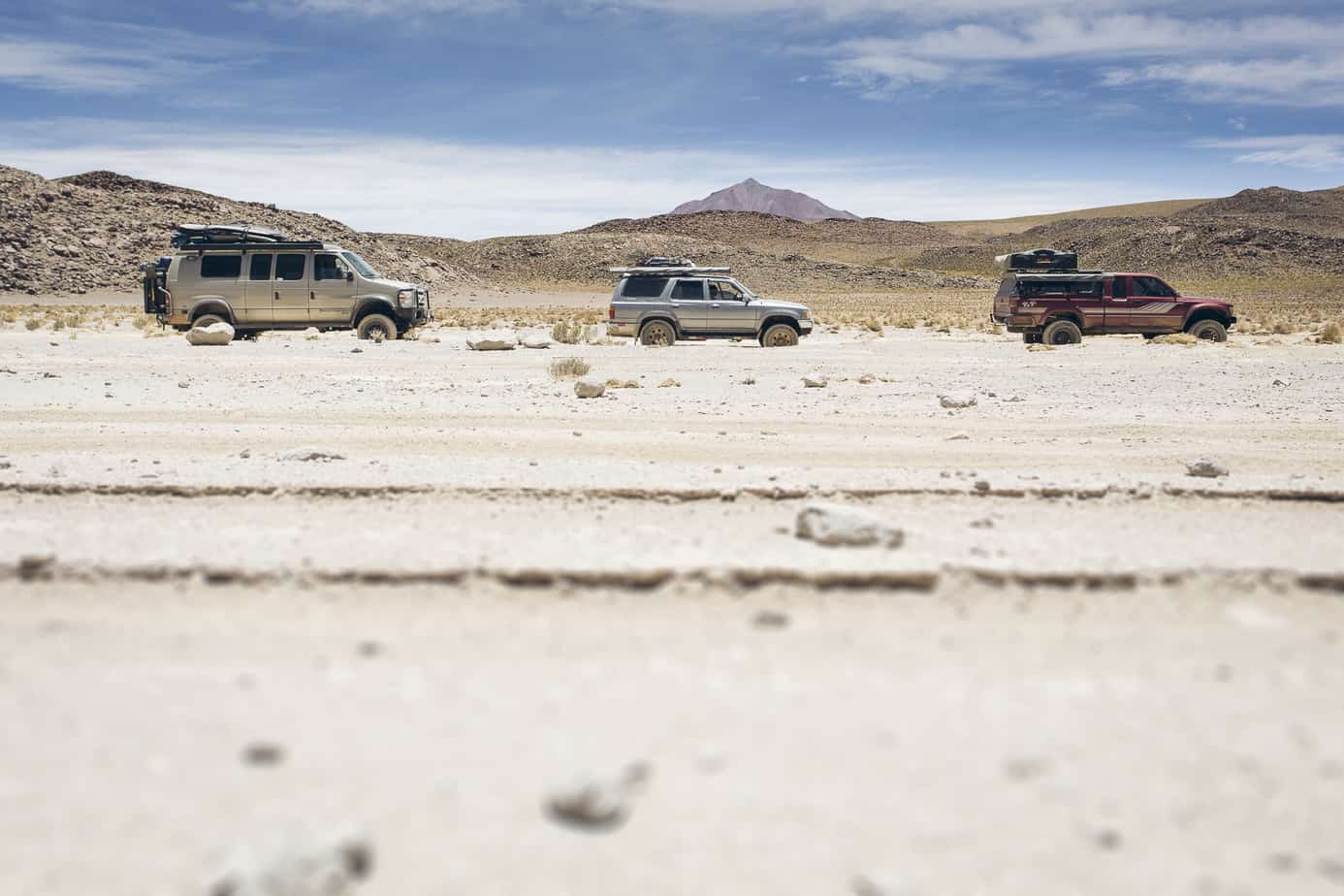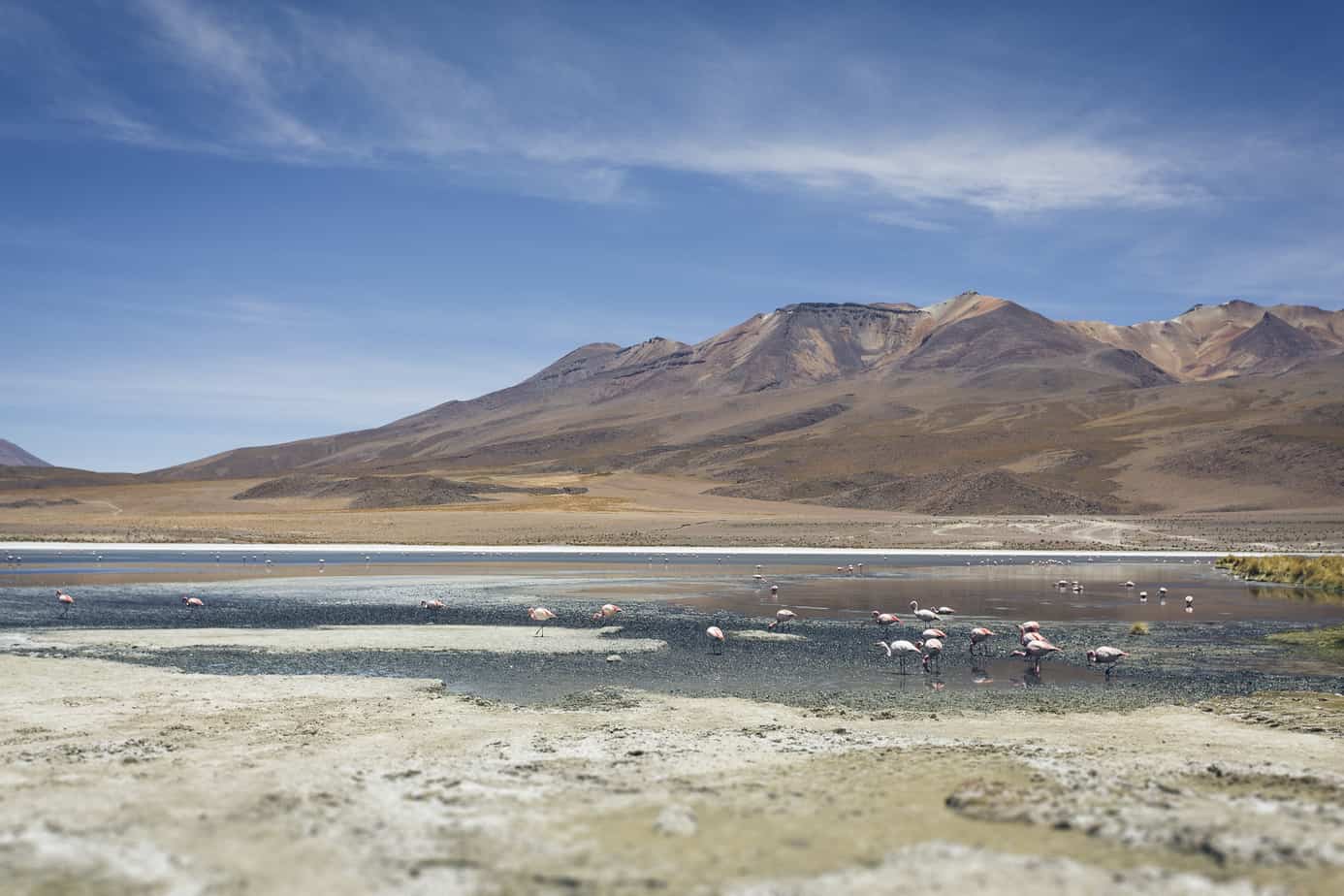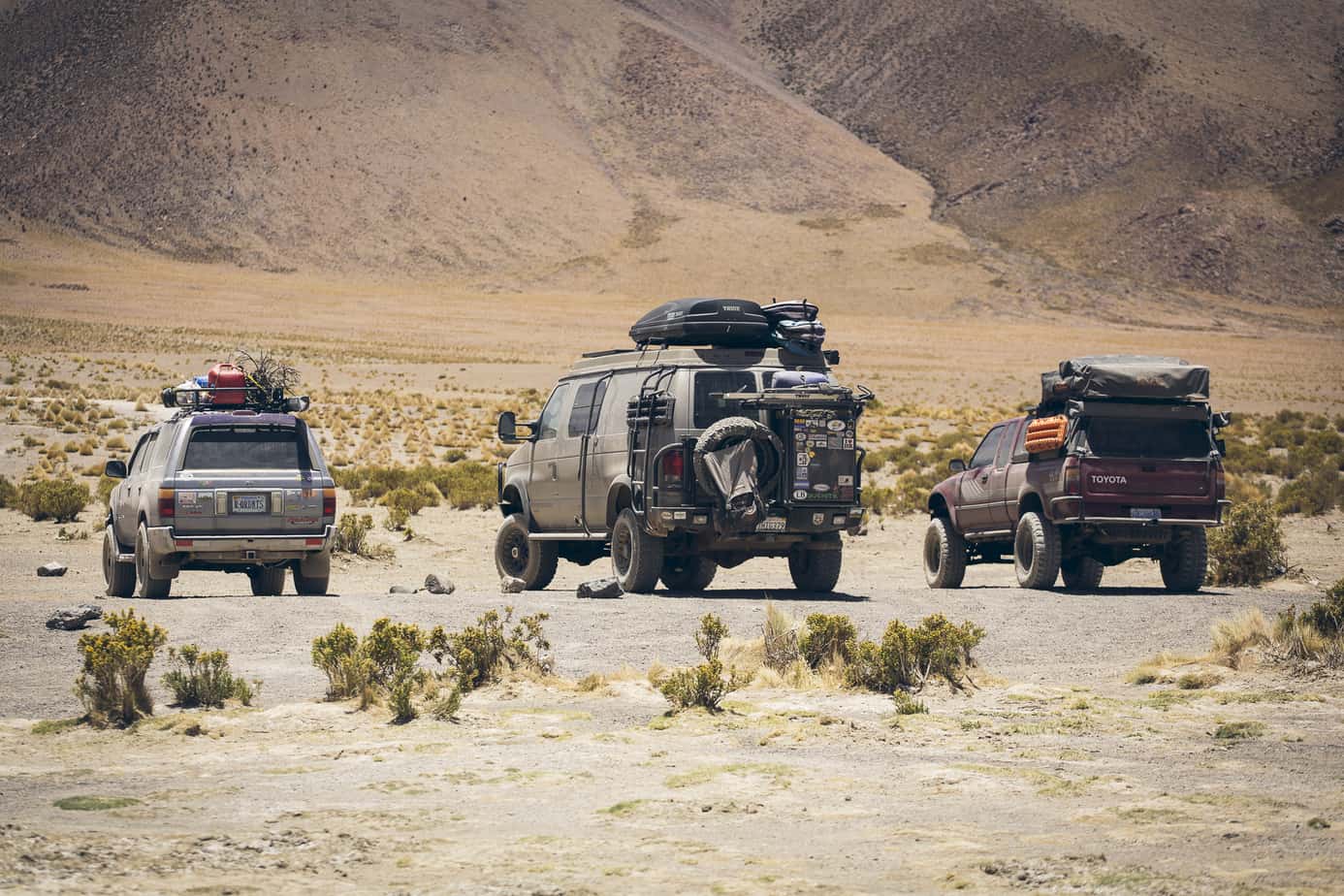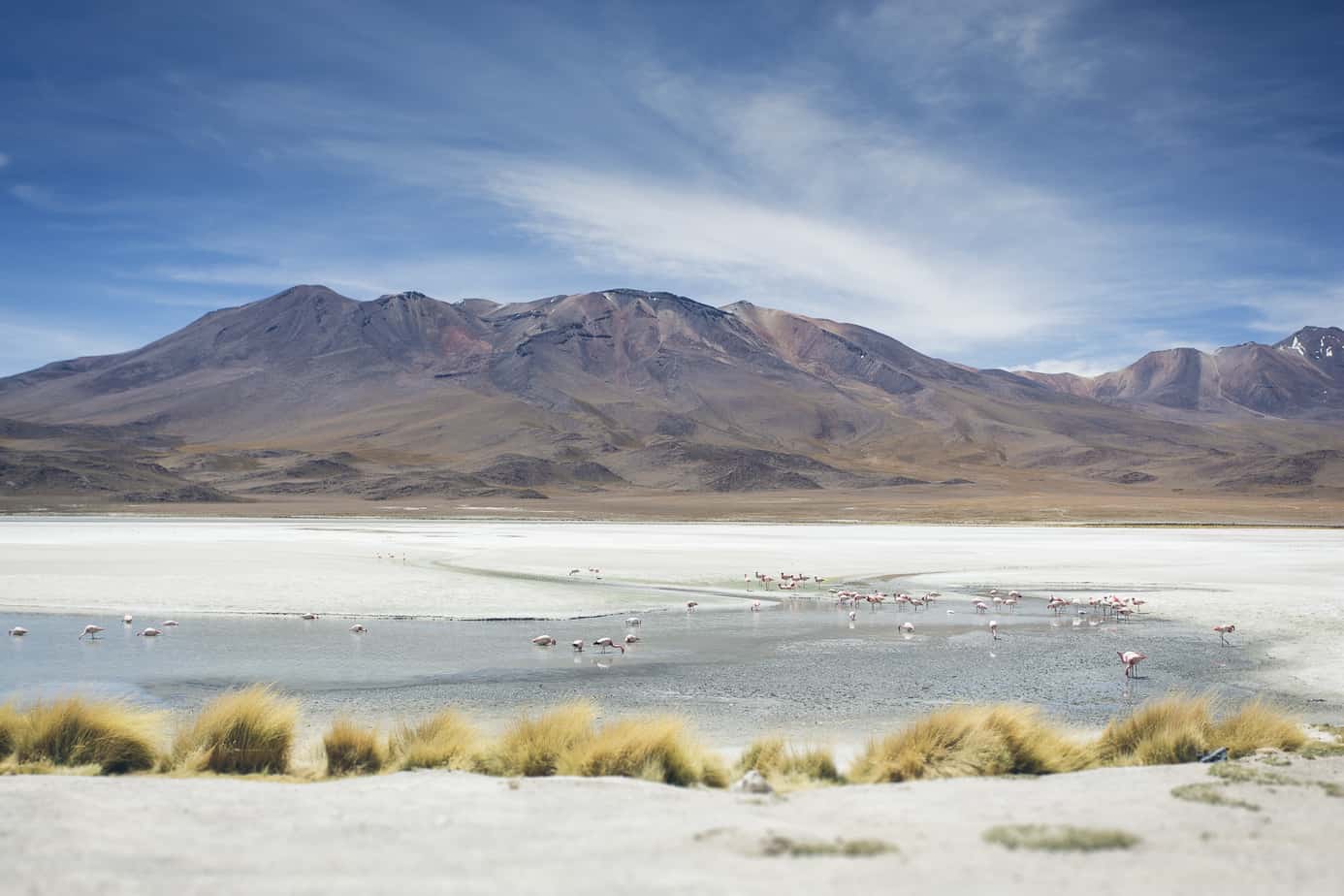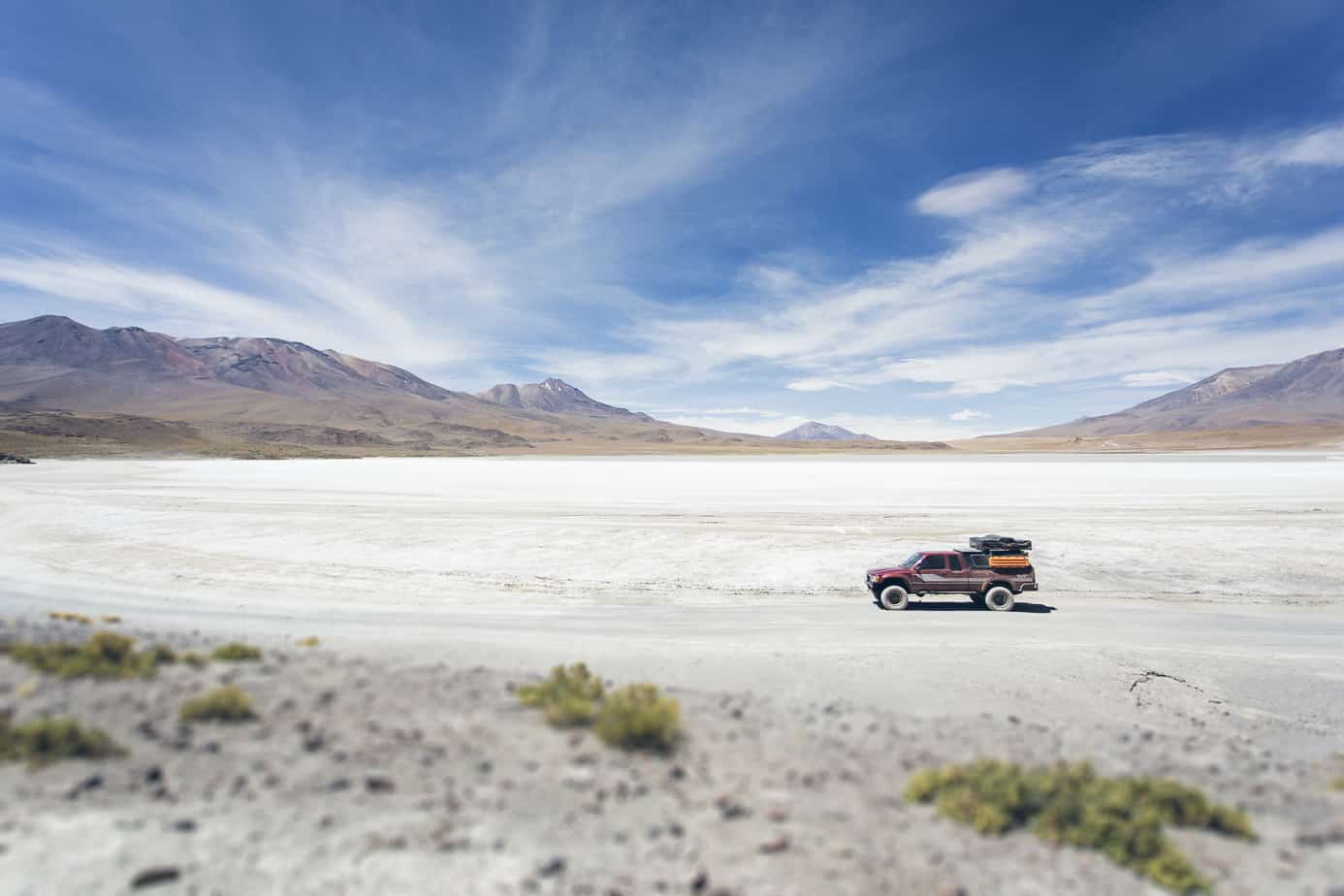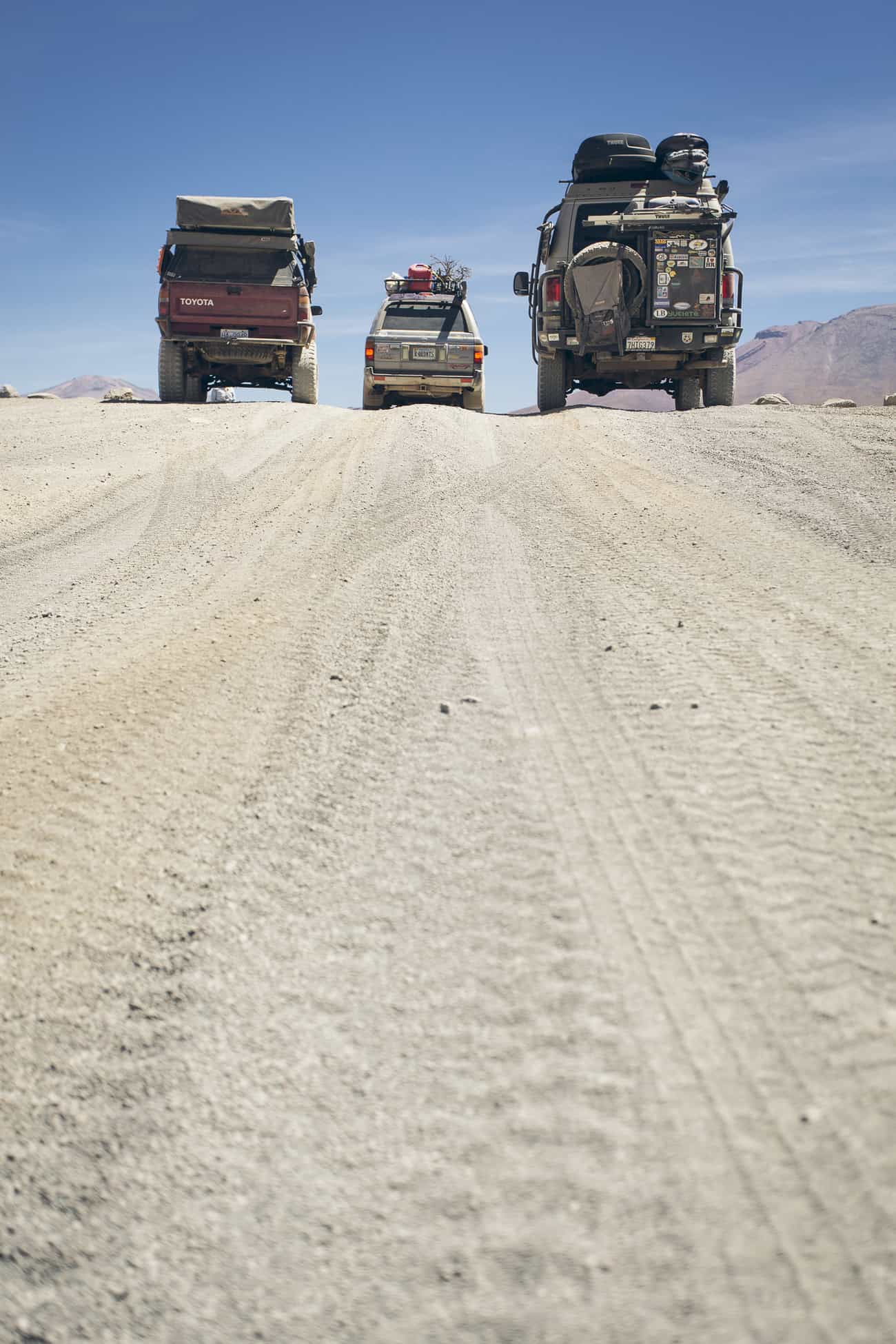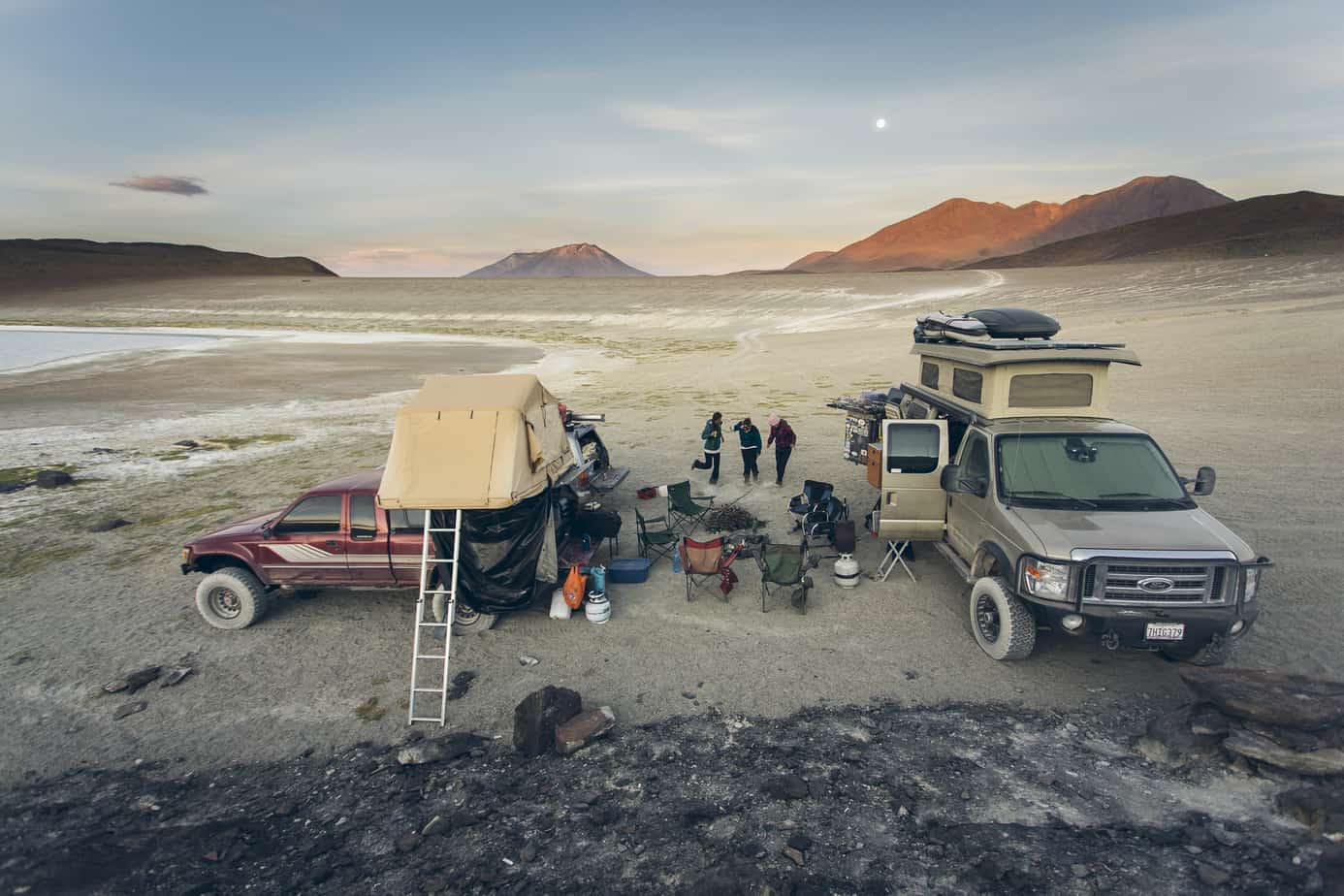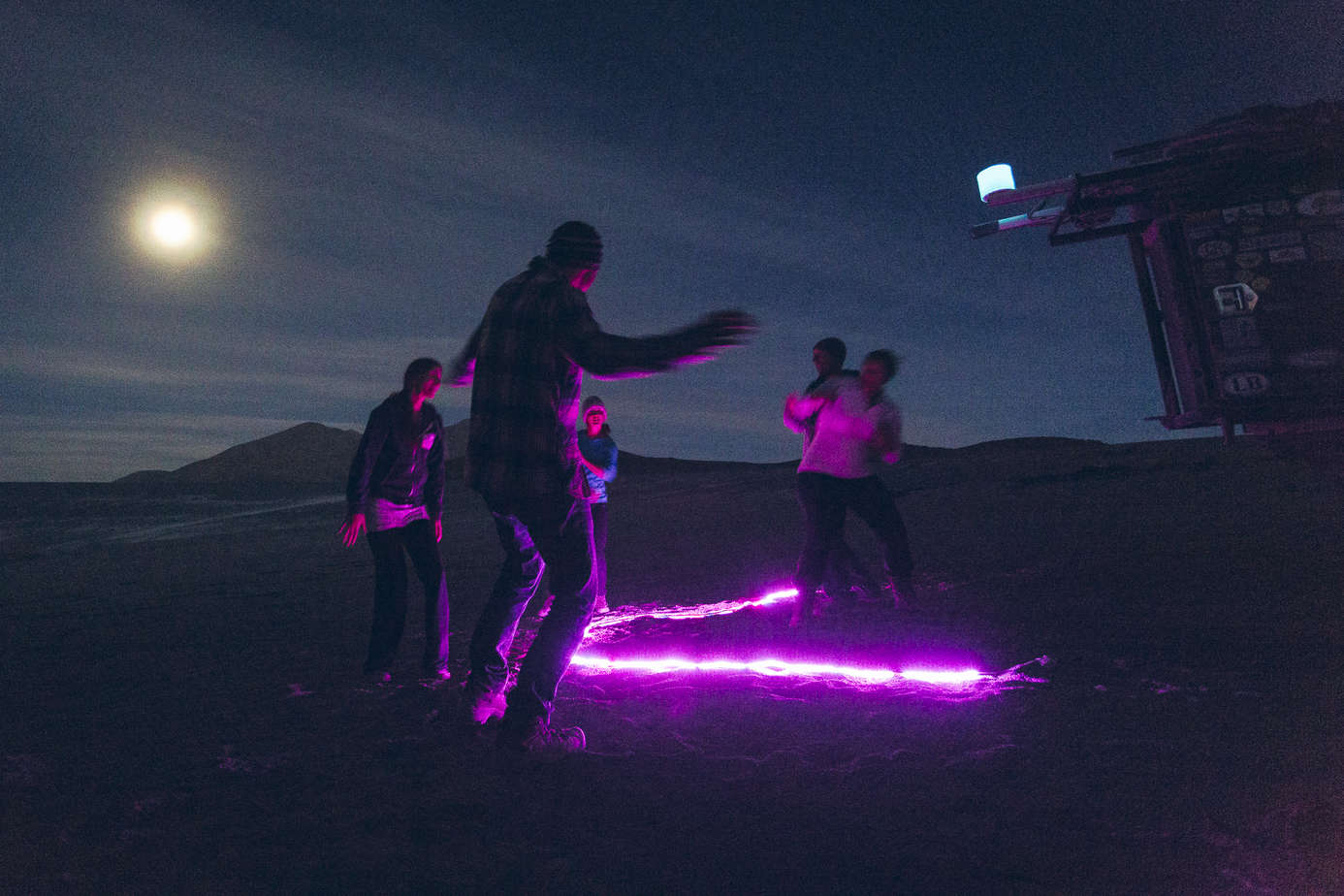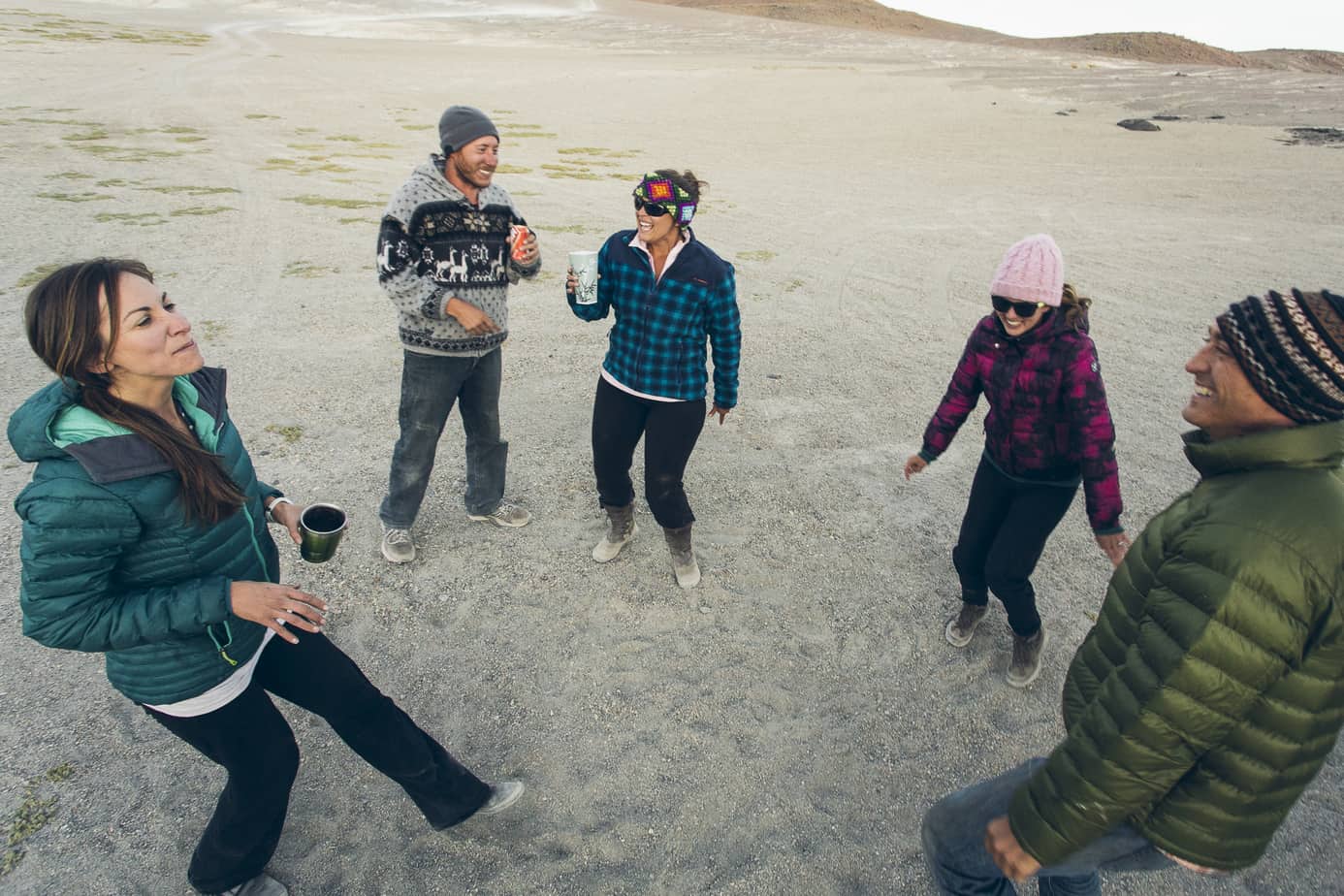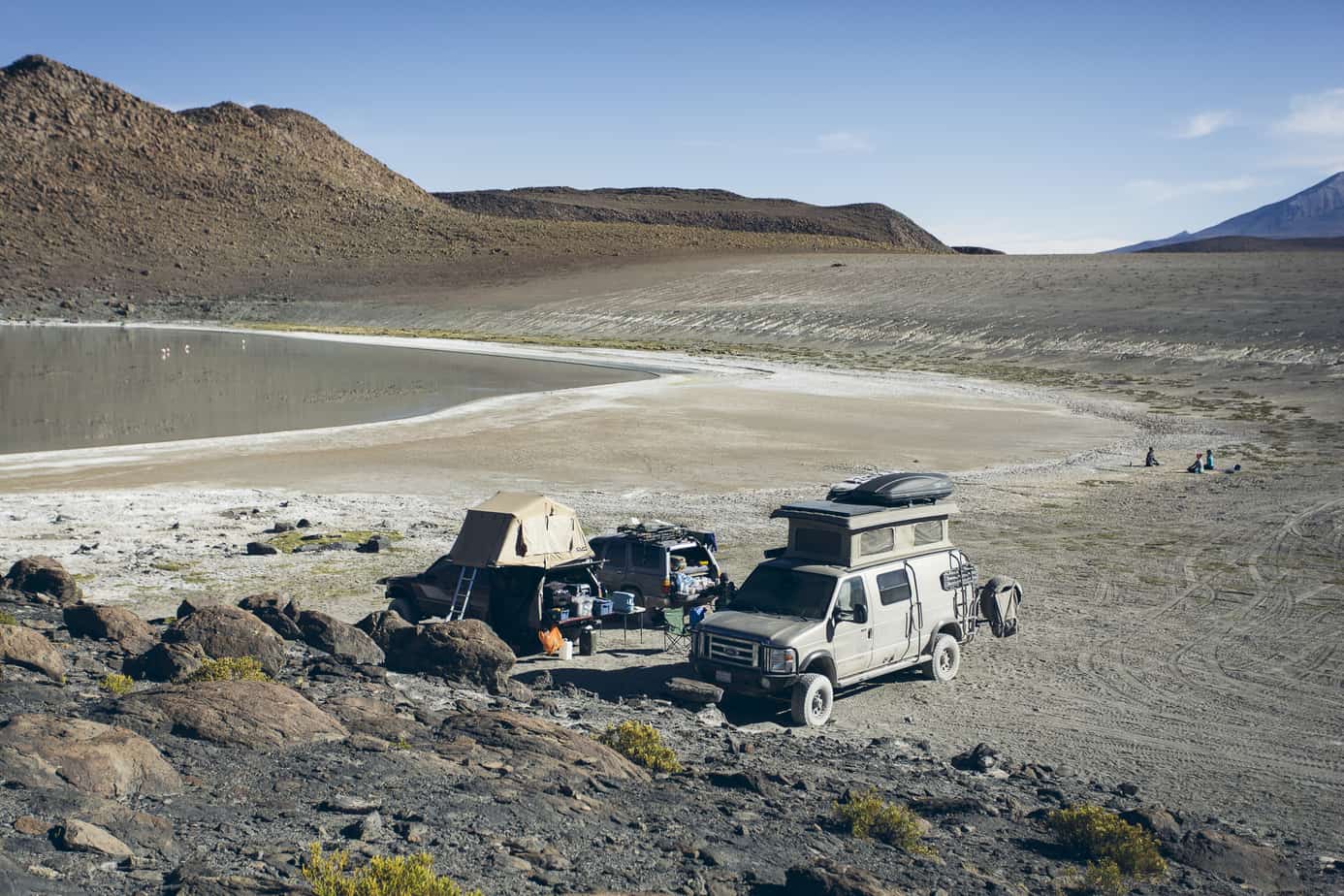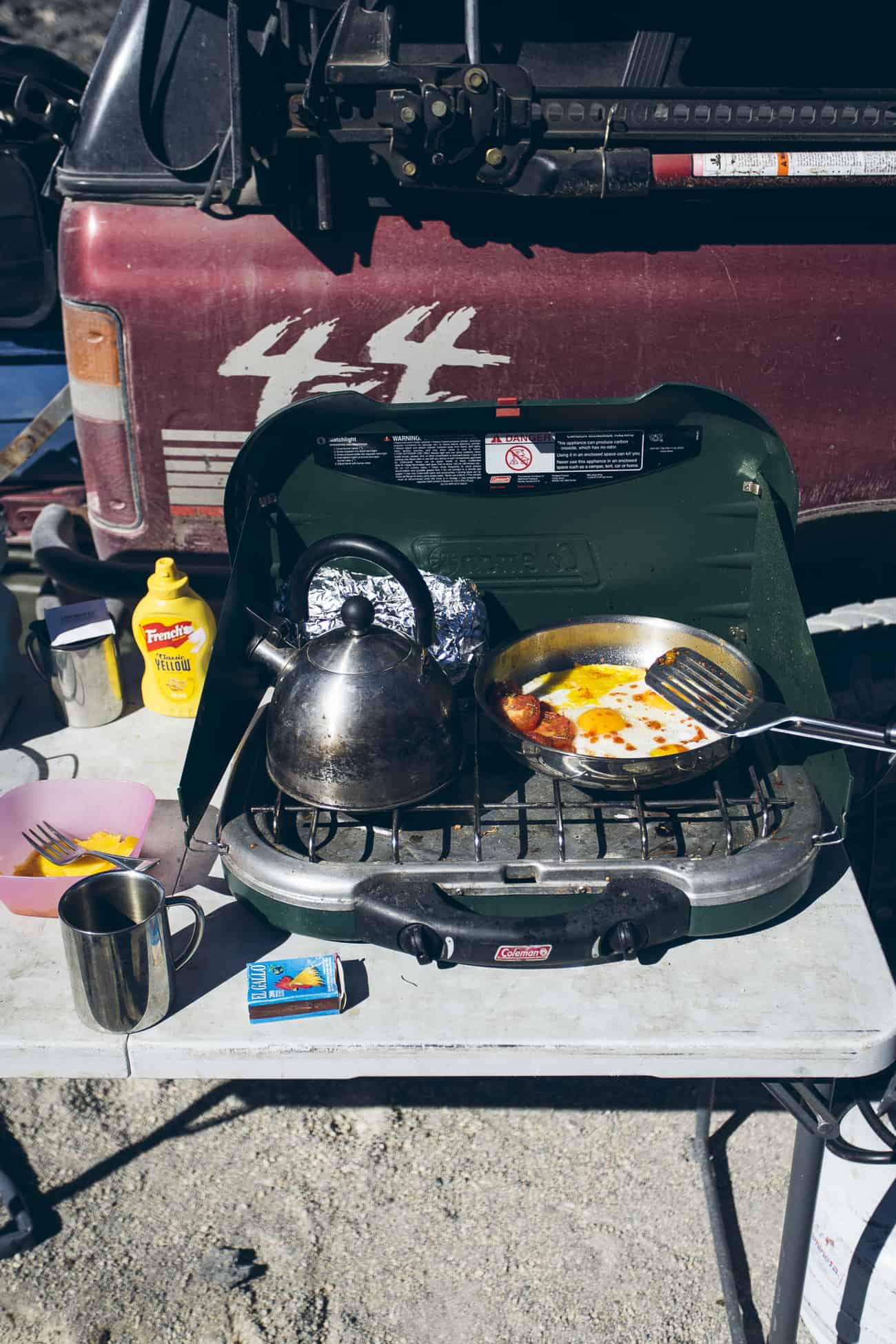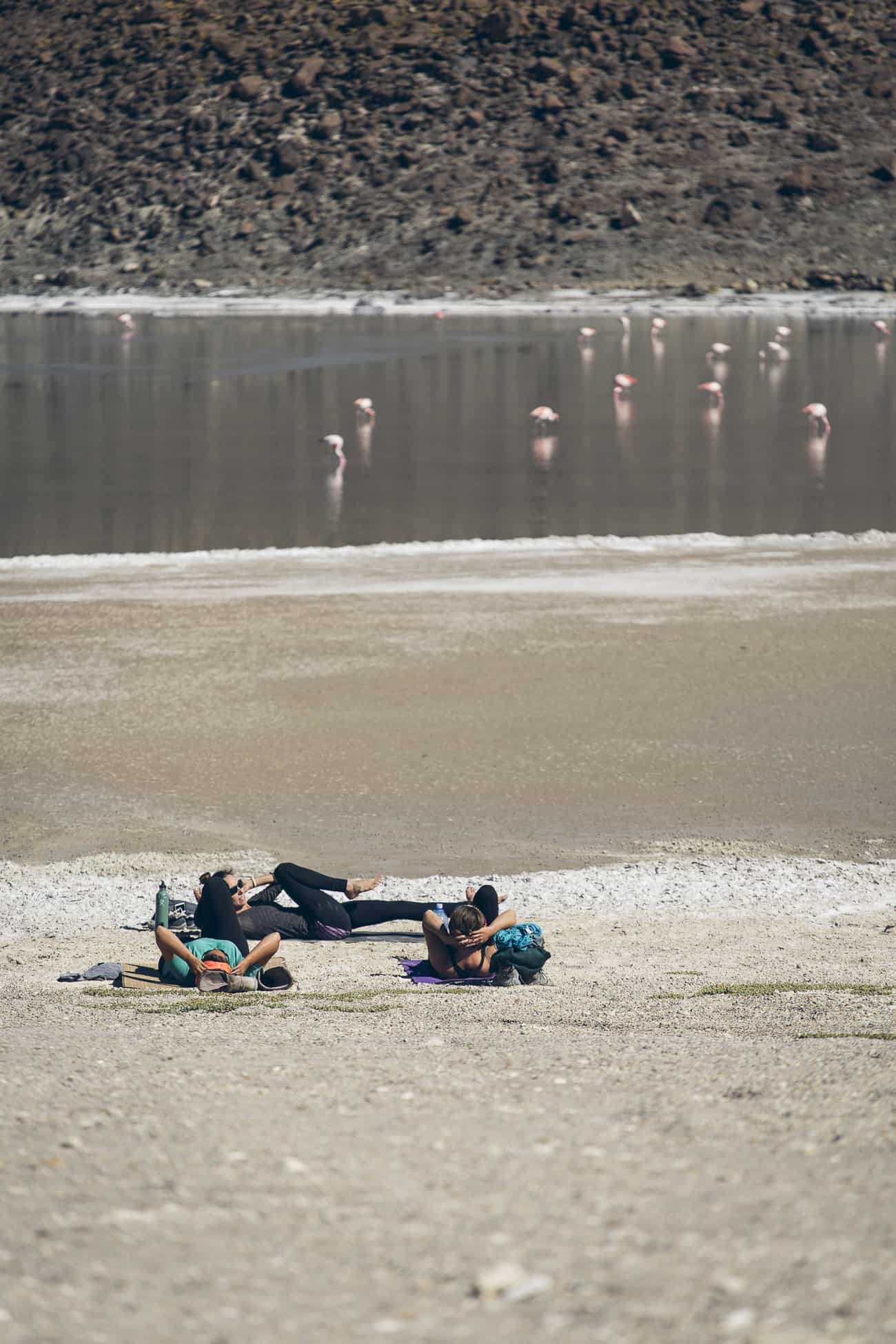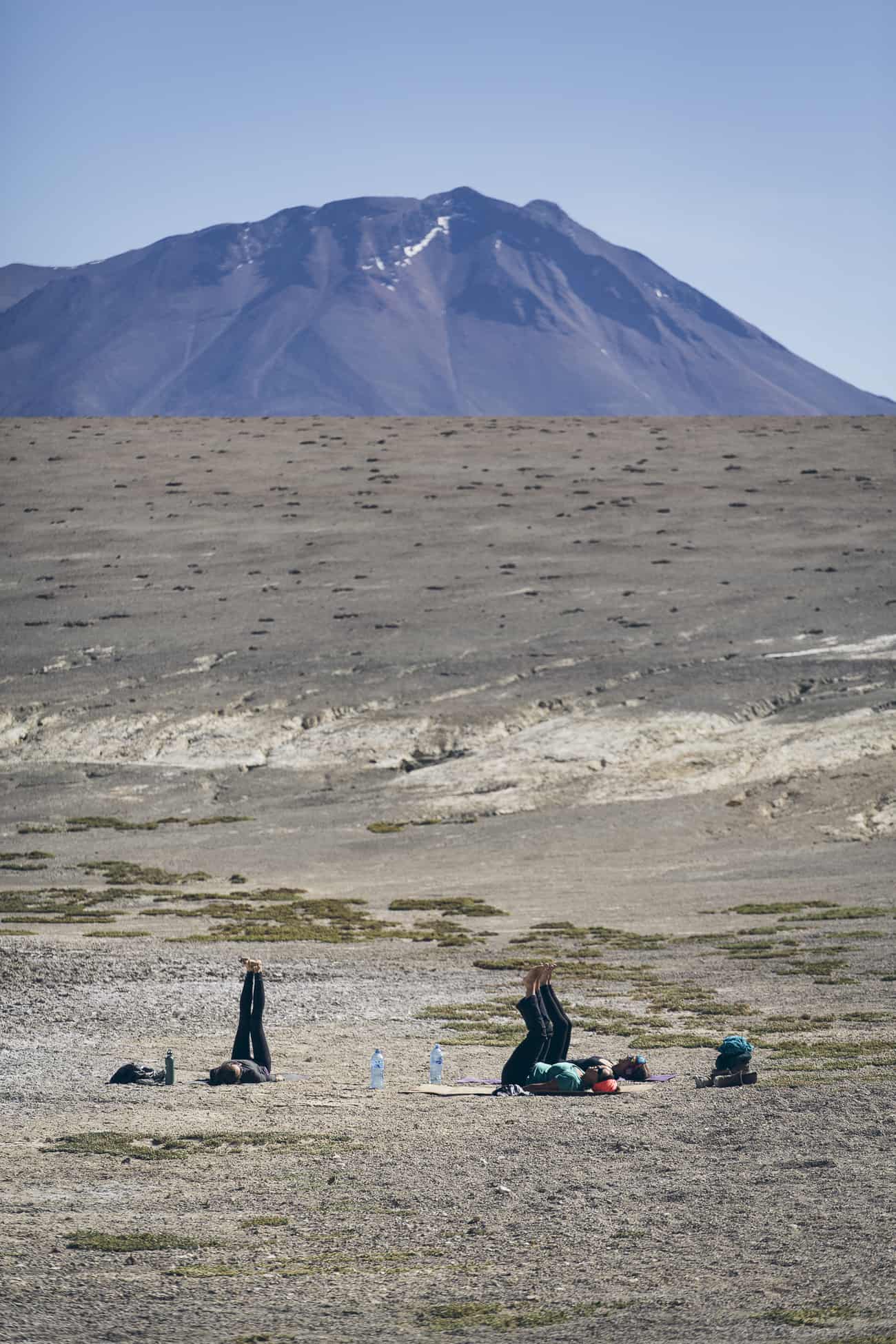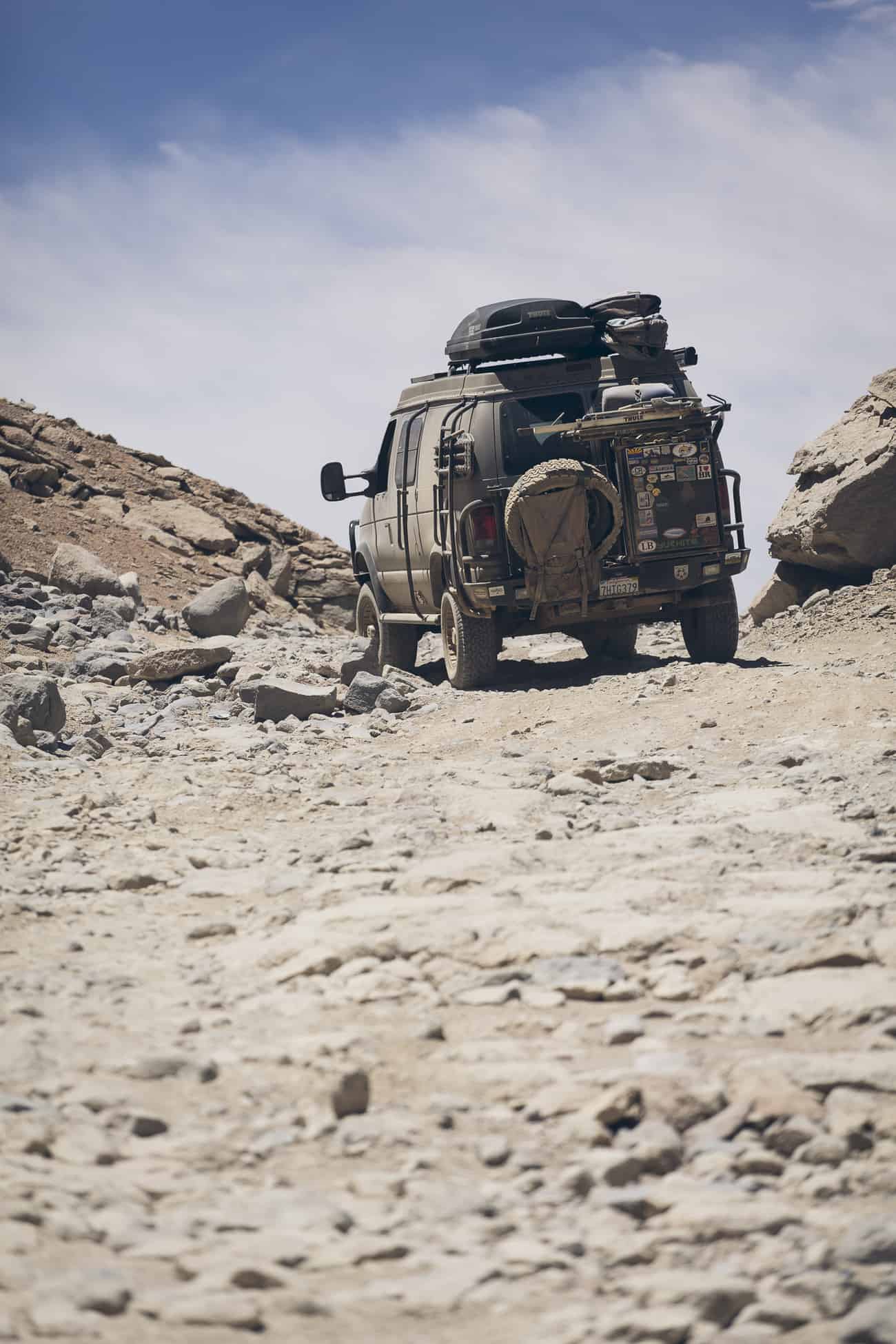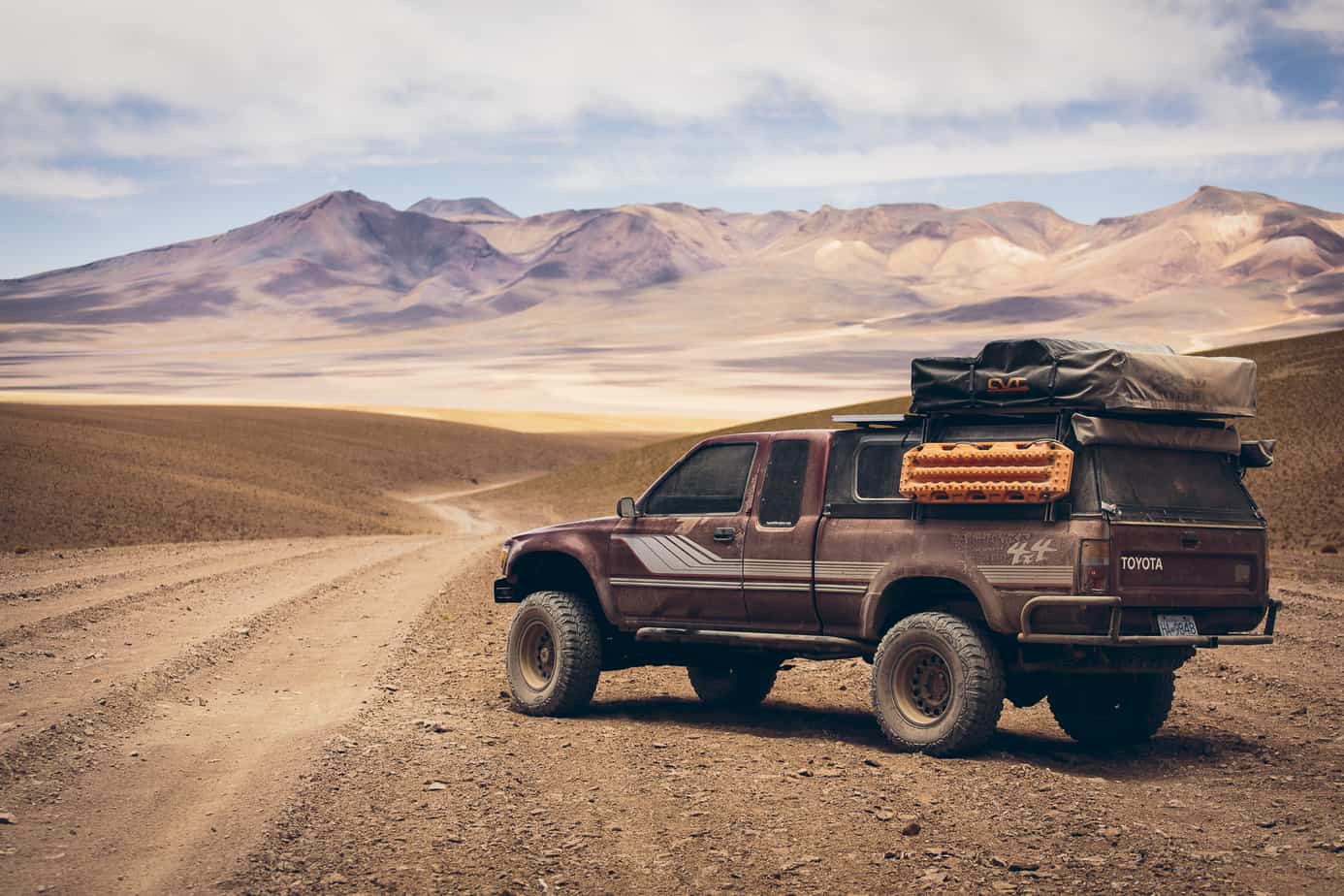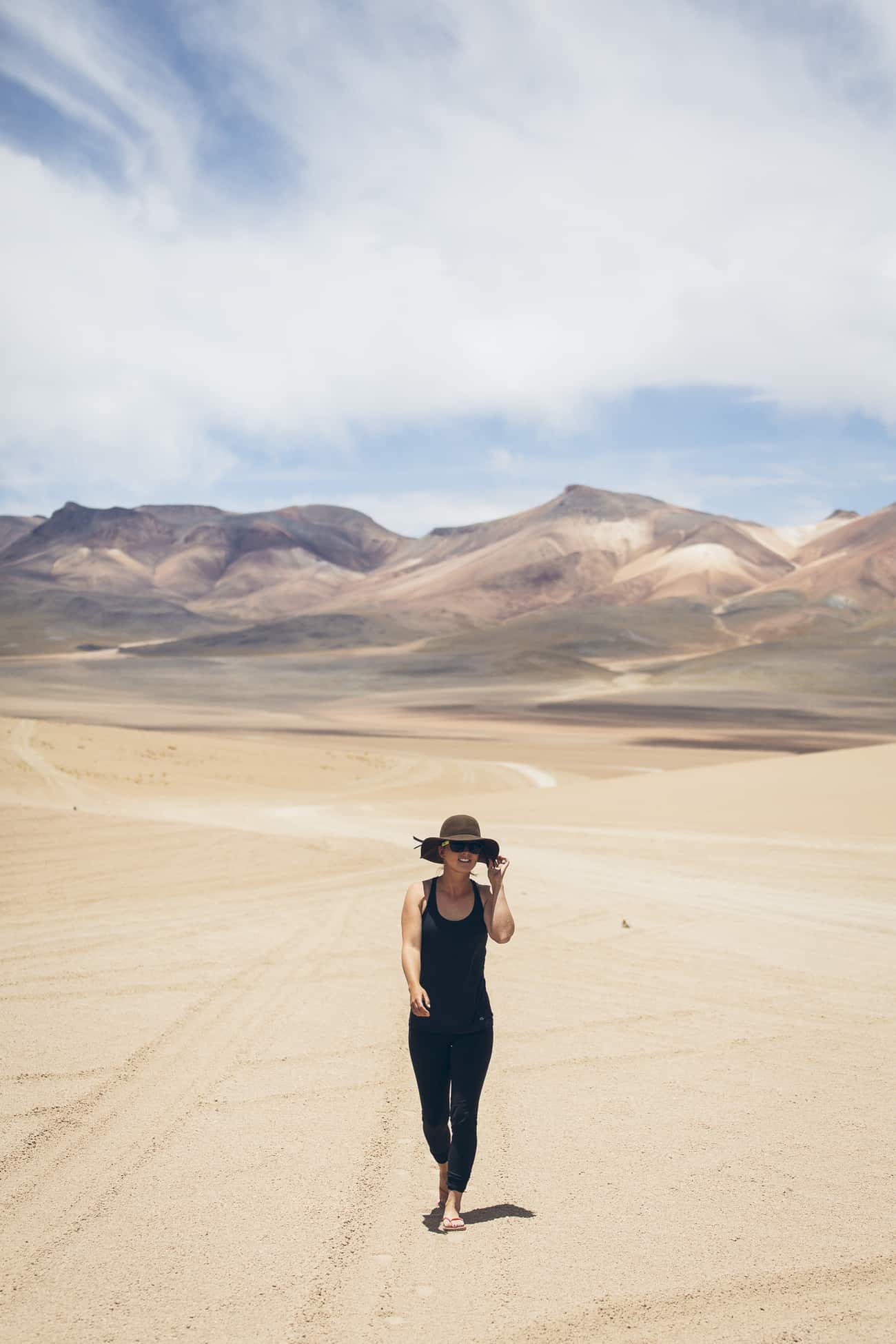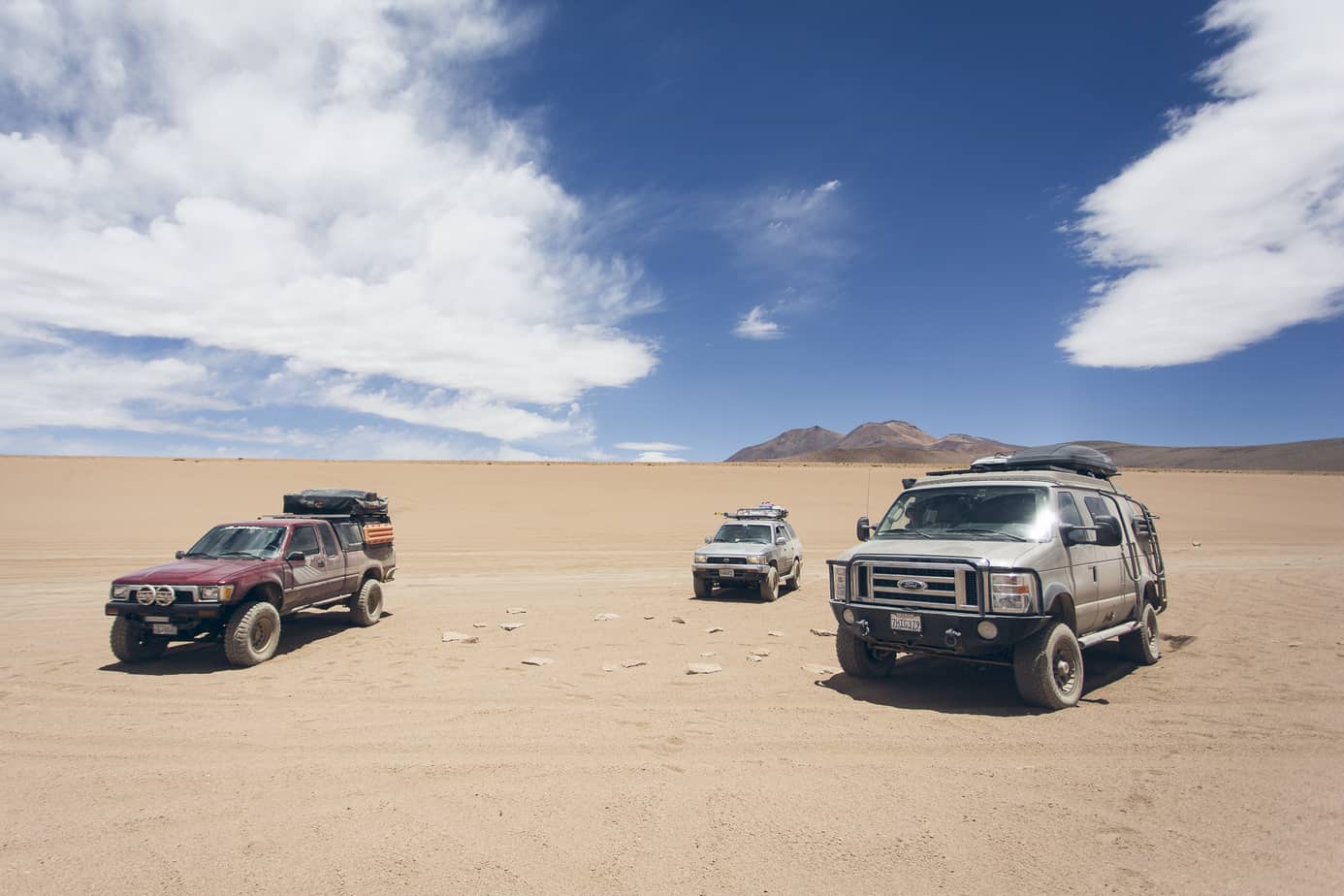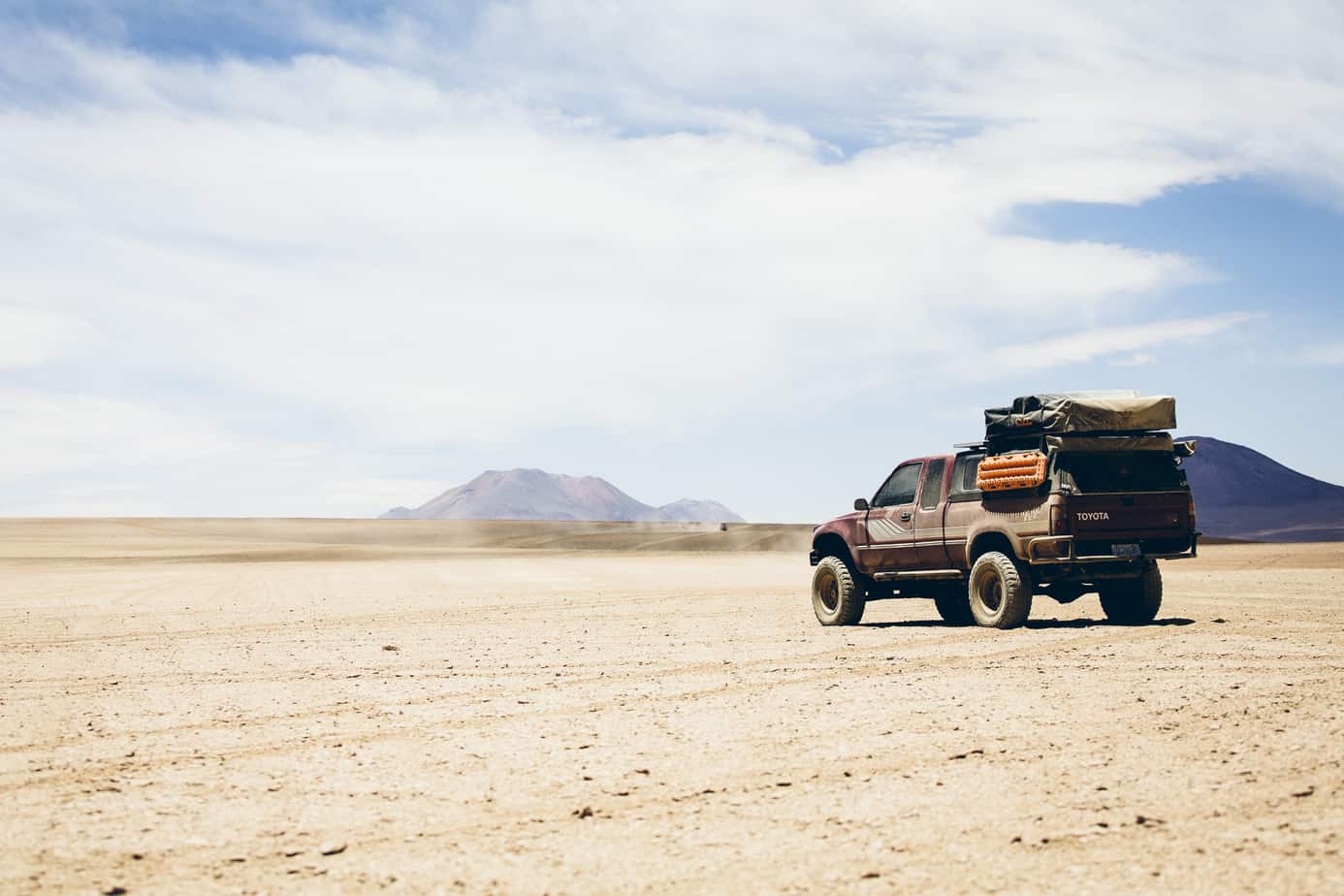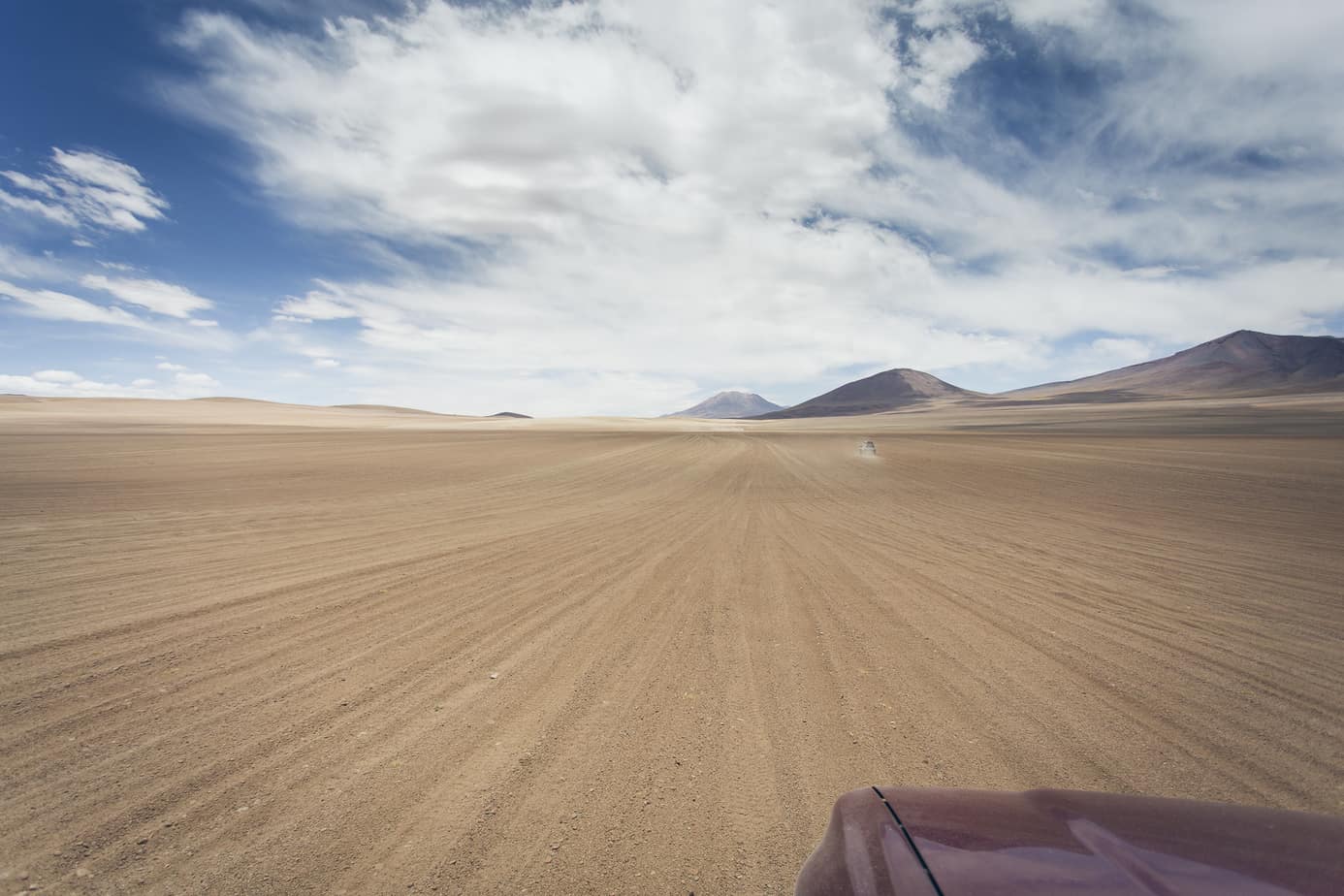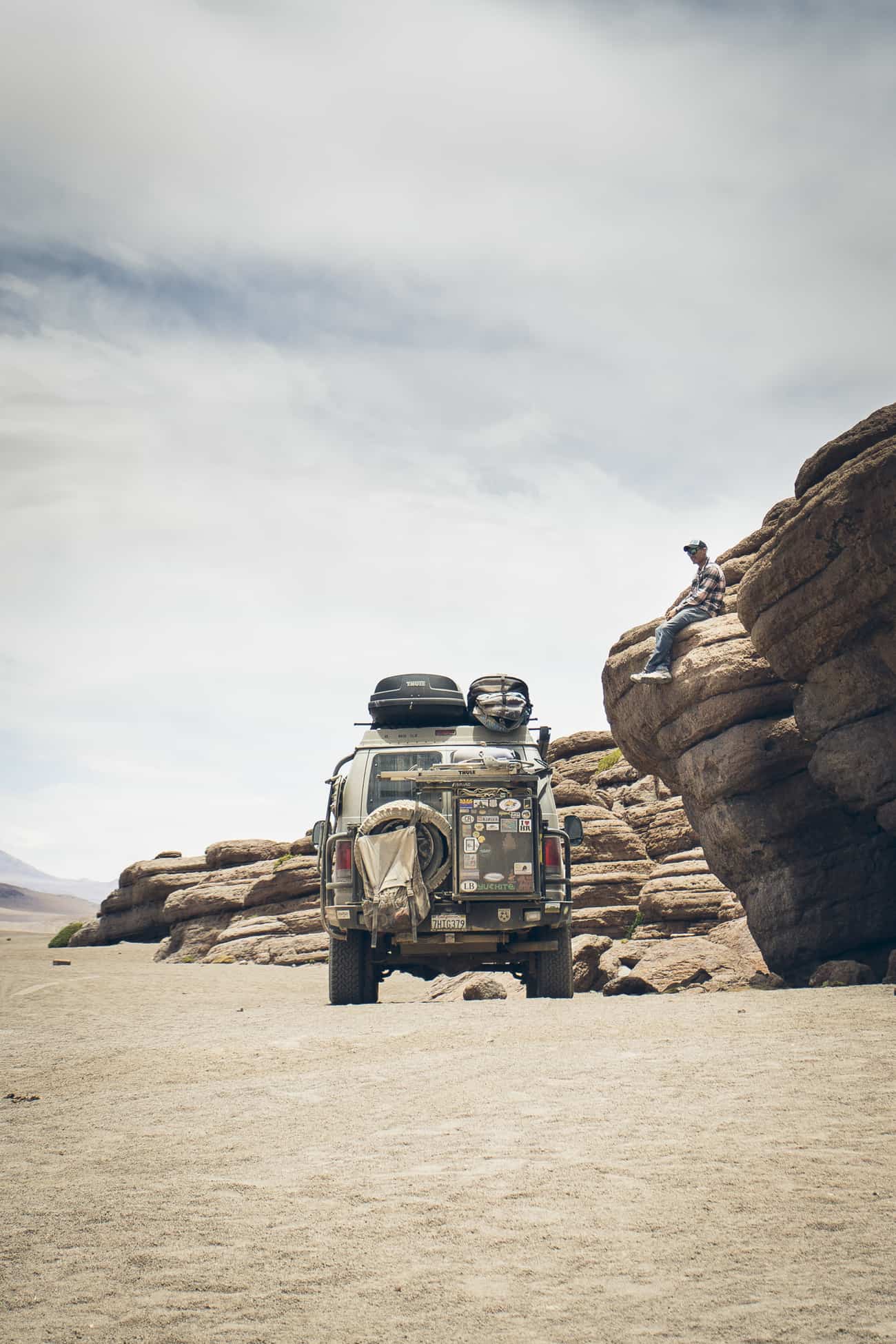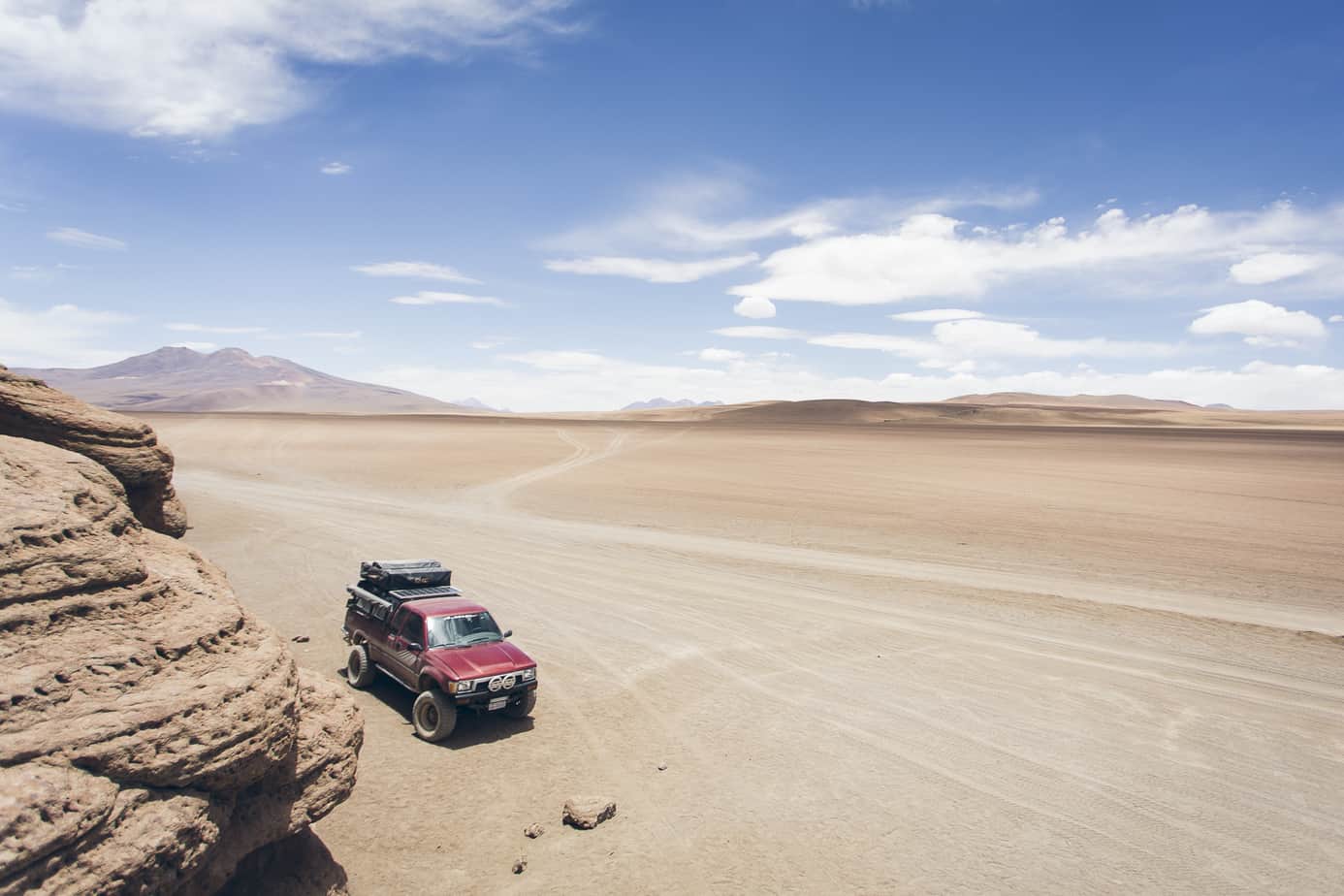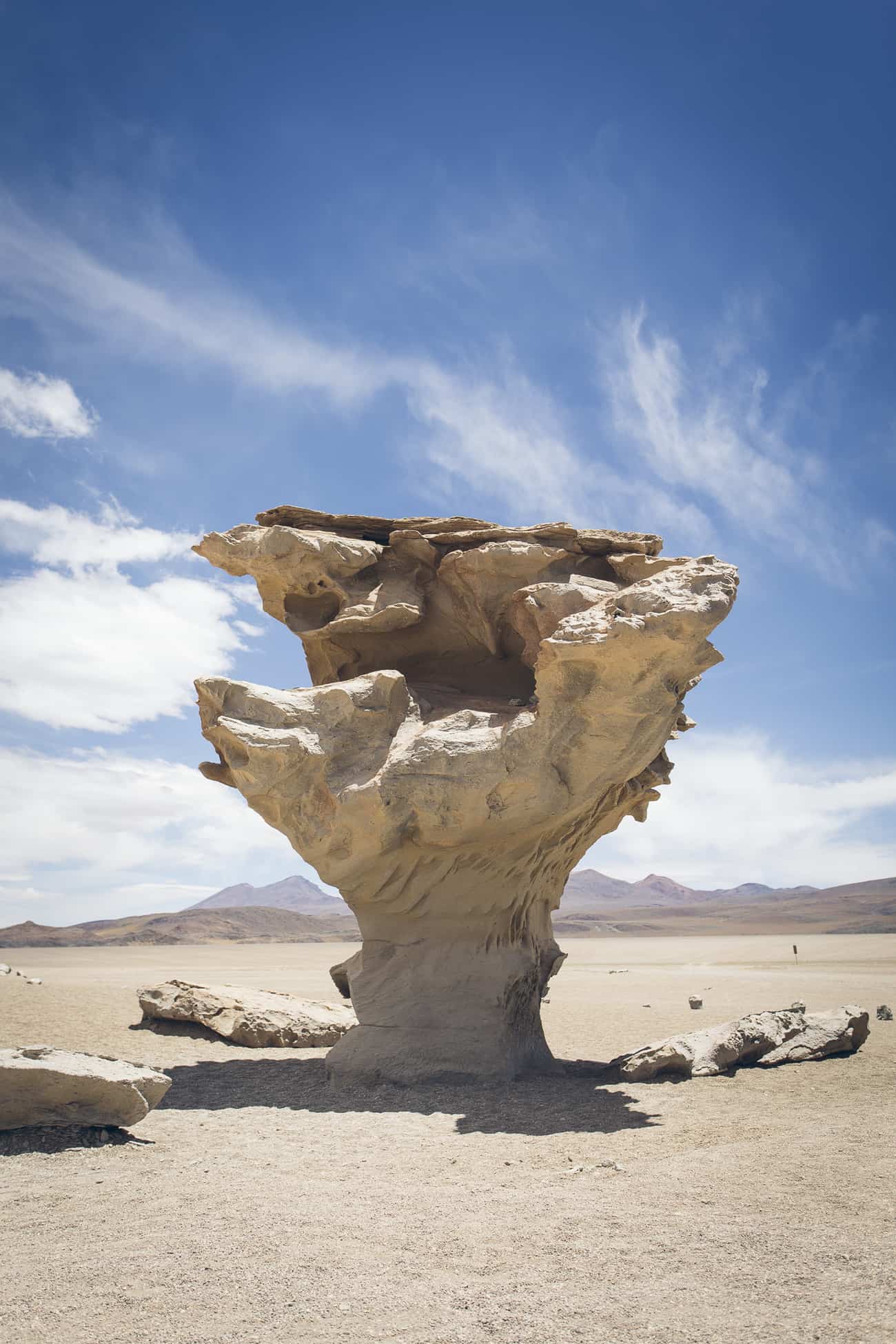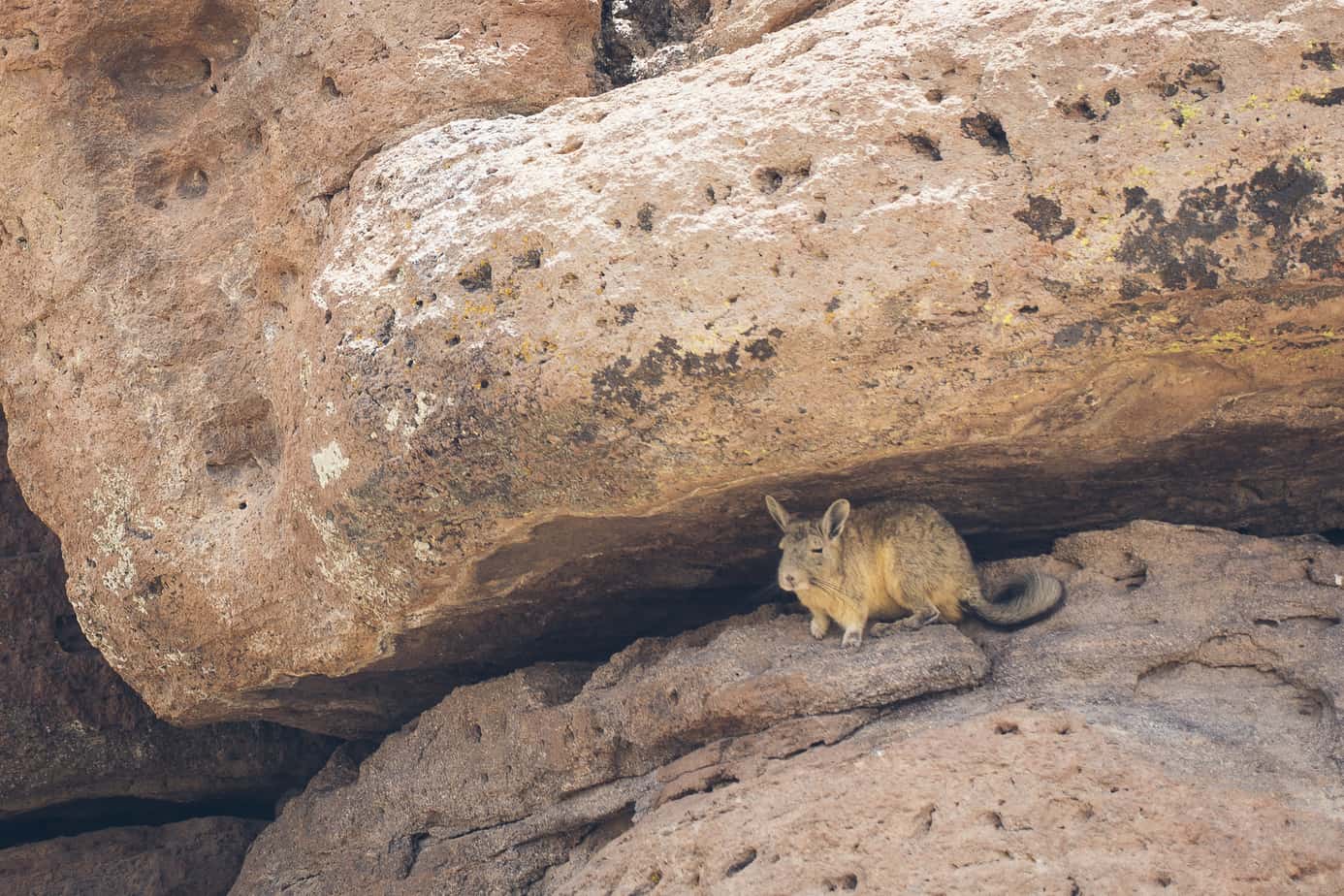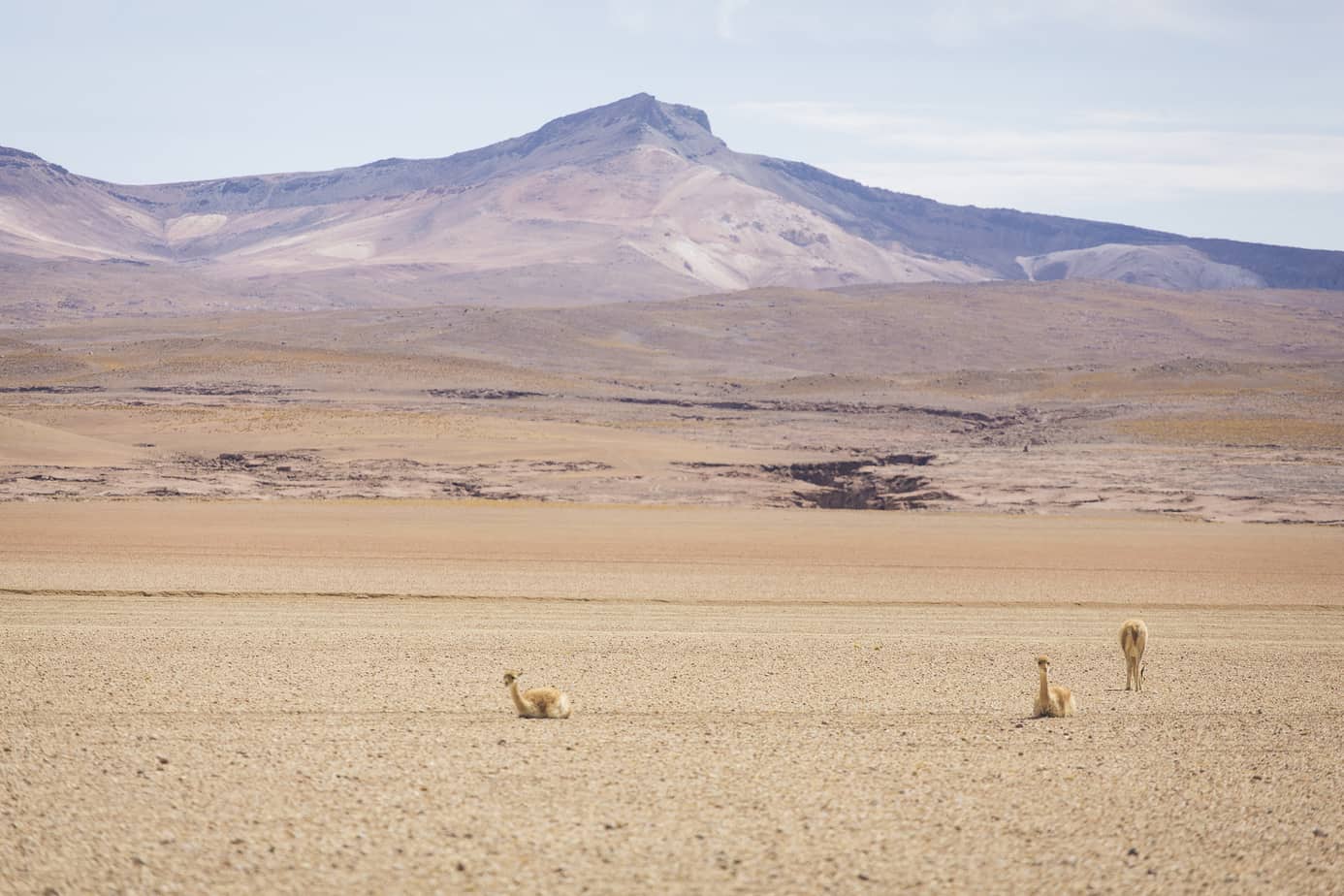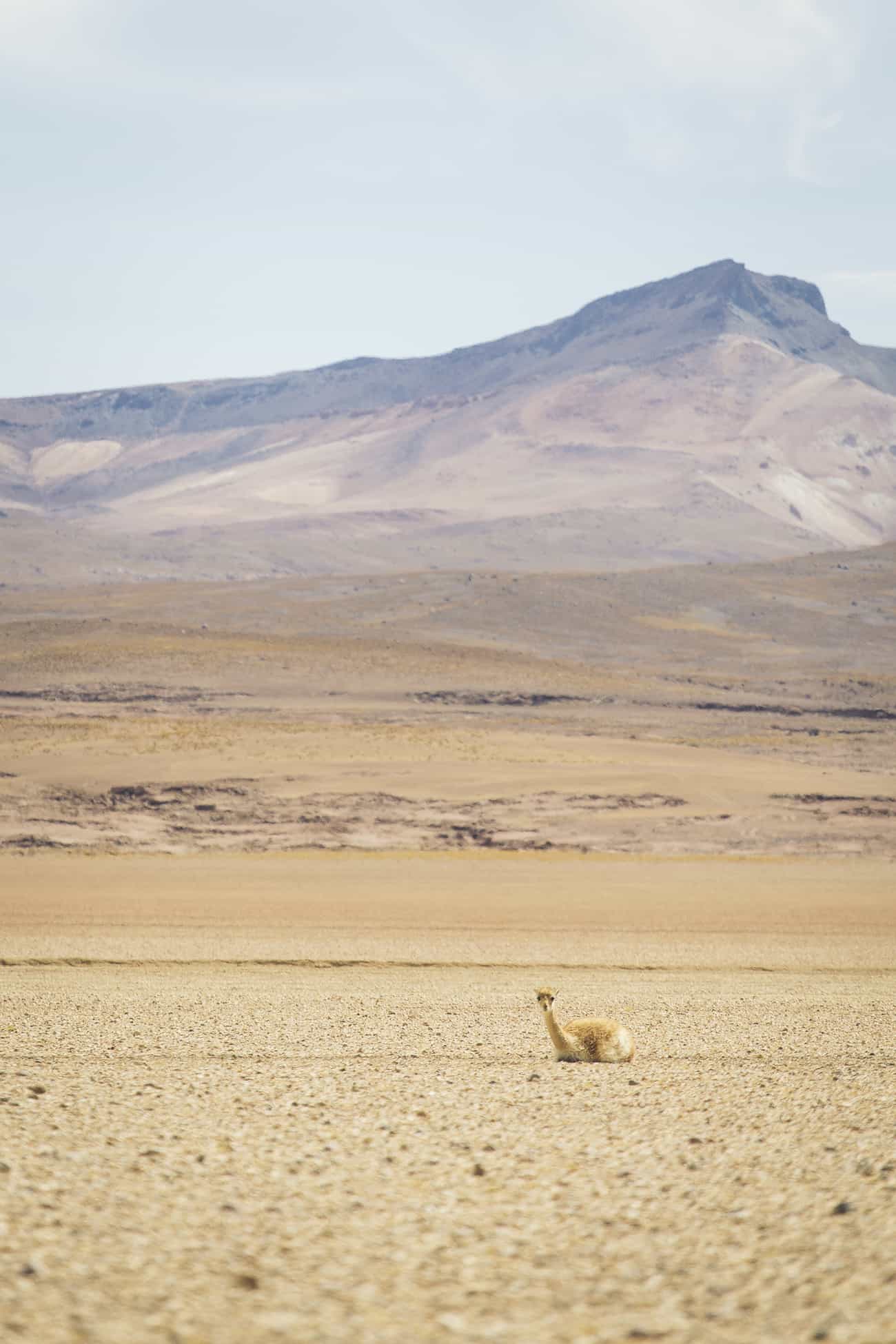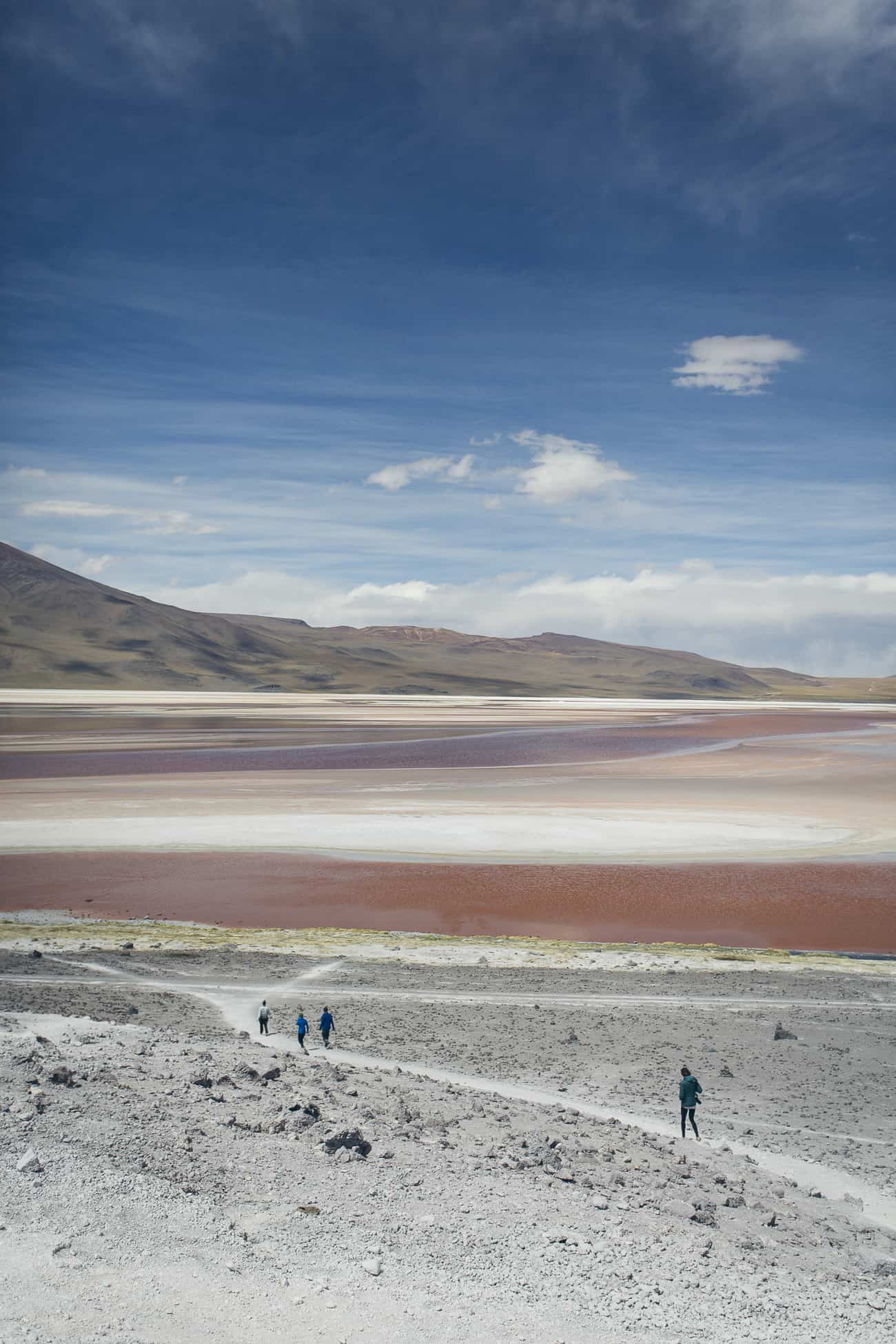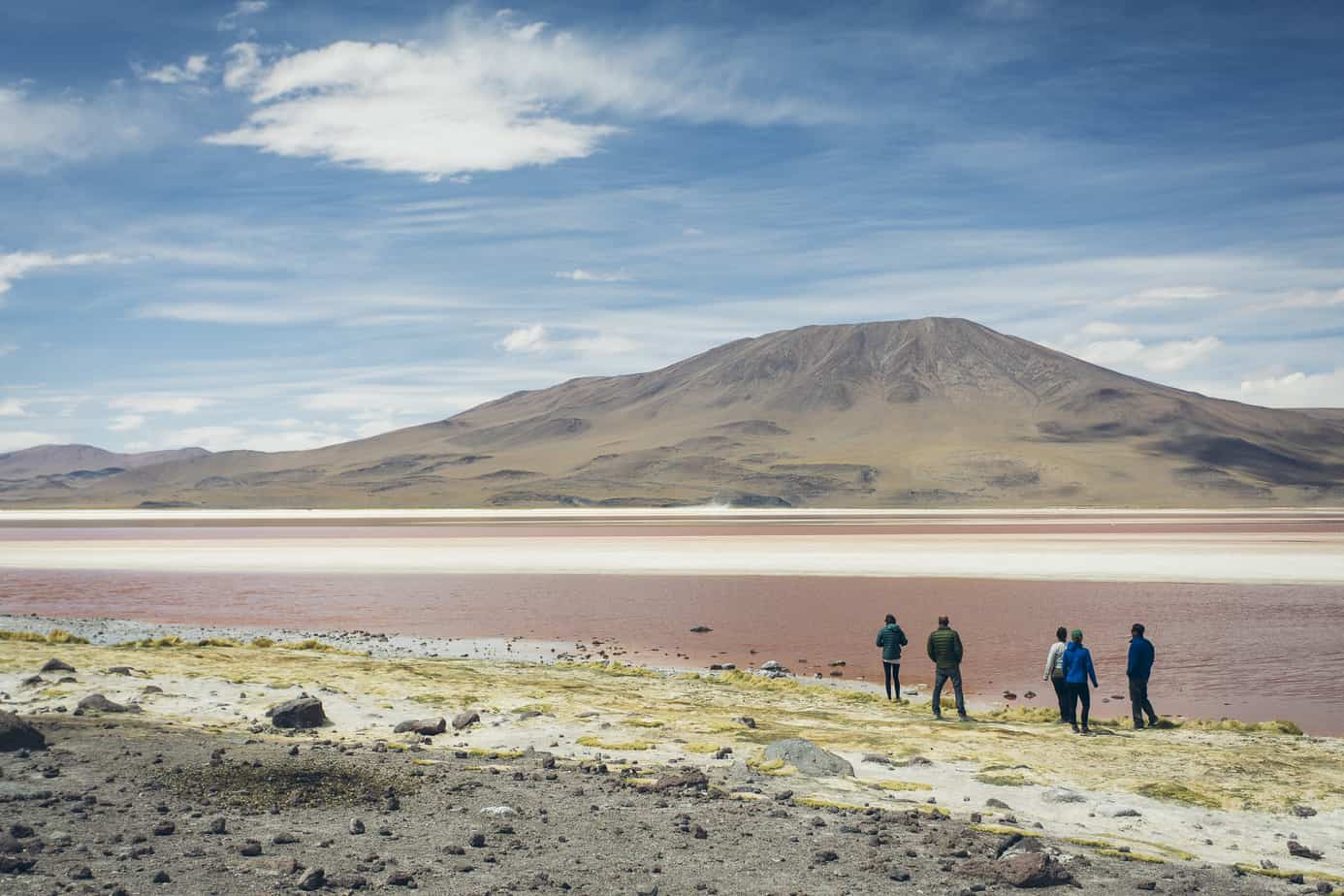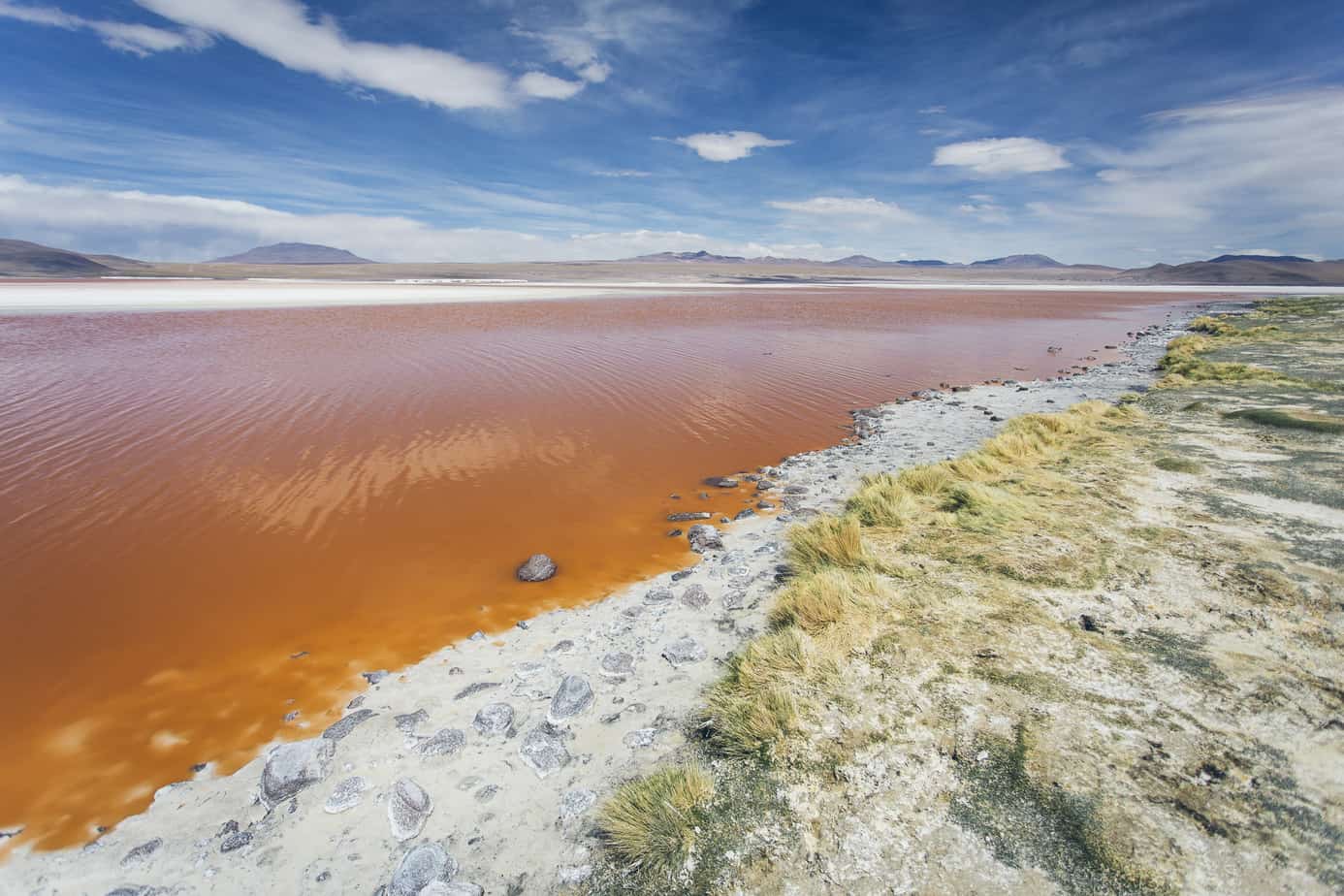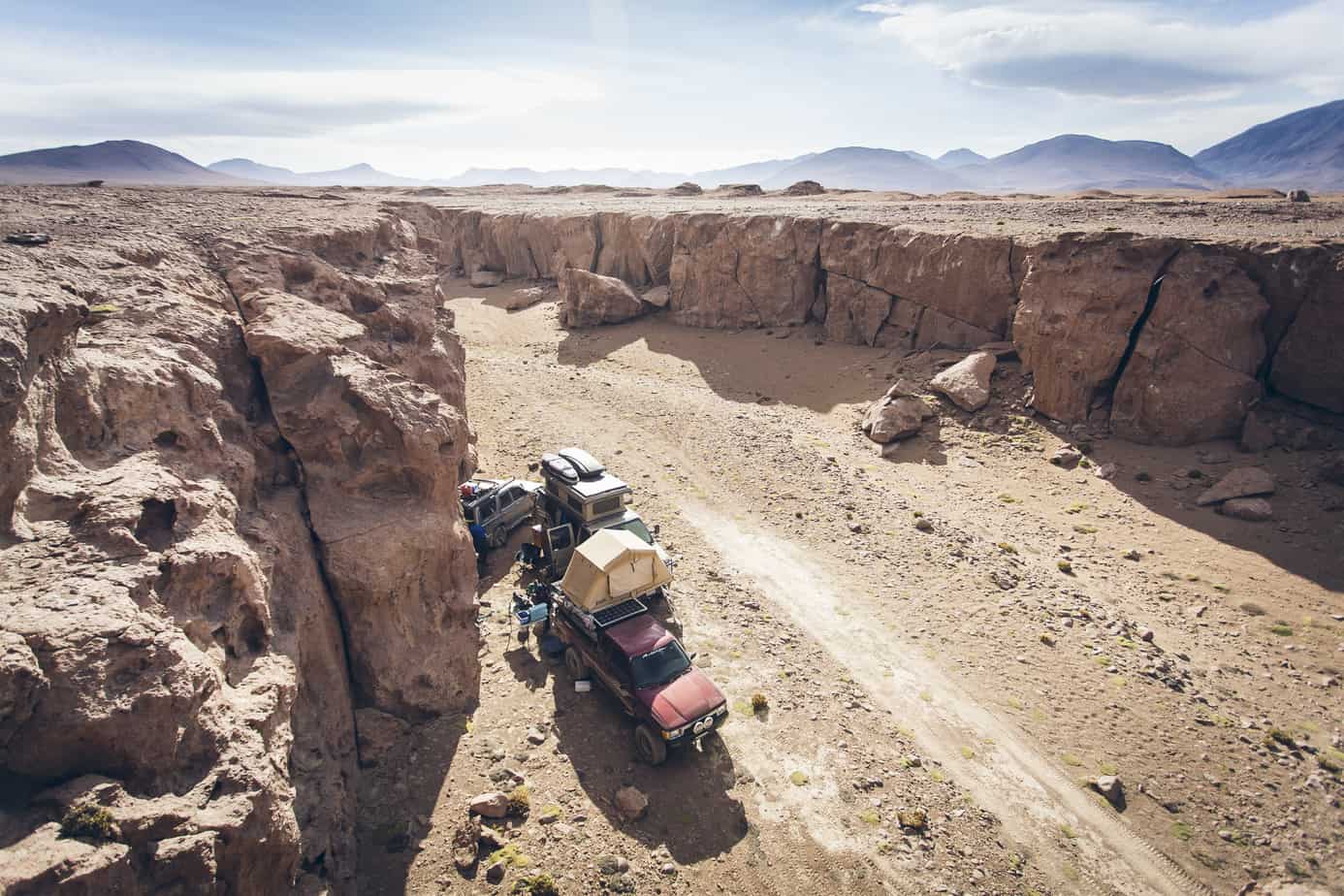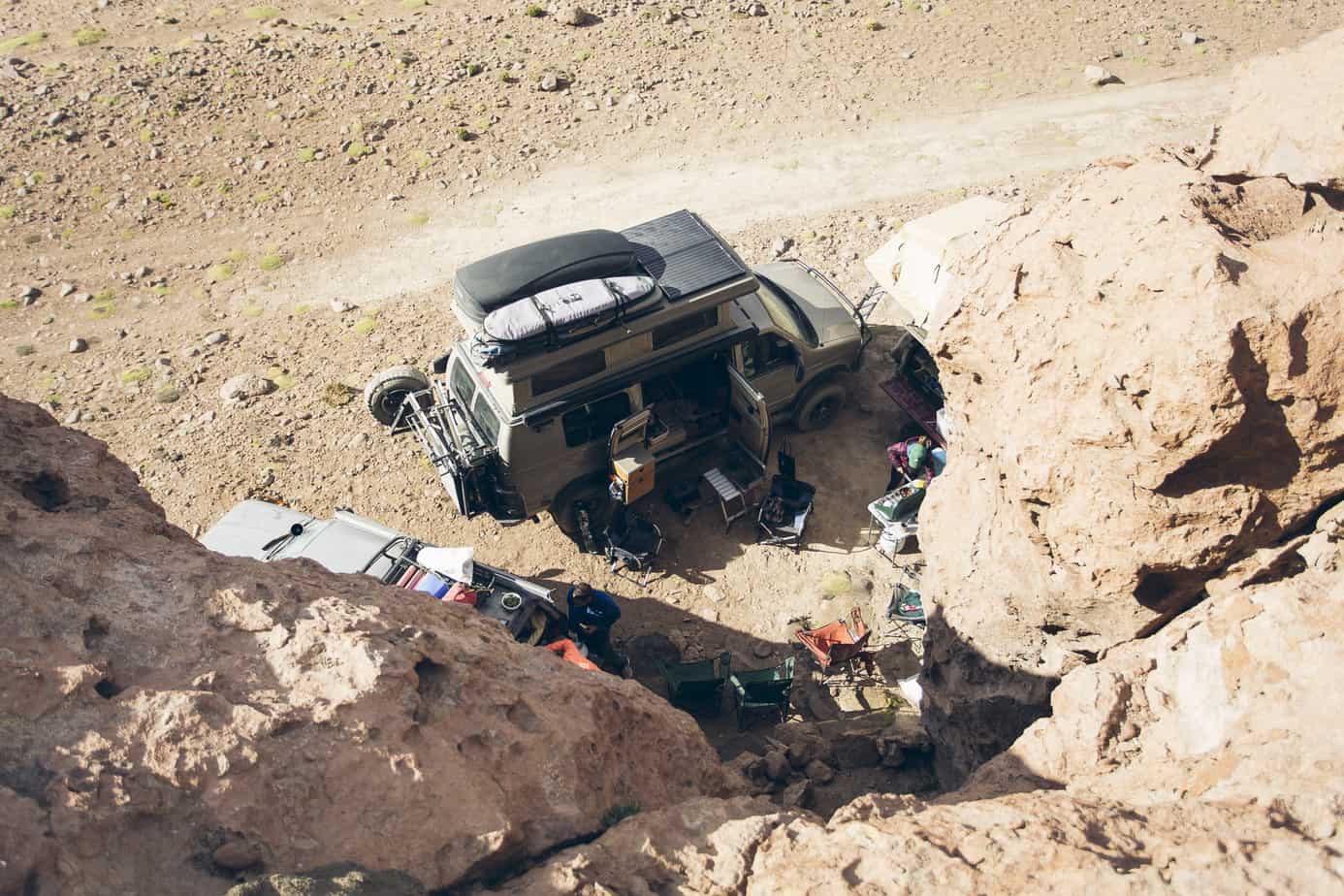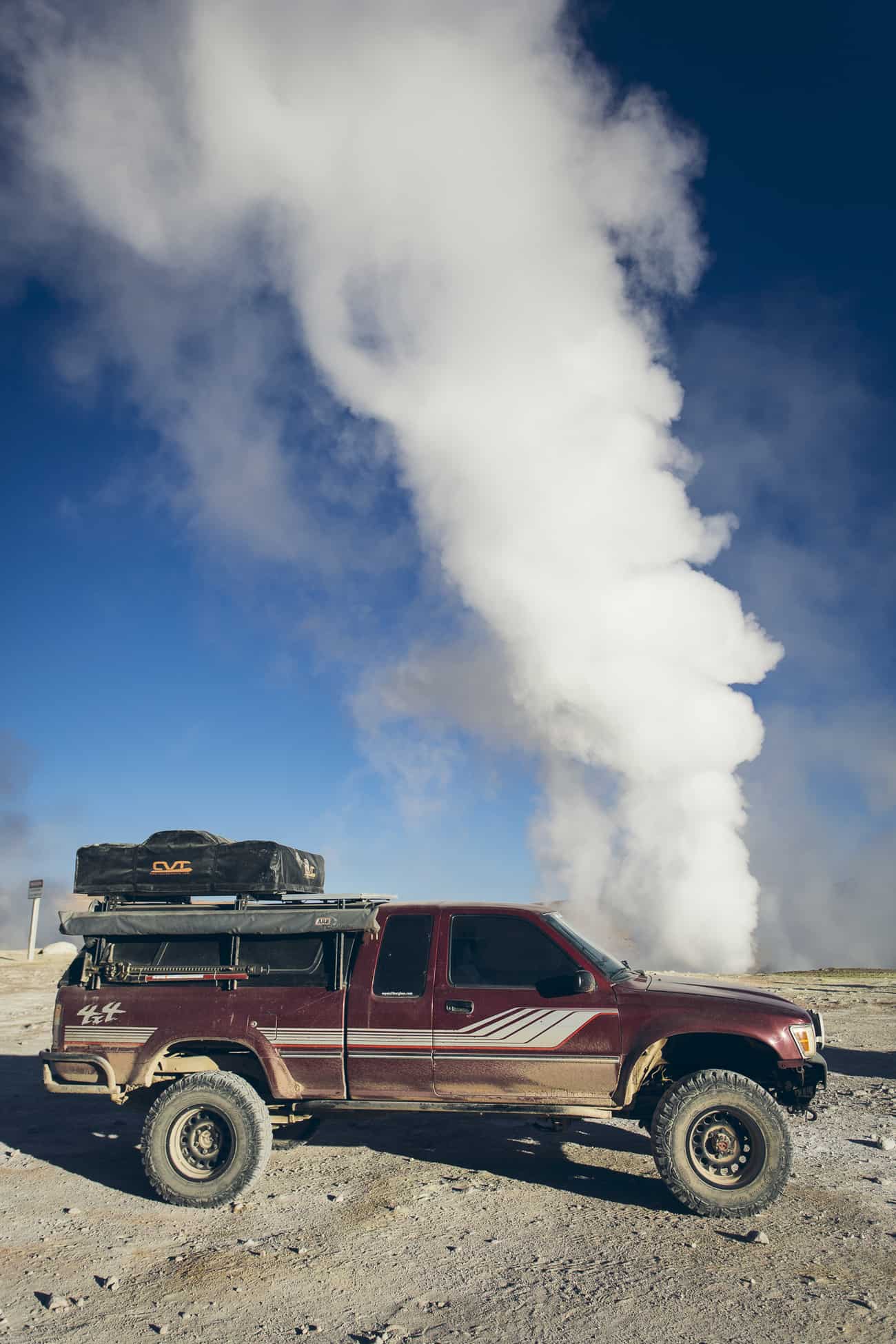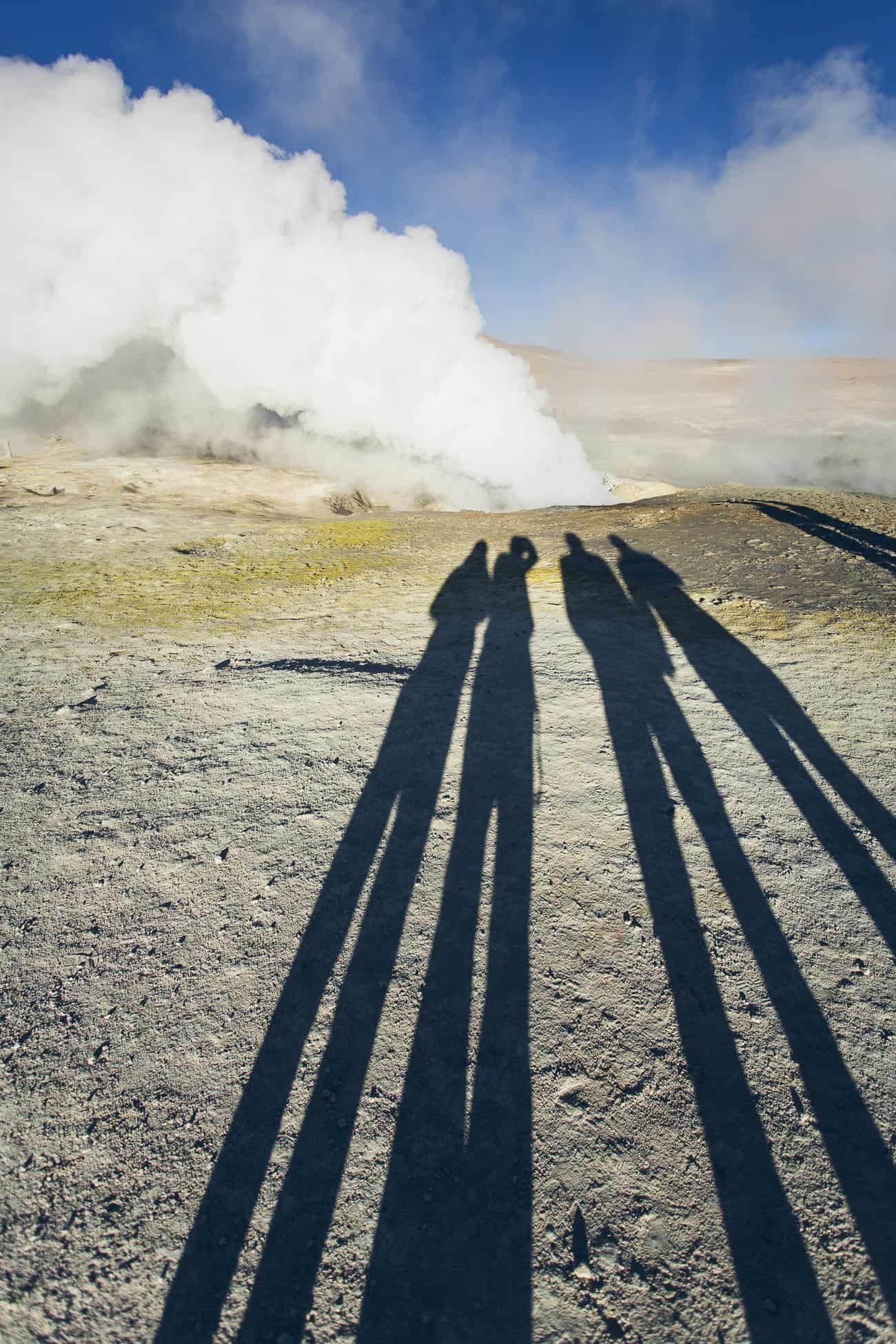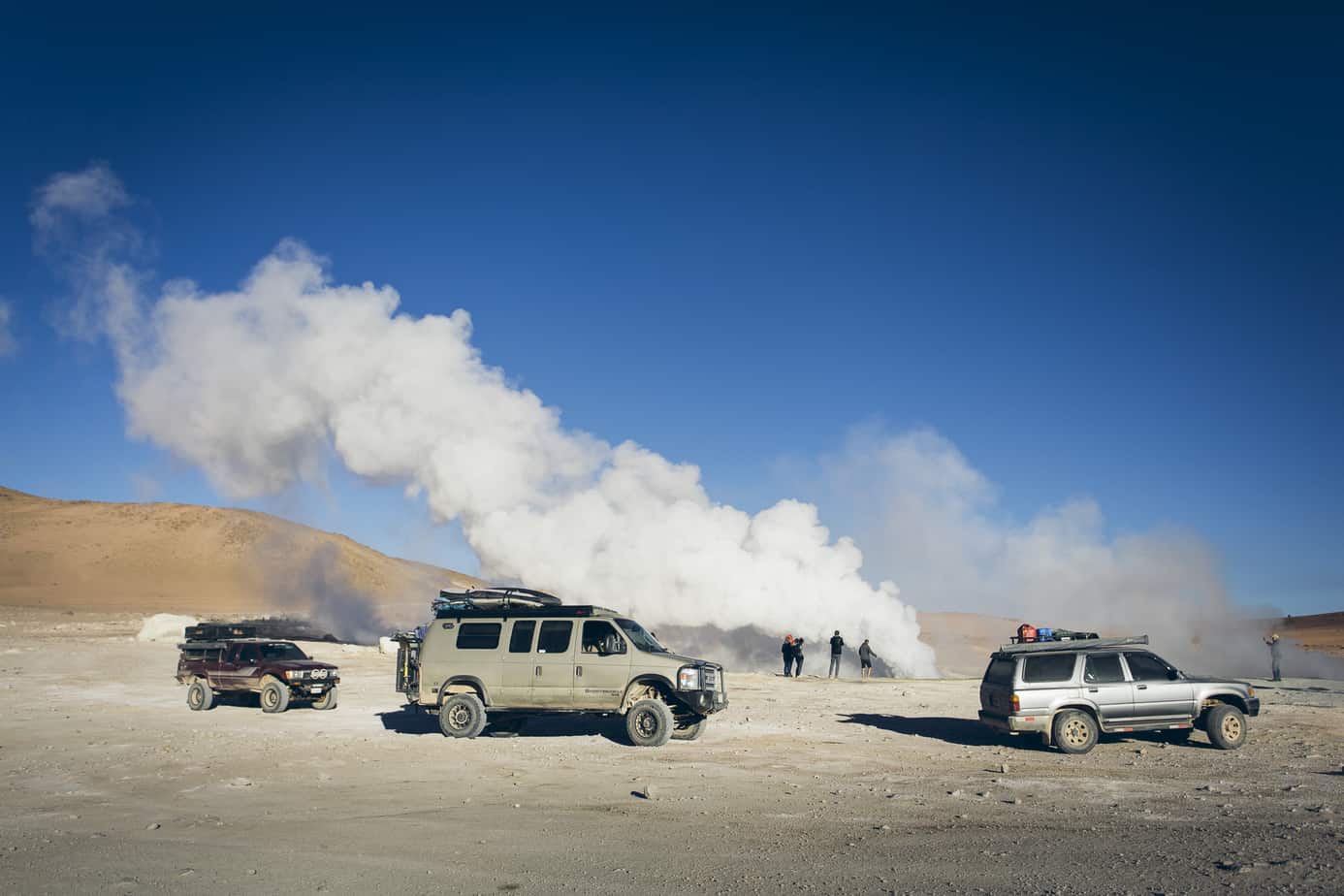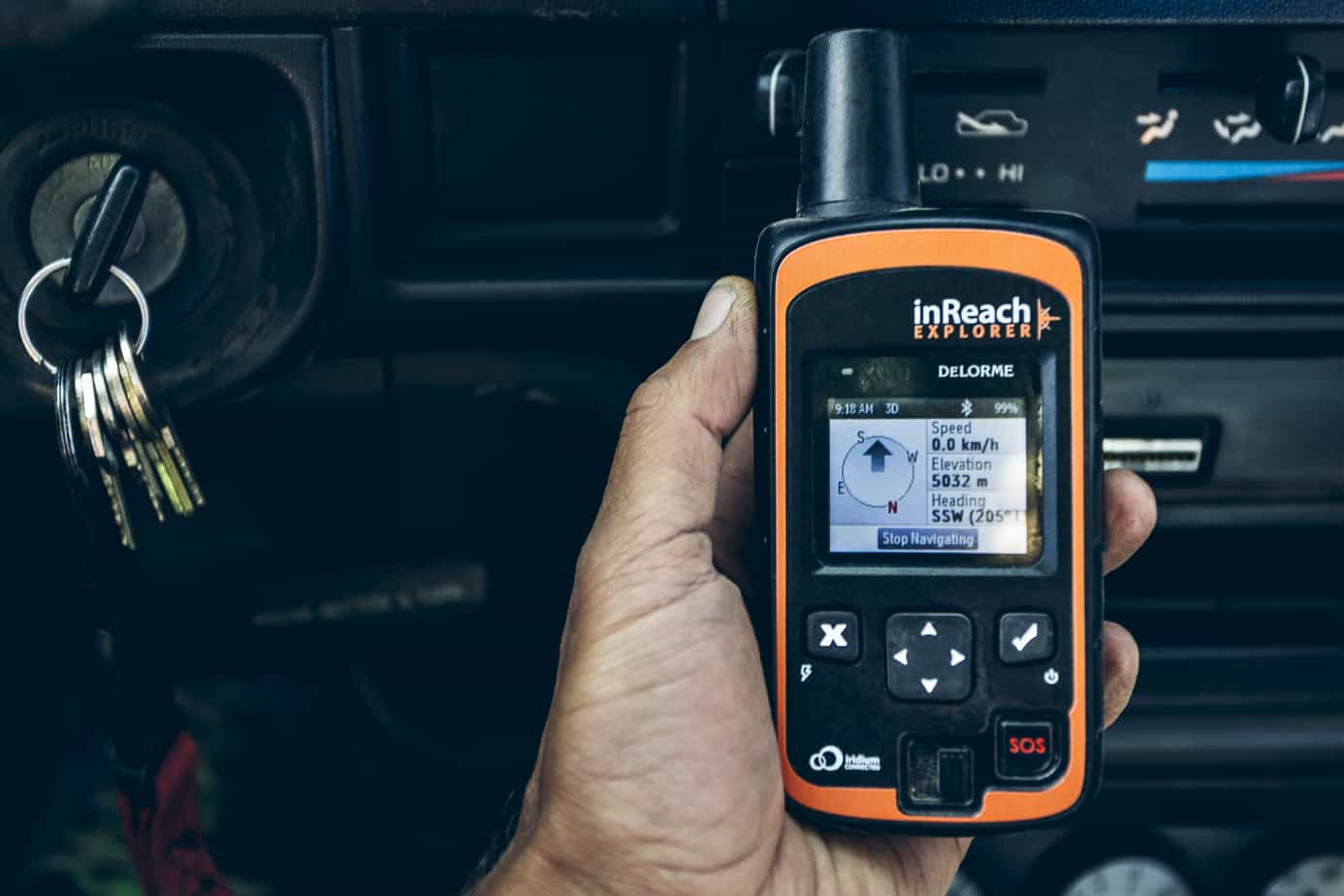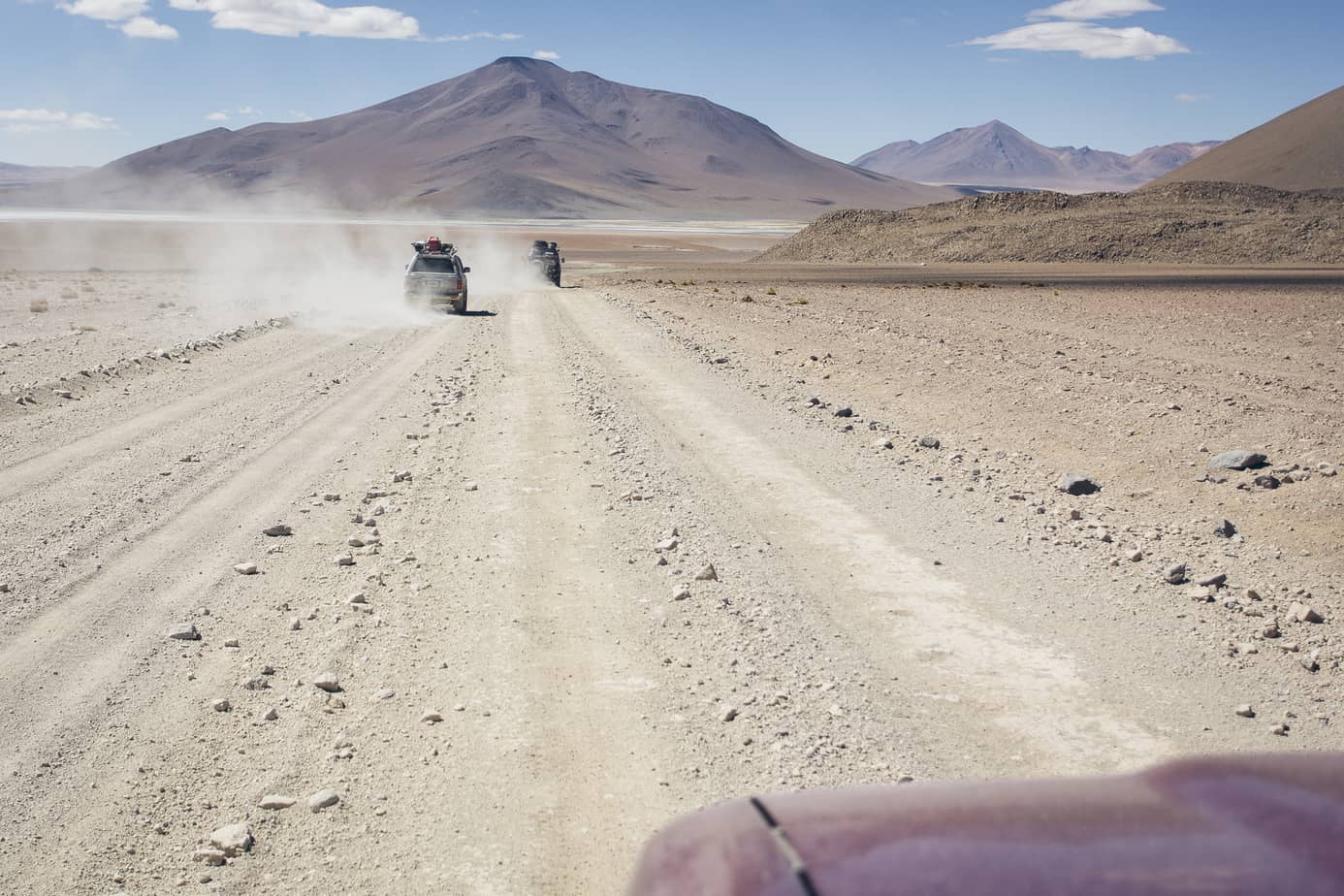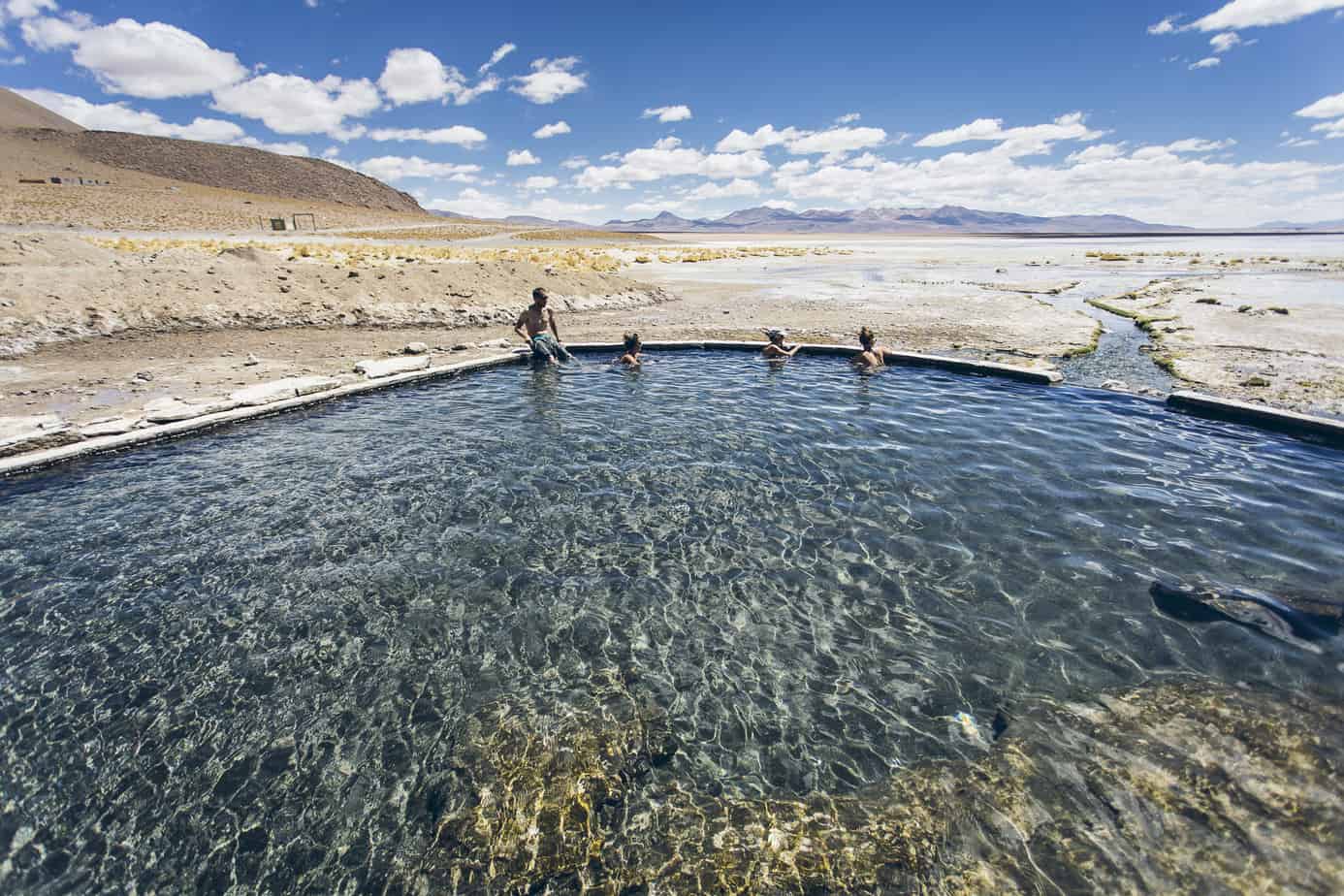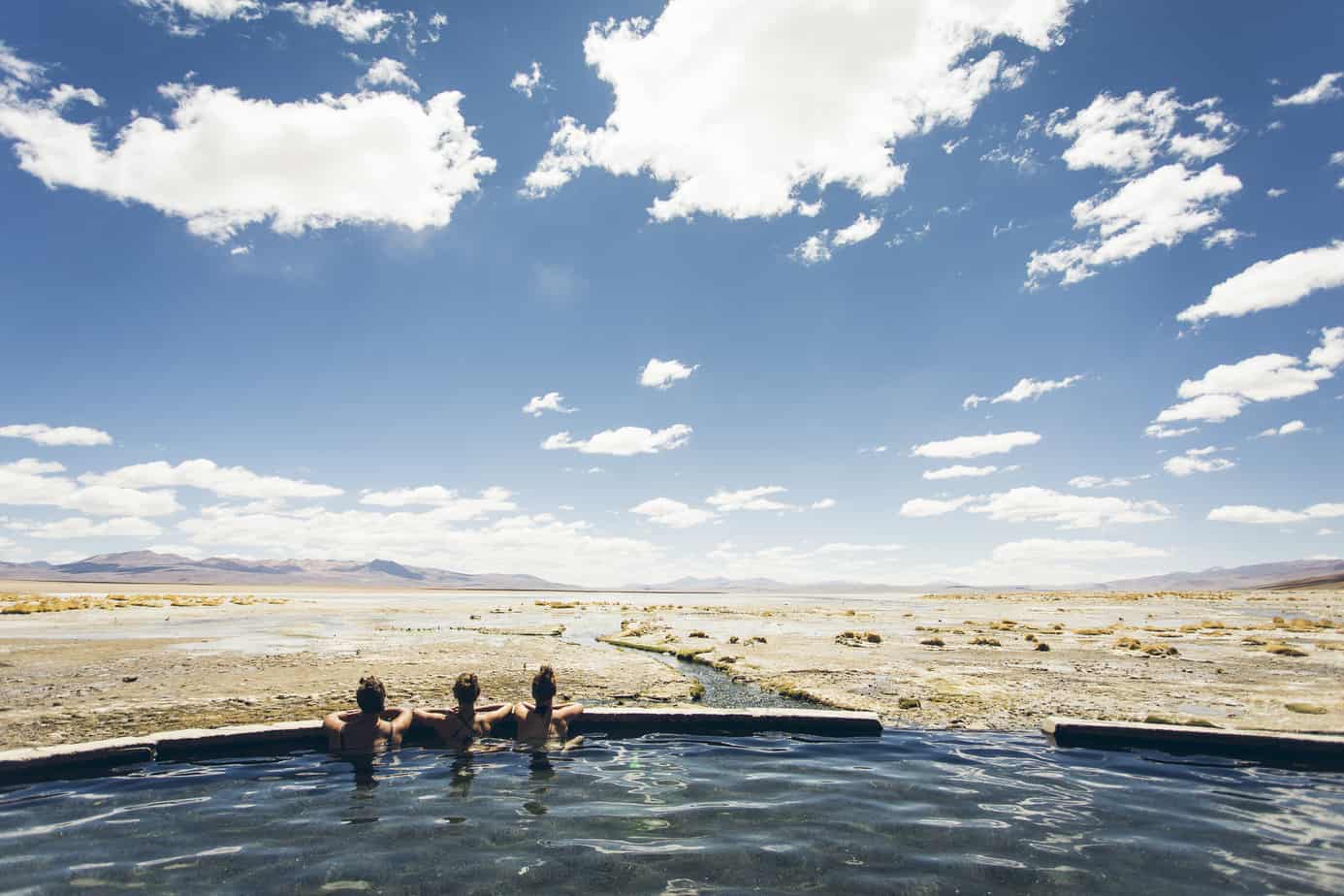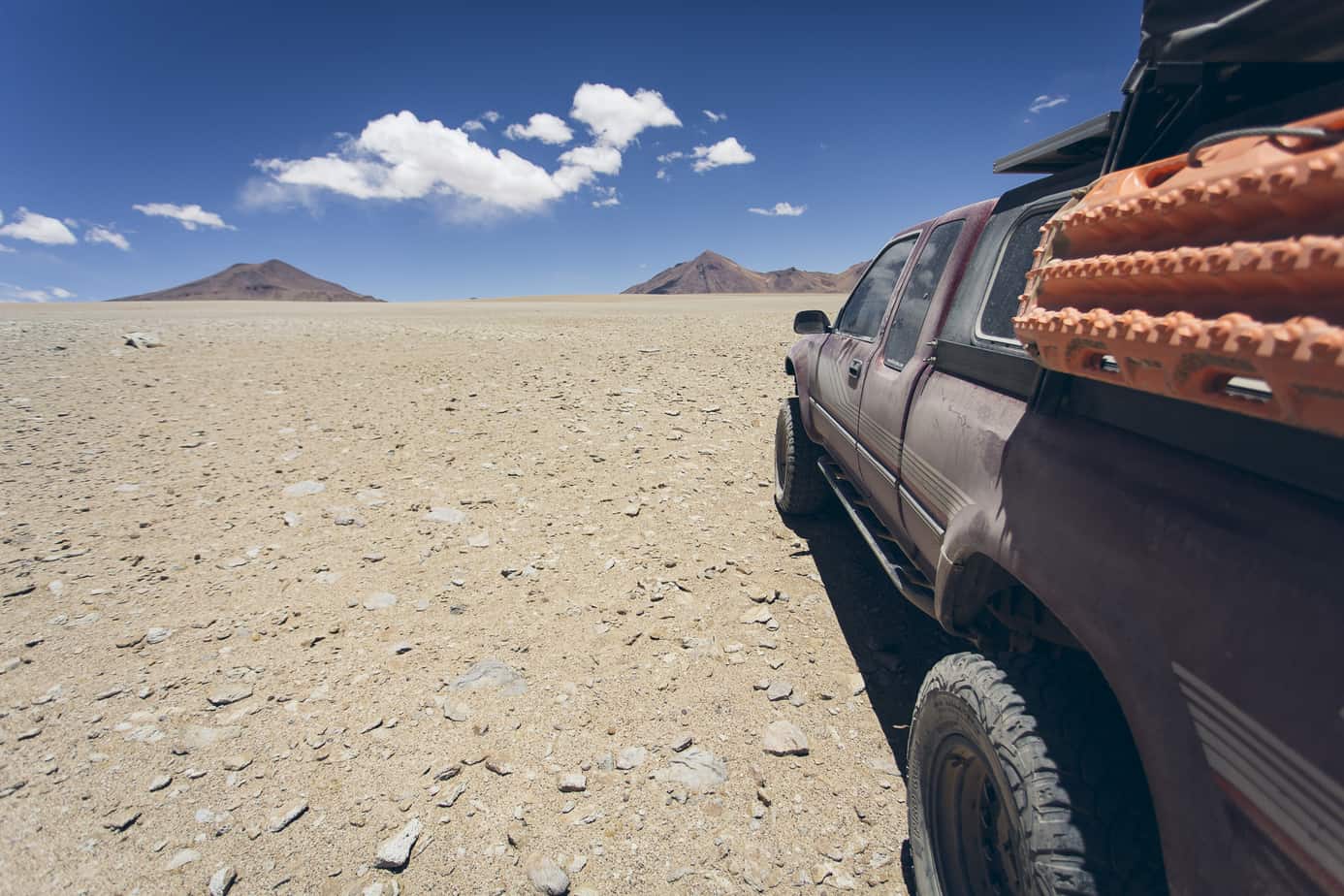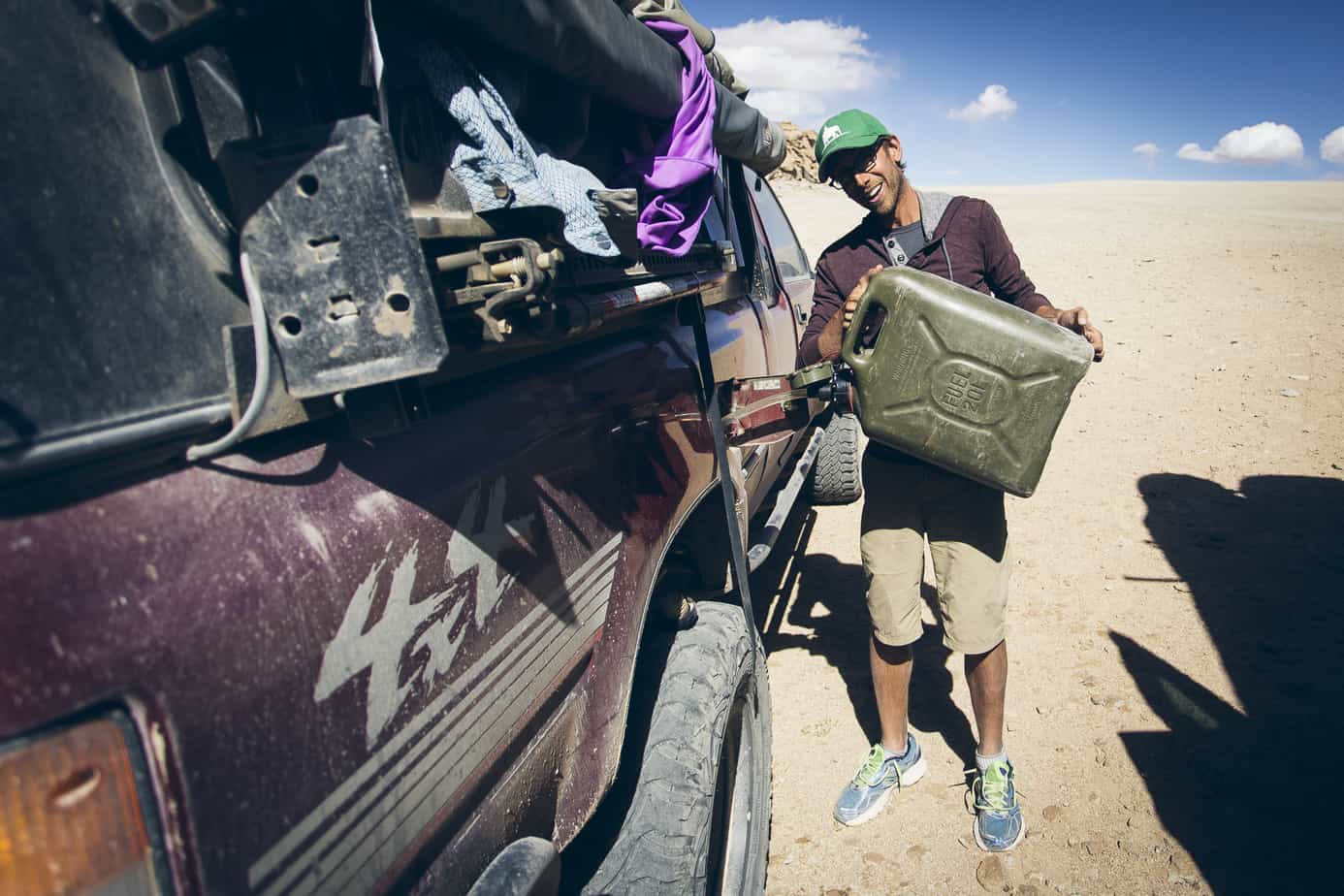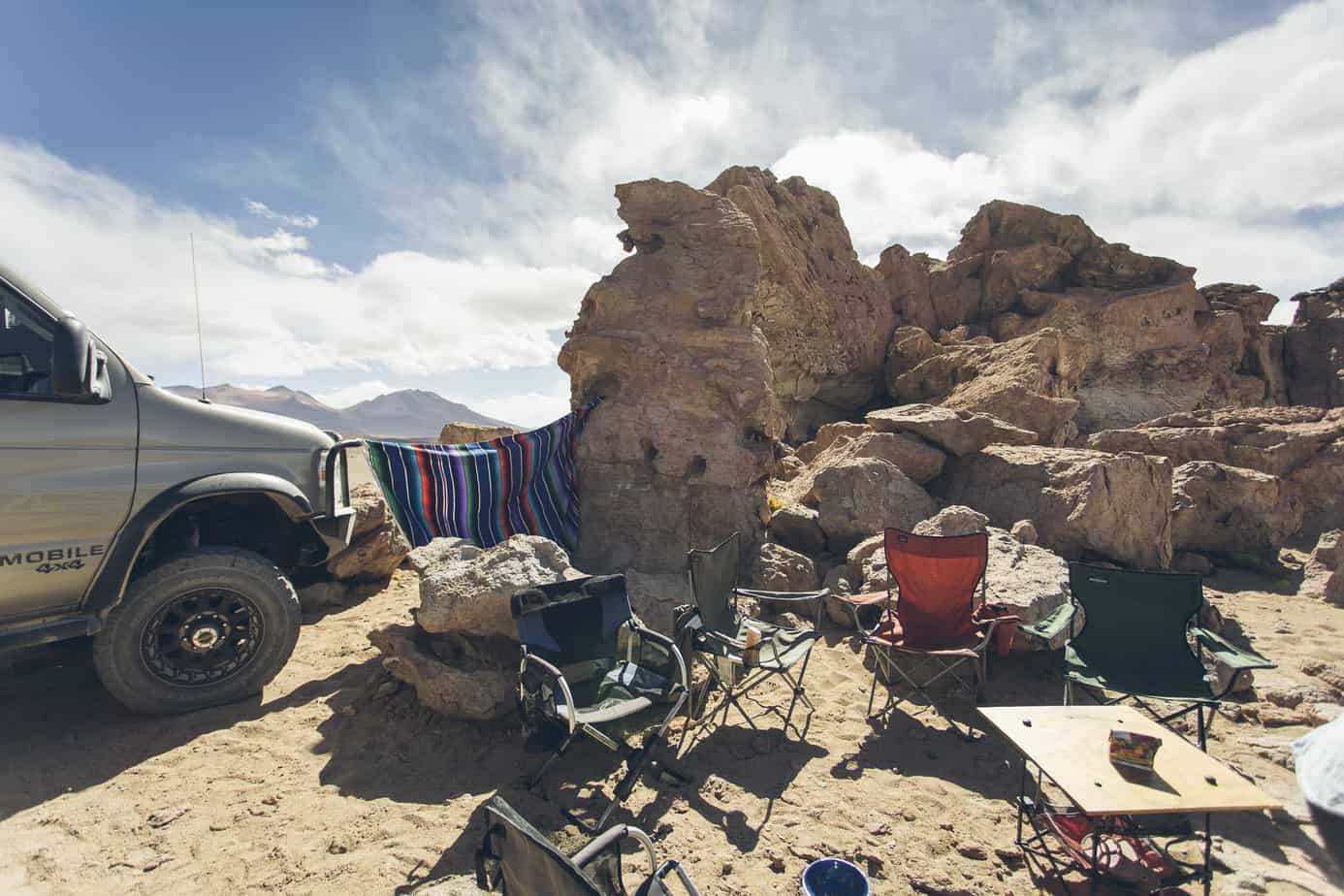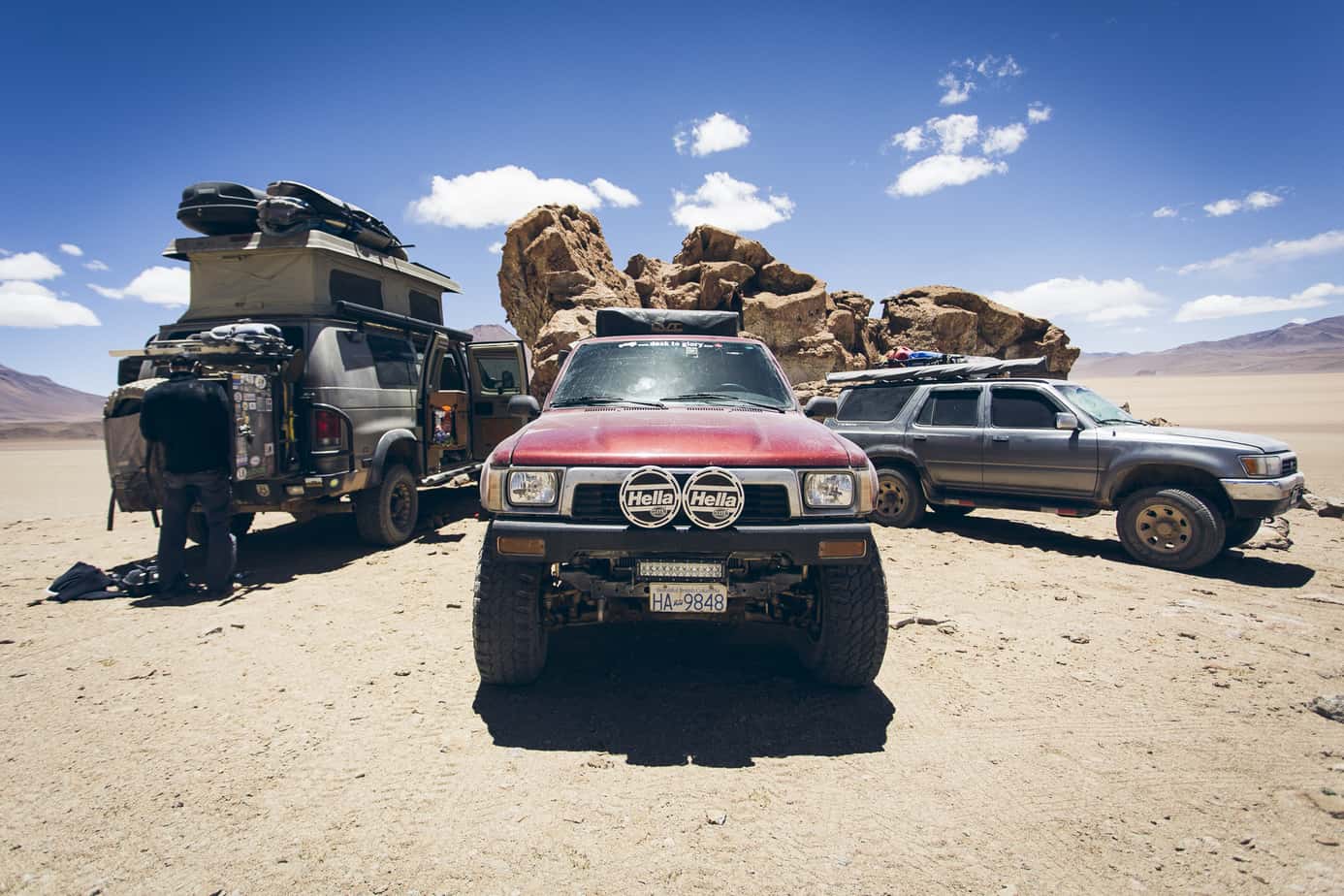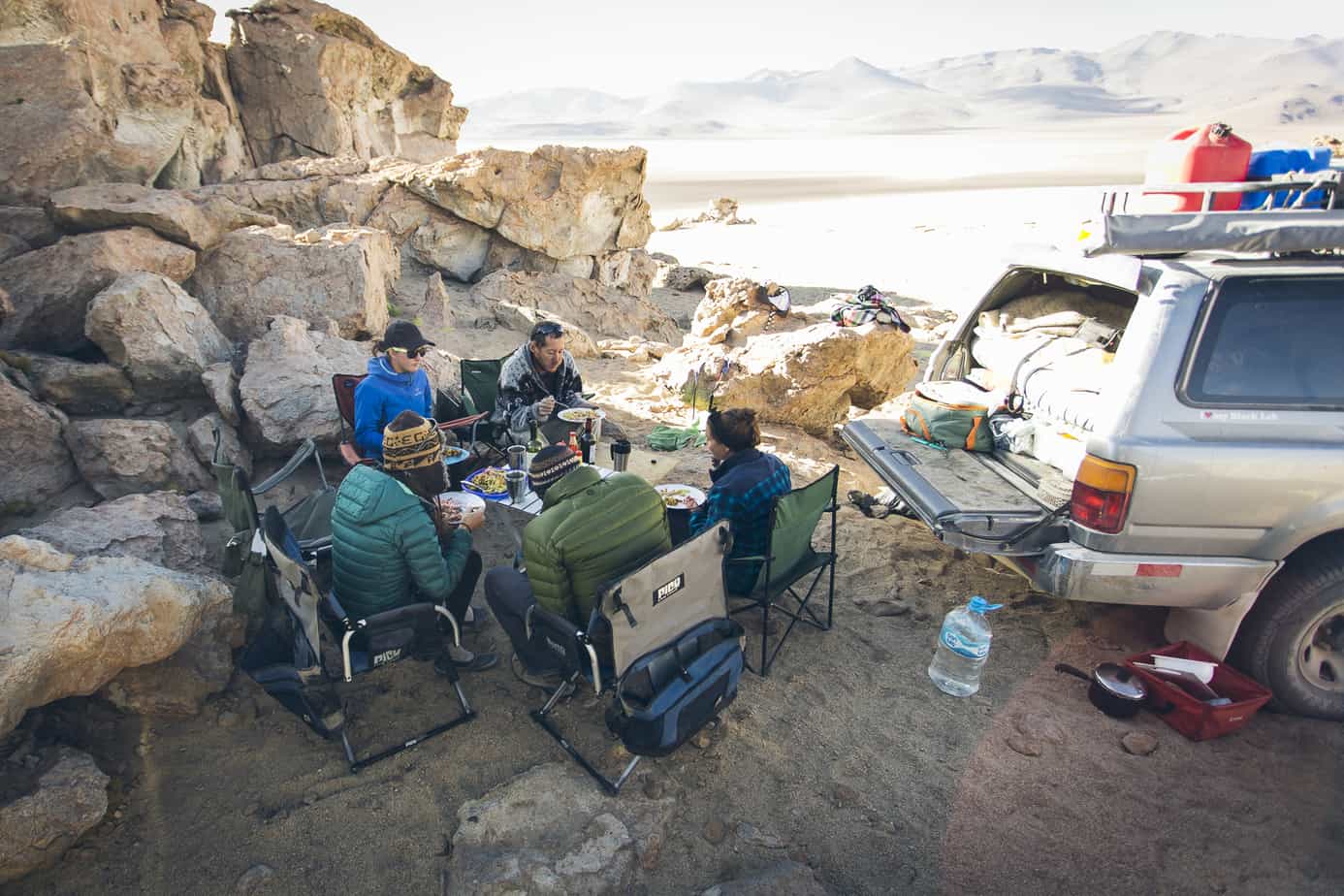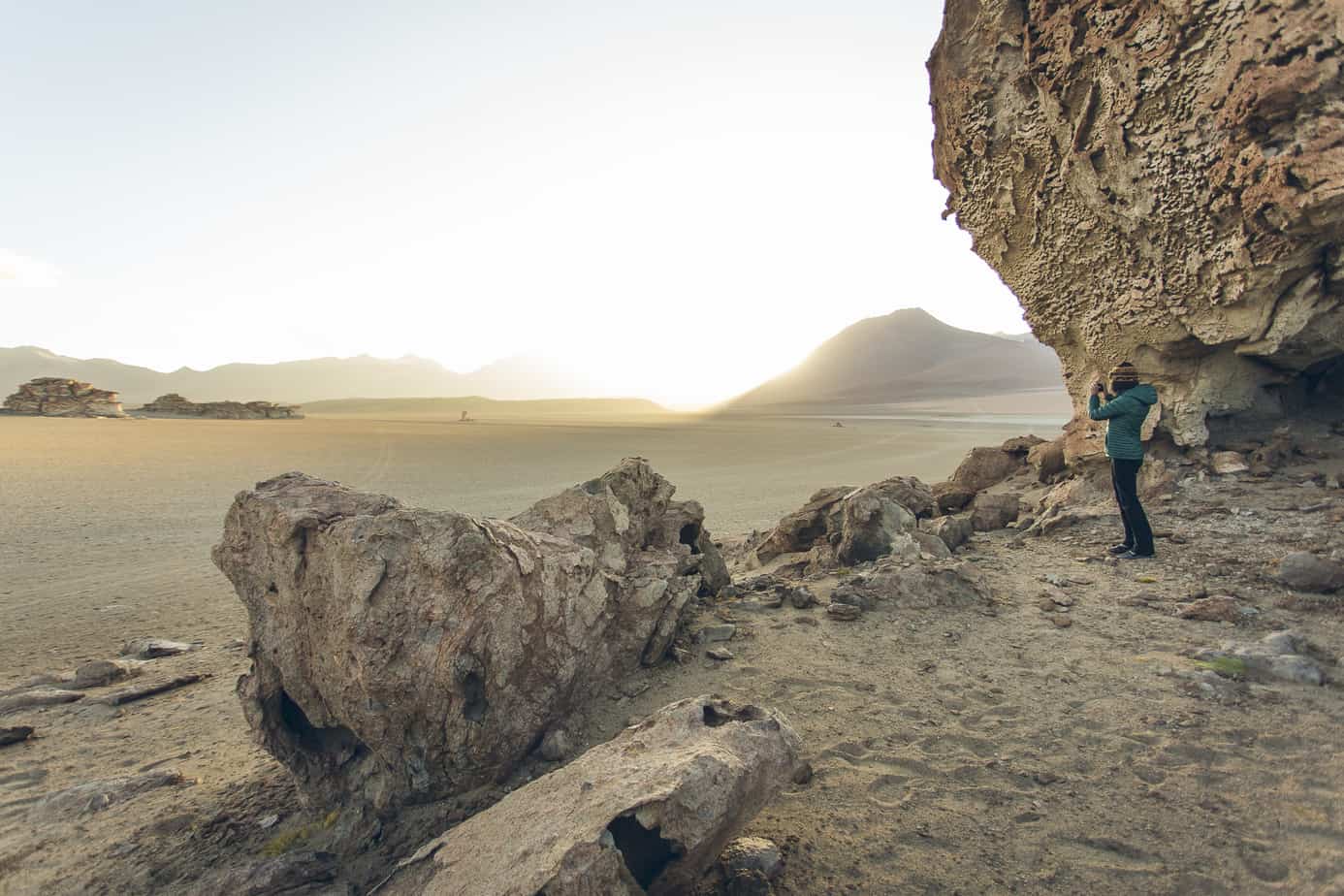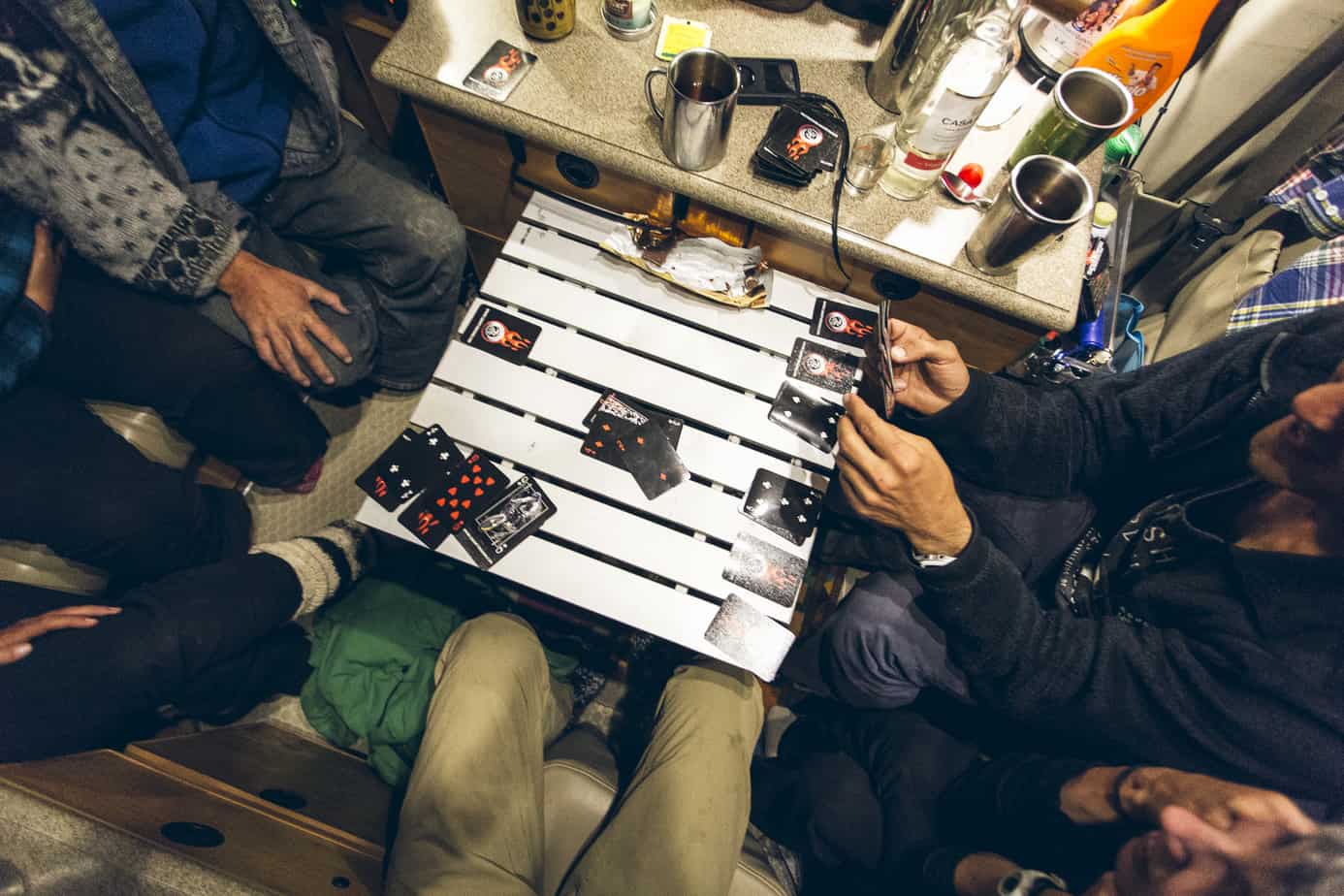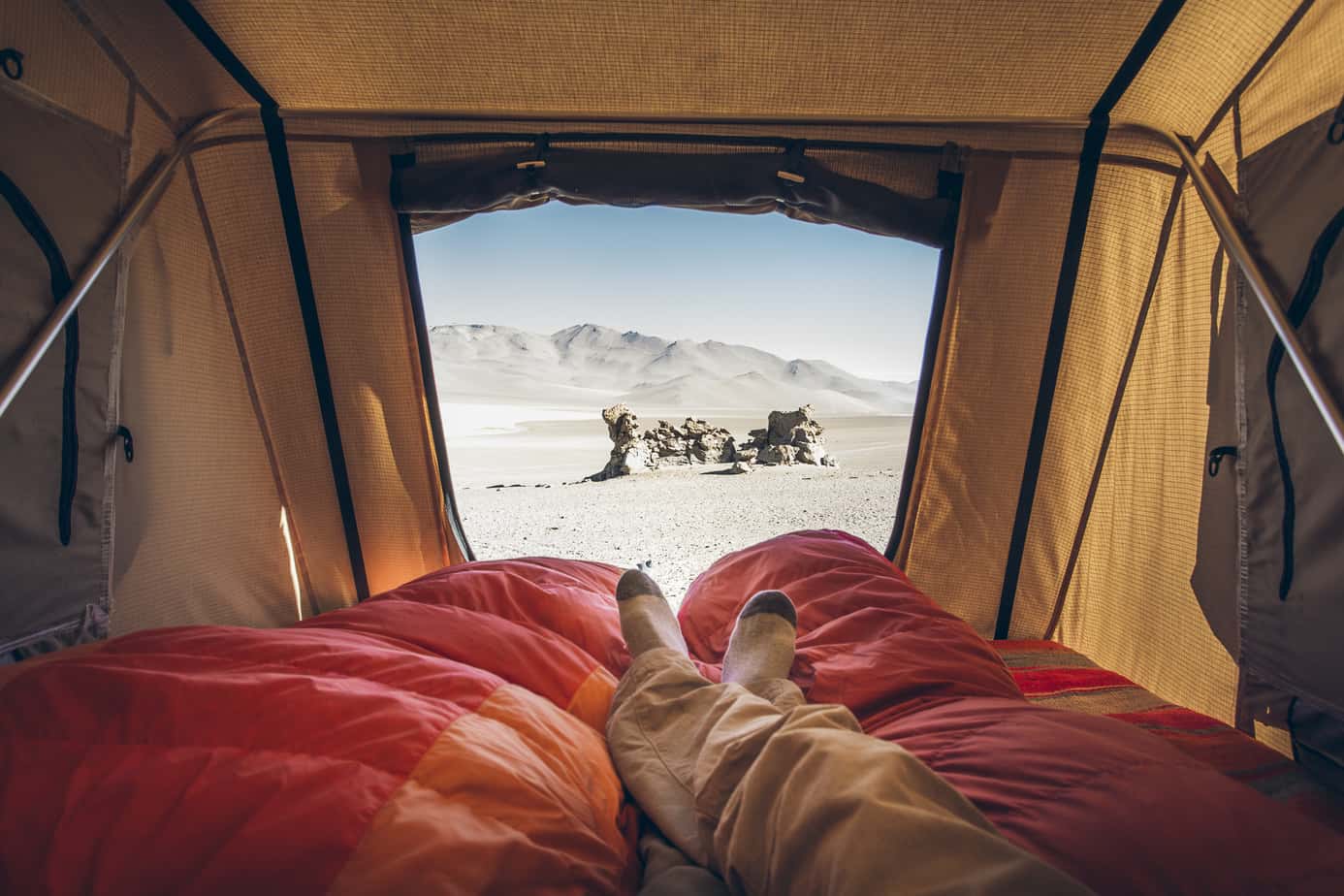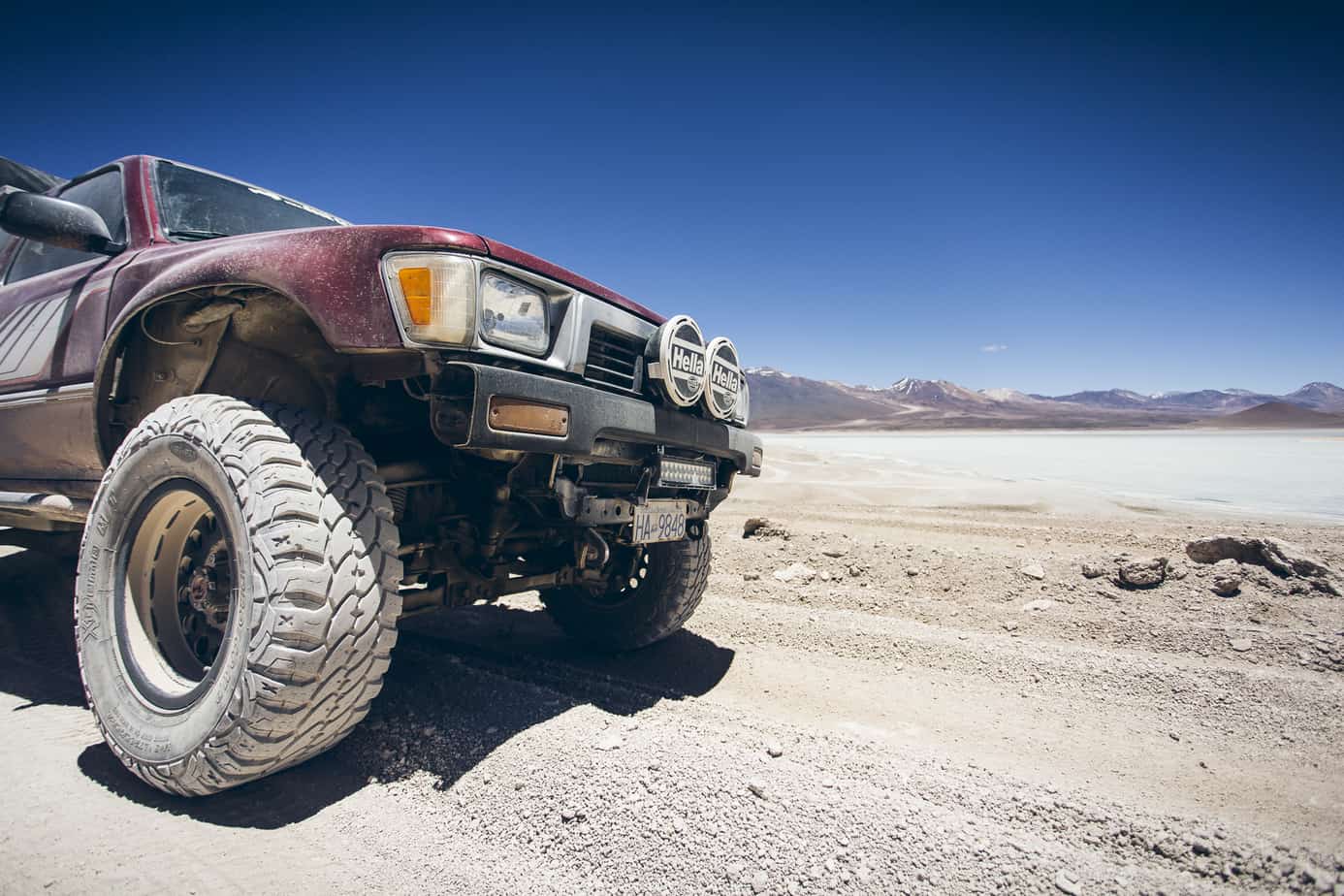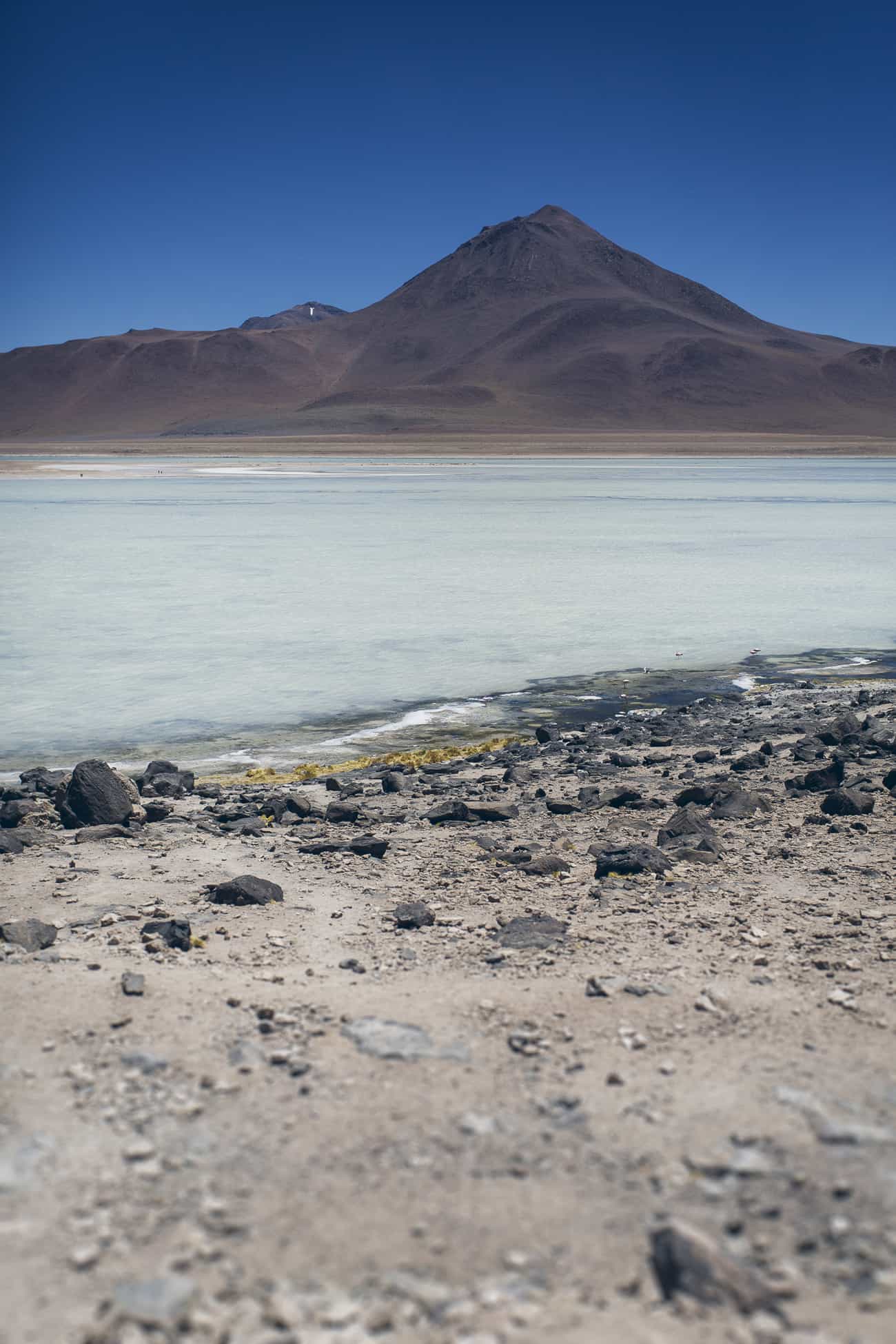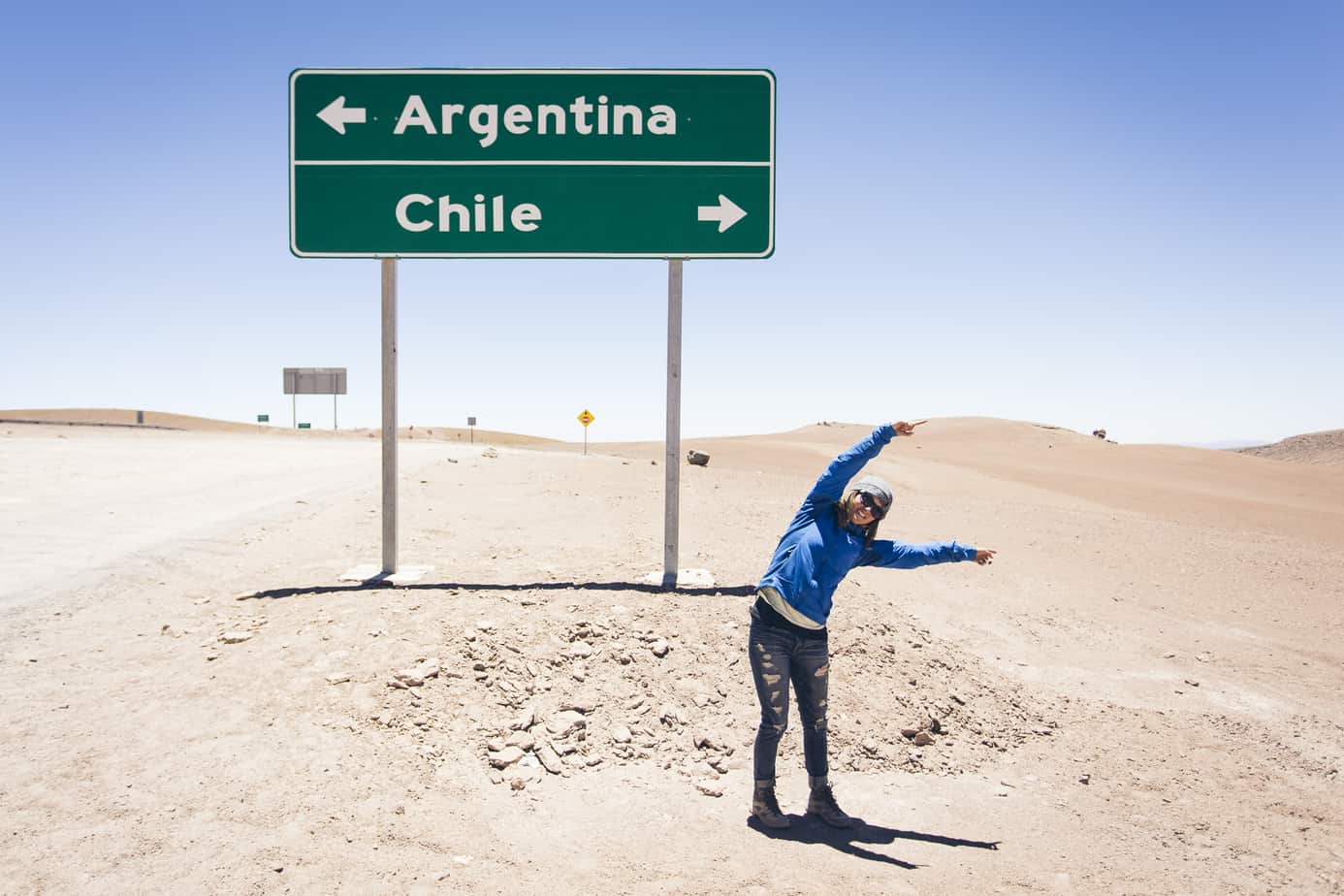The infamous Lagunas Route (otherwise known as the Southwest Circuit) is a 400 plus kilometer off-road track from Uyuni, Bolivia to San Pedro de Atacama, Chile. Meandering through Bolivia’s altiplano, or high plain, the route winds through soft sand, over bumpy washboards and through short sections of rocky outcrops. The scenery is otherworldly, desolate and beautiful. Glacial salt lakes appear in strange, vivid colors such as rusty reds and alien greens. Latte toned volcanic peaks appear on the horizon as though painted in watercolor. Pink flamingos huddle together in the middle of semi-frozen lakes attempting to conserve body heat in the sub-zero temperatures. As the Talking Heads once said, “And you may ask yourself, well… how did I get here?”
Other travellers recommended we convoy with at least one other vehicle due to the route’s remoteness. Lucky for us, we teamed up with two American couples– Mallary and Chris, piloting their stock 1993 4Runner and Jenine and George driving their 2014 Sportsmobile.
Our first task was to fill up on gasoline– and lots of it. Although our 1990 Toyota Pickup, endearingly nicknamed Little Red, was getting good fuel mileage despite the high altitude in Bolivia, we purchased a couple of extra “jerry cans.” These random white plastic containers were not likely approved for carrying fuel but they were all we could find in the remote Bolivian towns. We used these in addition to our trusty army-green 20-litre fuel can we brought with us from the Great White North.
In Bolivia it is illegal for gas stations to sell fuel to foreigners. This can be a bit tricky when you are traveling with a group of six gringos all looking to fill a multitude of gas containers. Due to the low gas prices in Bolivia and relatively higher prices in the surrounding countries, the Bolivian government doesn’t want foreigners transporting cheap gas (about $3.48 Bolivianos = $0.50 USD per litre at the time of writing) out of the country and selling it for a profit. Some gas stations refuse to sell fuel to foreigners altogether. Others sell fuel legitimately at a tourist rate with a mandatory receipt, or in some cases, you can negotiate for a lower rate without a receipt.
We stopped just outside of Uyuni and the gas attendants agreed to sell us fuel. They flagged us to the front of the line-up, filled up our numerous tanks as quickly as possible and sent us scampering so they didn’t get caught. Tanks full, we continued to our first campsite – a cozy rock forest dotted with wind-resistant thola shrubs, sandy rabbit tracks and burrows and a gorgeous sunset to finalize our short first day of off-roading.
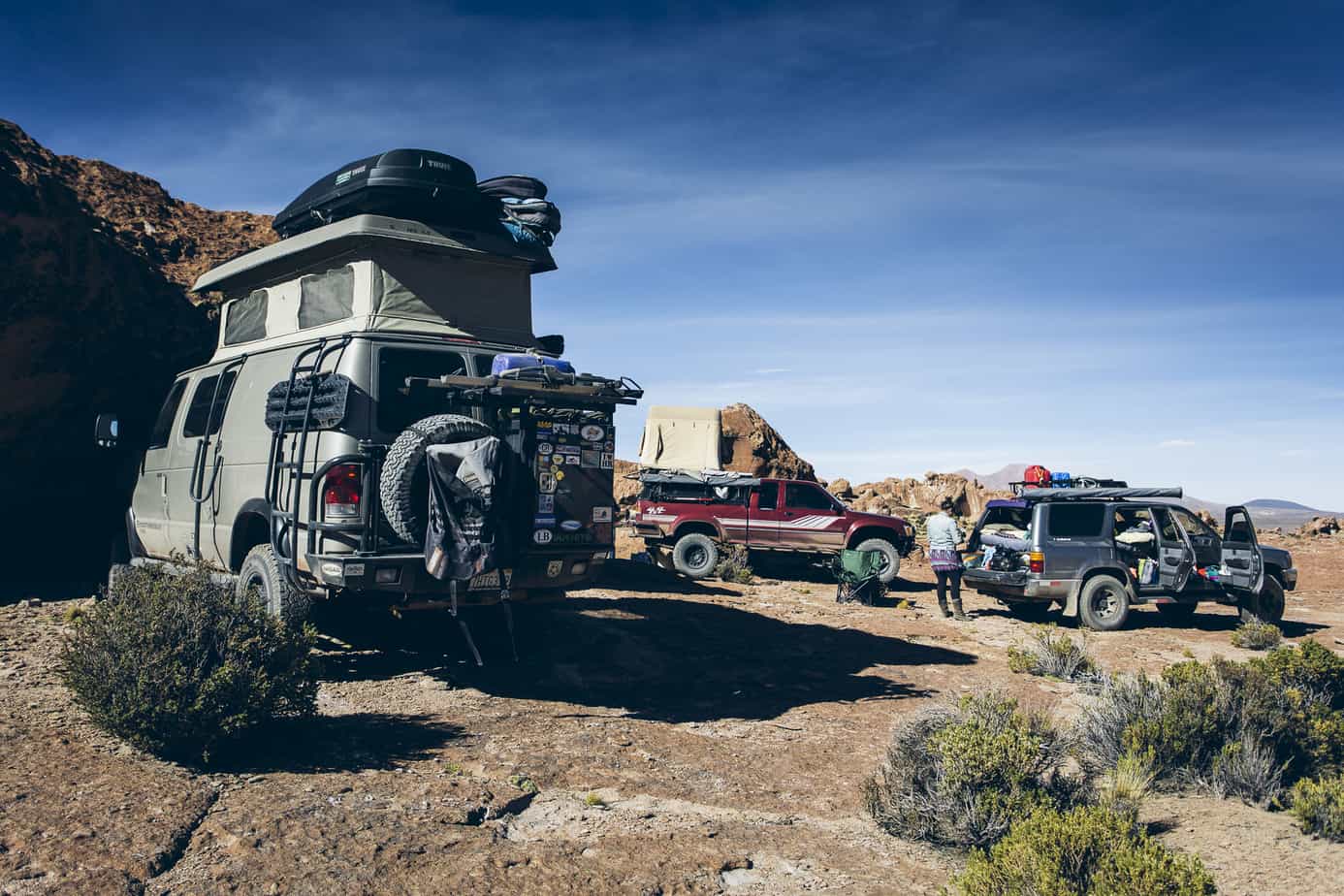
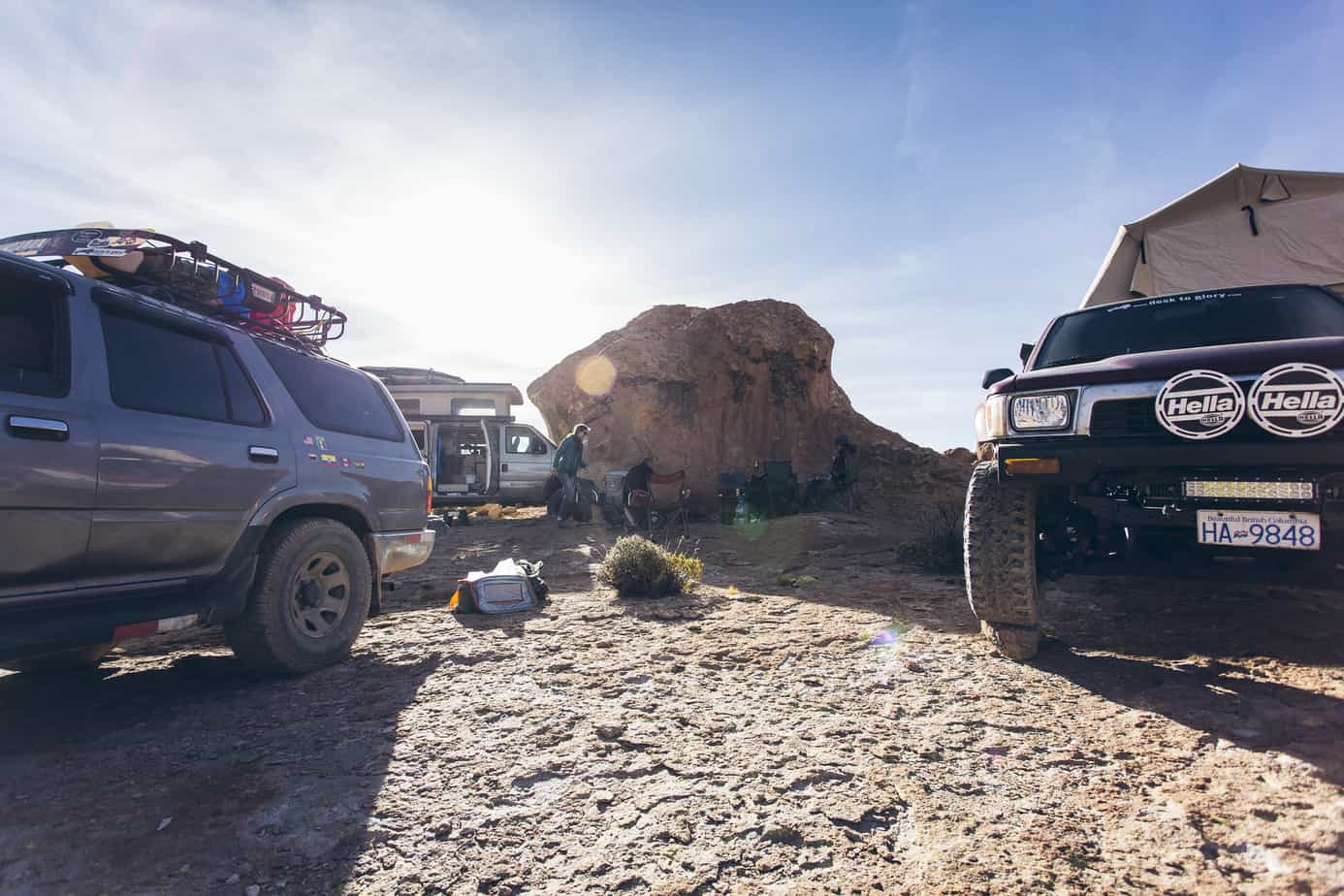
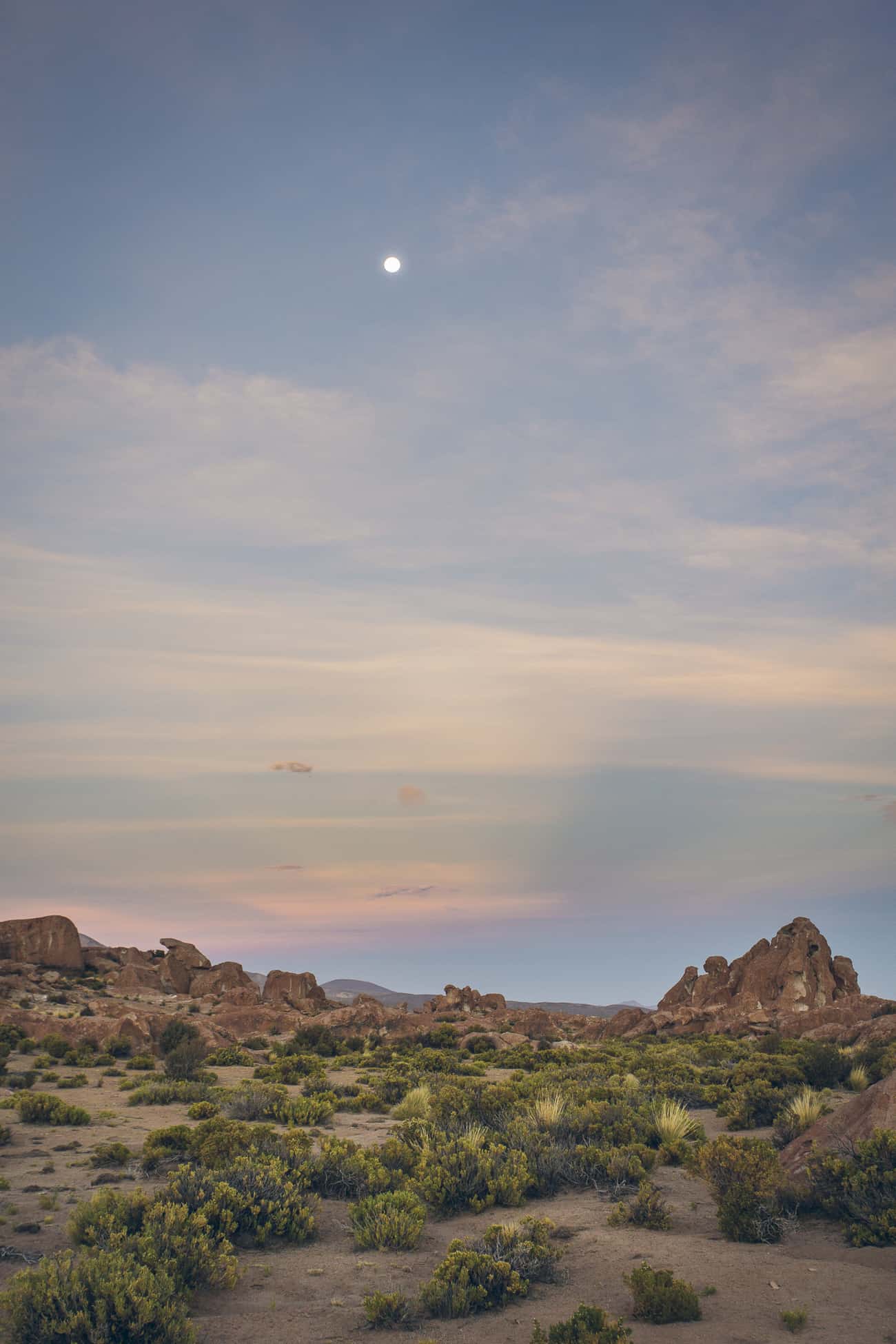
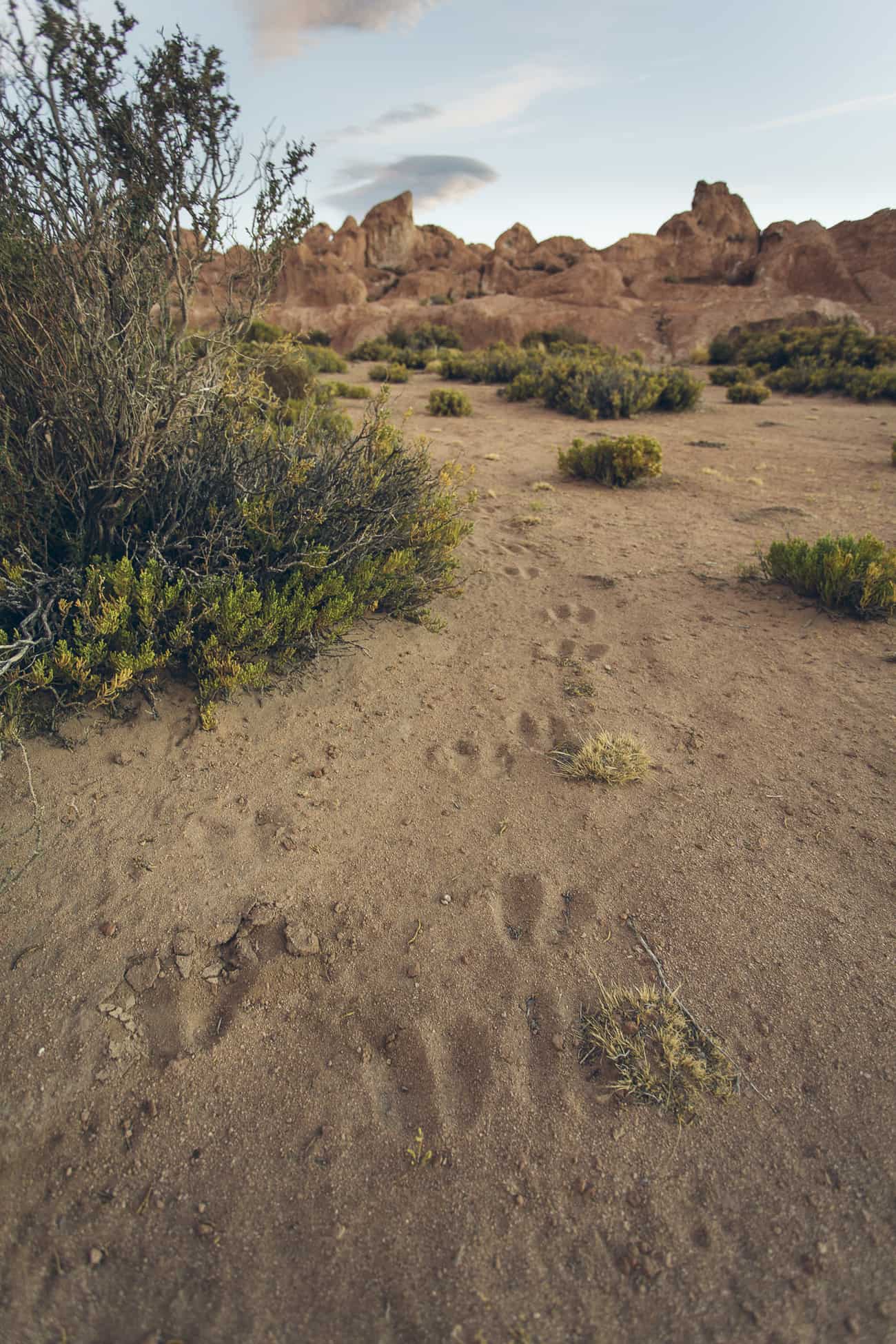
The Lagunas Route can be completed in as little as two days but we took our sweet time and spent five days exploring the Western Route. Continuing over a relatively smooth dirt track we arrived at Laguna Chullucani, our first high altitude salt lake. Nearby, a group of tourists piled out of several 80 Series Land Cruisers, admired the scenic views, snapped some photographs, and then dug into lunch while we did the same, rescuing several paper napkins from the blustery winds intent on carrying them off into the wilderness. We would see many of these touring Land Cruisers during our time on the Lagunas Route, often with a Ray Ban-clad gringo asleep in the backseat. The Land Cruisers, however, were somewhat of a reassuring sight as we knew they carried extra fuel and could be flagged down in case of an emergency.
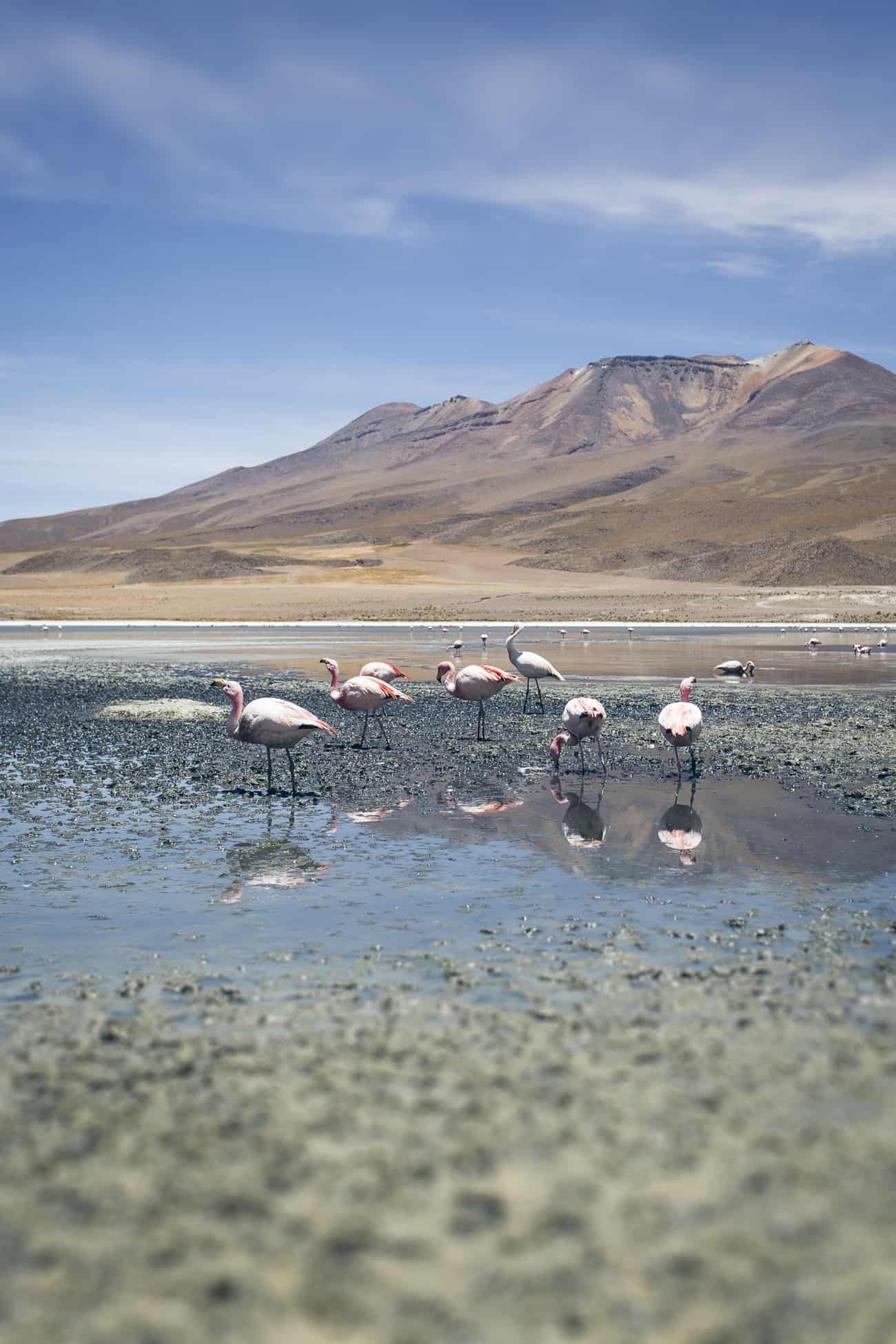
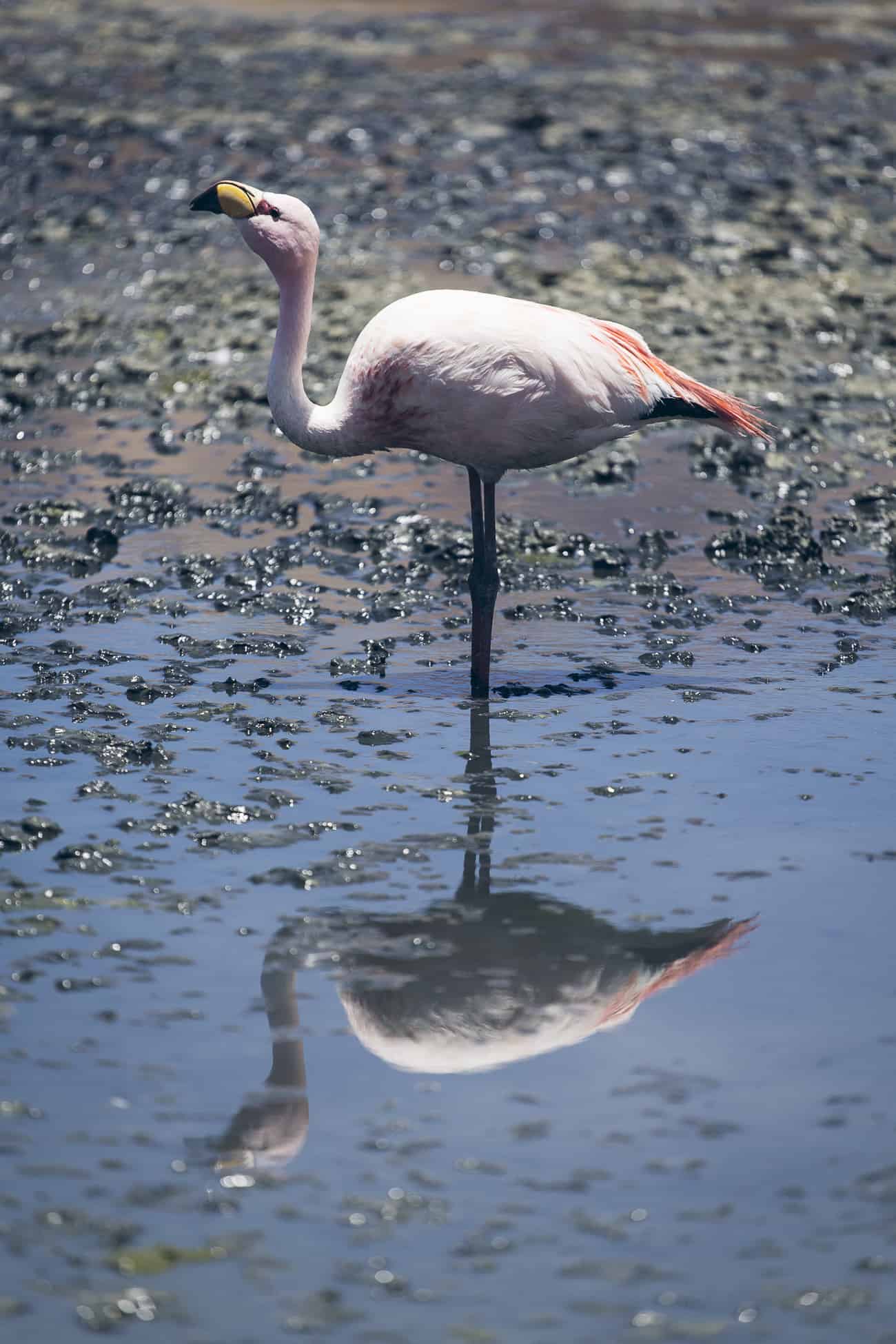
Hidden Flamingo Lake was one of our favorite camp spots. A large pile of black volcanic rock provided moderate protection from the wind and the 360-degree views revealed another briny lagoon and its resident flamingos. We saw and heard no one else. We drank, we danced under the full moon, we built a fire, and eventually pulled out the multi-colored LED lights. The party really kicked up a notch when Chris pulled out an iPod Classic full of late 90’s and early 2000s music. Ginuwine, Snoop Dogg, and Notorious B.I.G. helped turn the night into a dance party. We have videos of us dancing to “No Diggity” that should never see the light of day. The temperature dropped quickly so we cranked up our 12V heating pad, crawled into our rooftop tent, and tucked into our sleeping bags for a good night’s sleep while the flamingos flapped and squawked in the chilly laguna nearby.
When you are camped out at 4,000 meters (13,123 feet) above sea level things get chilly. Upon waking we noticed our water bottle near the entrance of our tent, frozen. The thin air warmed up quickly, and the girls had a chance to practice some yoga while the boys prepared breakfast. Reluctantly we packed up camp and continued south through the Mars-like landscape, the ambiance enhanced by “The Martian” audiobook blasting through our speakers.
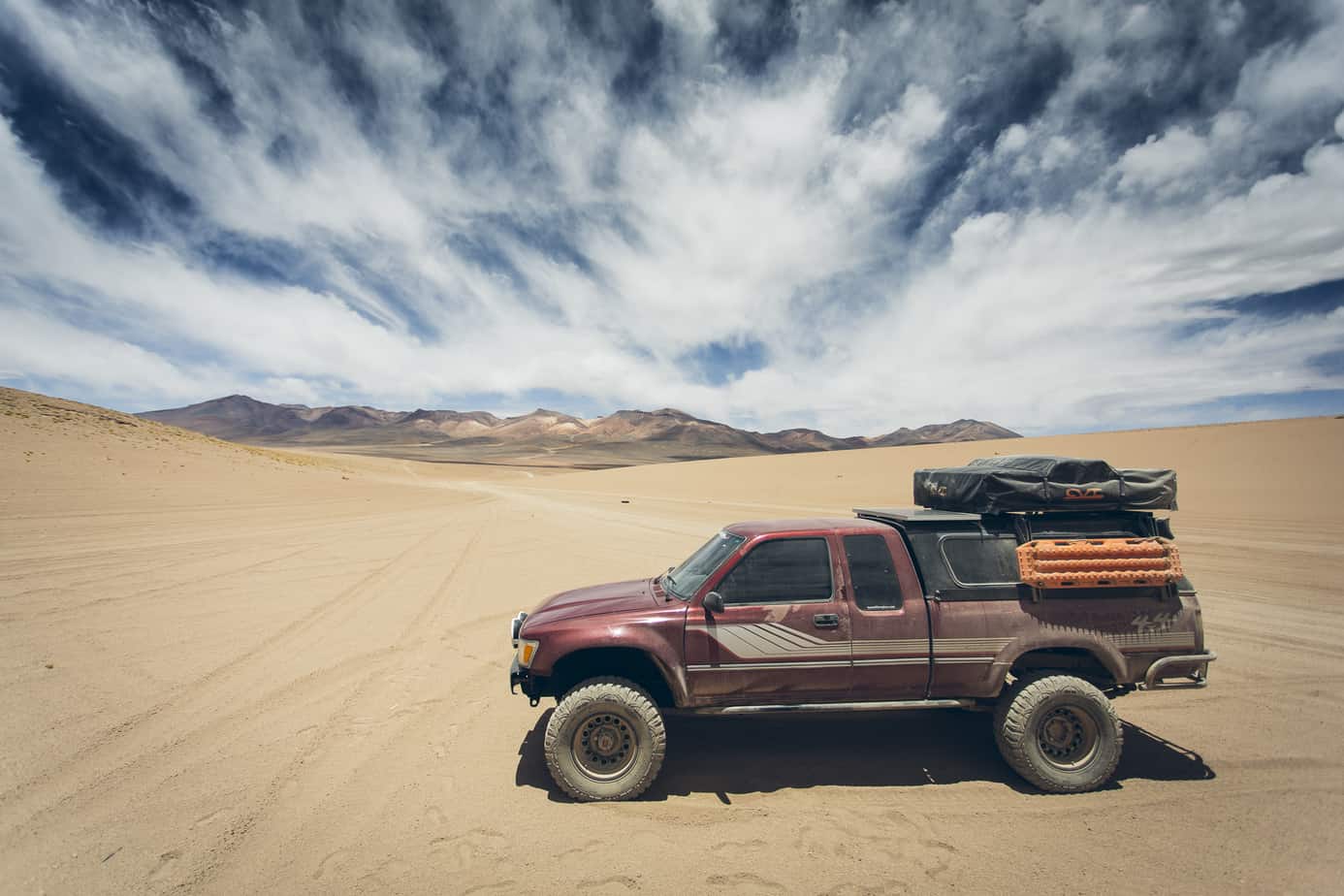

We stopped to check out the much-photographed Arbol de Piedra (Stone Tree) before entering the Eduardo Abaroa Andean Fauna National Reserve. A viscacha (Bolivian Chinchilla) hid between two rock slabs and some fuzzy vicuñas squatted on the earth, likely taking a break from the notoriously powerful altiplano winds.
More incredible scenery awaited us inside the National Reserve including Laguna Colorada (Red Lagoon) located at 14,000 feet of elevation. This large red-hued lake derives its color from algae pigmentation and rust-toned sediments. The plankton that inhabit the lake draw a number of James flamingos to the area for feeding.
Canyon camping throughout the Lagunas Route provided a temporary respite from the wind. Fortunately the intense gusts usually settled at night, saving our rooftop tent from too much wear and tear.
A 5:00 a.m. wake up call forced us out of our warm cozy beds for an early drive to the Sol de Mañana geothermal field. The hour-long drive over dusty washboard roads rattled all of Little Red’s working parts until we arrived at the bubbling sulfur pools. The early morning hours revealed the pressurized steam clouds at their most impressive. Various vapor funnels shot into the air, stemming from the volcanic activity beneath. We made sure to watch our step in order to avoid the boiling mud pots and treacherous crevices in the earth’s crust.
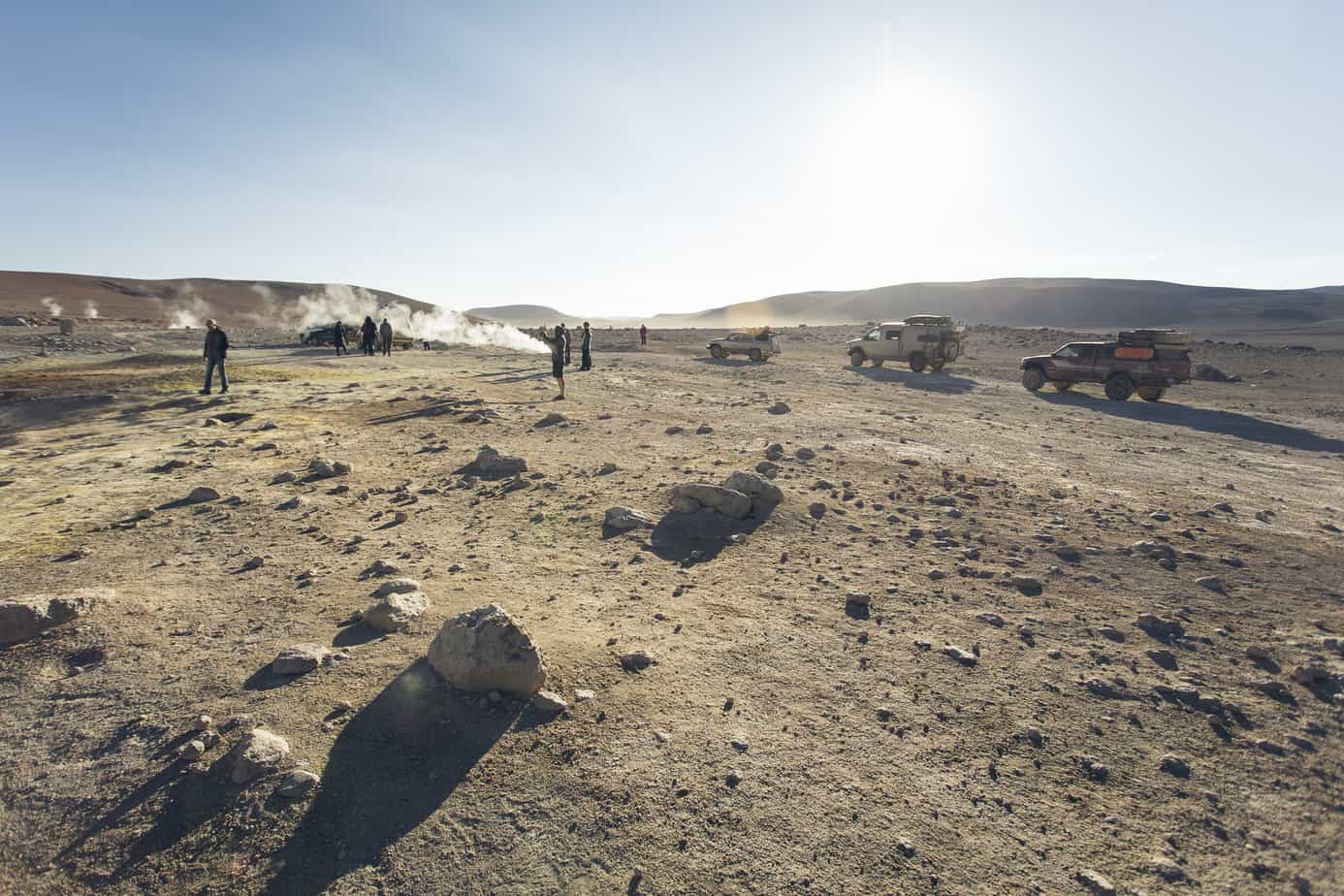
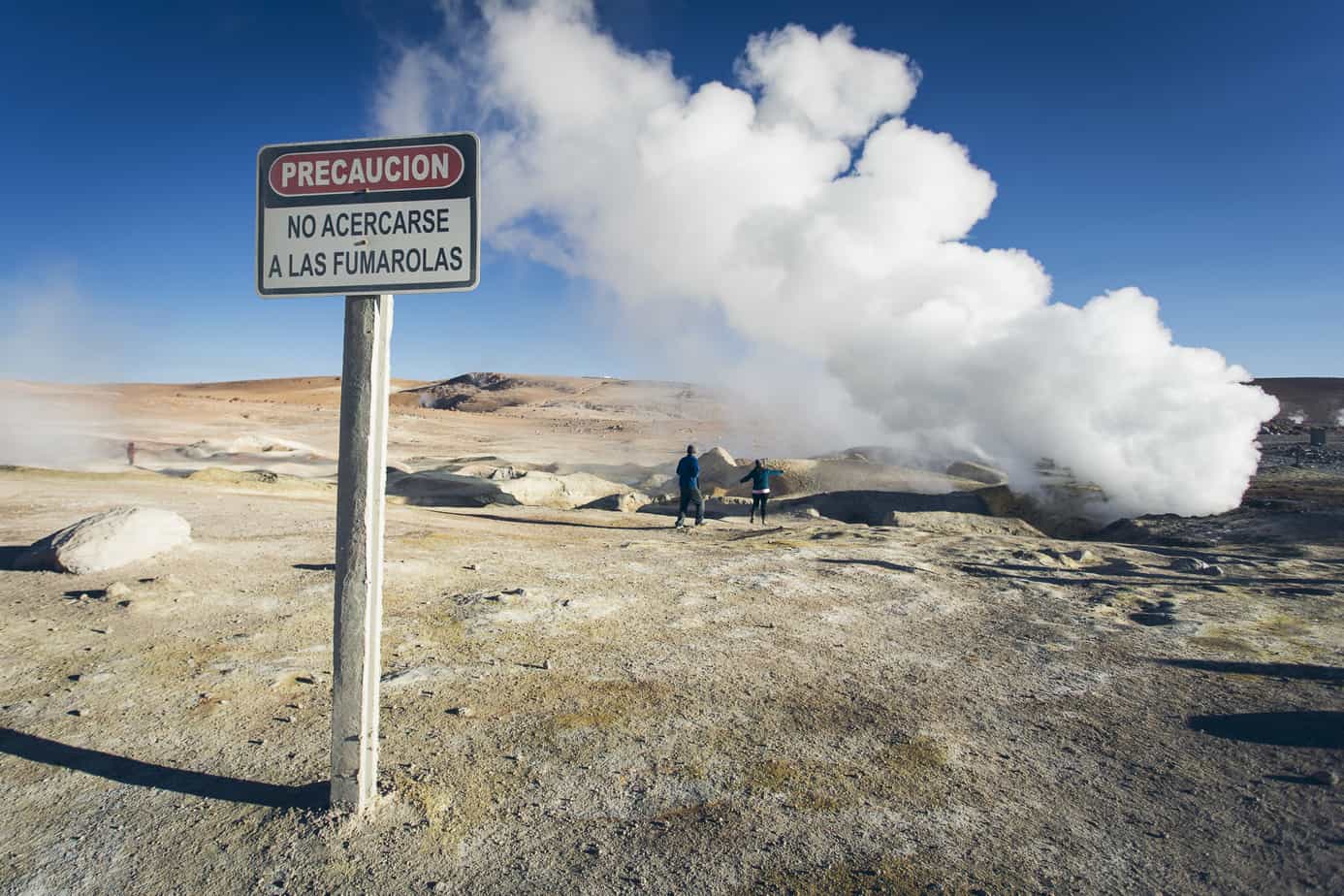
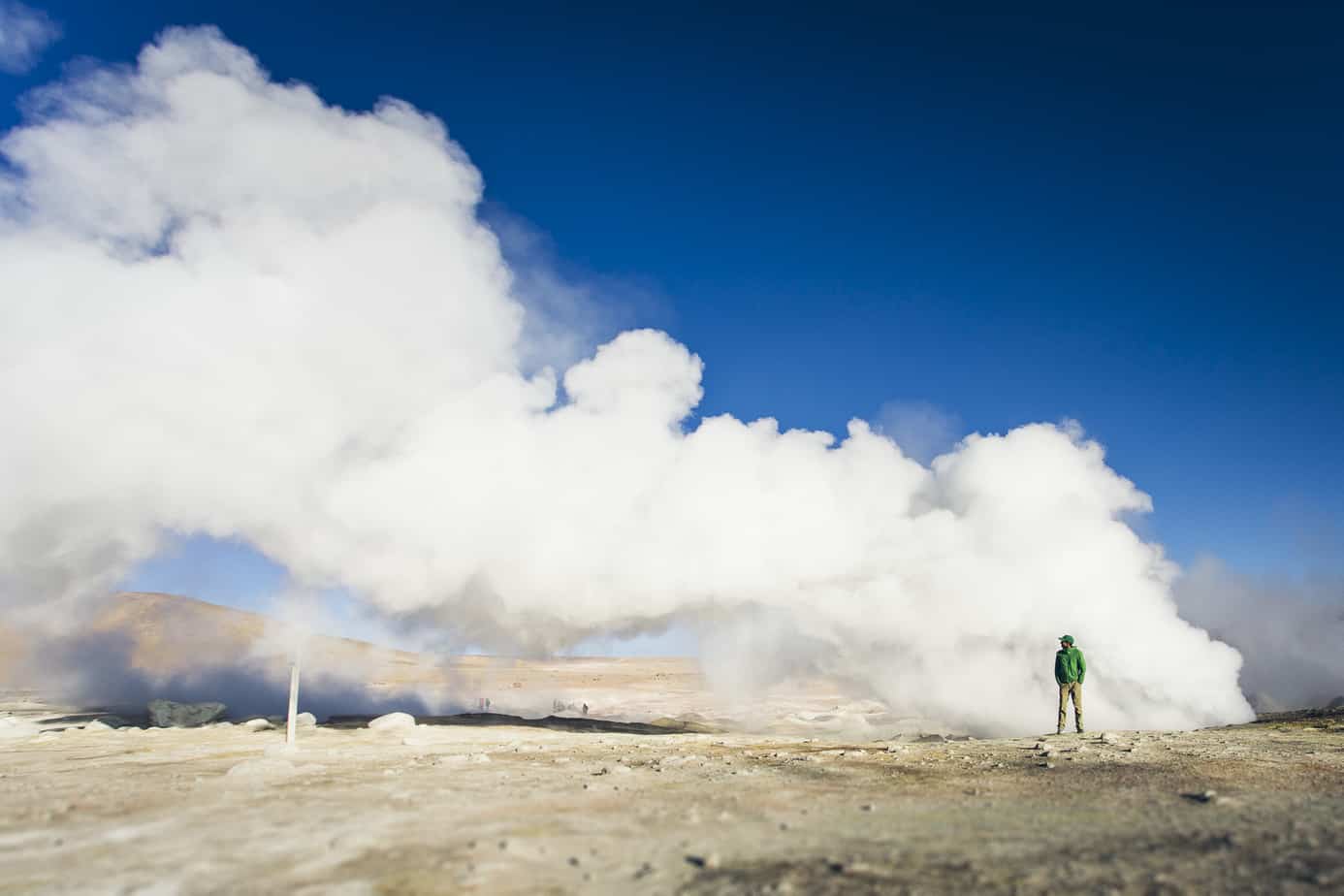
So then it was time to head to a boric acid plant. What? Who doesn’t love a little boric acid on your off-road trip? Actually, that’s where the Bolivian aduana is and where we had to get our vehicle import permits cancelled. Sure the actual border and immigration is located around 100 kilometers away, but for some reason customs is near this plant at a lung-busting elevation of 16,509 feet. #becauseBolivia.
We stopped for a lunch break and quick dip in the Termas de Polques hot spring pool to relax our road-weary bones and to admire the stunning views. Unfortunately we were unable capture any photographs of the large group of fully clothed French tourists who arrived and proceeded to take pictures of us dressed in our bathing suits while we basked in the mineral-rich waters. Weird. We’re looking forward to making an appearance in some photo albums and slideshows back in Europe.
Our group wasn’t eager to return to civilization so we found a spot on iOverlander and blasted out to the Salvador Dalí Desert, accurately named for the quirky landscapes that resemble those found in Salvador Dali’s surrealist paintings.
We scrounged around in our remaining food supplies and made the best American Thanksgiving you can make with Ratatouille, Vegan Mac and Cheese and a Couscous Salad. Once the wind picked up we holed up in the Sportsmobile for a night of more music, cards and tea with a generous splash of Casa Real (Bolivian brandy).
We awoke to another day of clear blue skies, the vast landscape curving and stretching from horizon to horizon like a snowglobe. Despite wearing hats, sunglasses and sunscreen, our faces were wind burned and sunburned from the exposure at such a high altitude. The tops of our noses were red and our lips peeled. My hair was matted from my knitted hat and tangled from constantly blowing in the wind. A layer of dust covered both the inside and outside of Little Red. Like him, we were overdue for a hot shower but couldn’t care less.
Our three-vehicle gypsy convoy continued past Laguna Verde, a green lake containing arsenic, lead and copper, and Laguna Blanca, a white lake filled with crusty layers of white borax.

Approximately two kilometers from the border Chris and Mallary’s 4Runner stopped dead. It started successfully but wouldn’t respond to the throttle. Richard poked his head under the hood and noticed that the intake tube (from the air flow meter to the throttle body… yeah truck jargon!) had cracked and become separated. As we had the proper tools available (“proper tools” = duct tape) we were able to quickly, albeit temporarily, fix the situation. We continued on our way and before we knew it we had arrived at Portezuelo del Cajón, the Bolivia/Chile frontera.

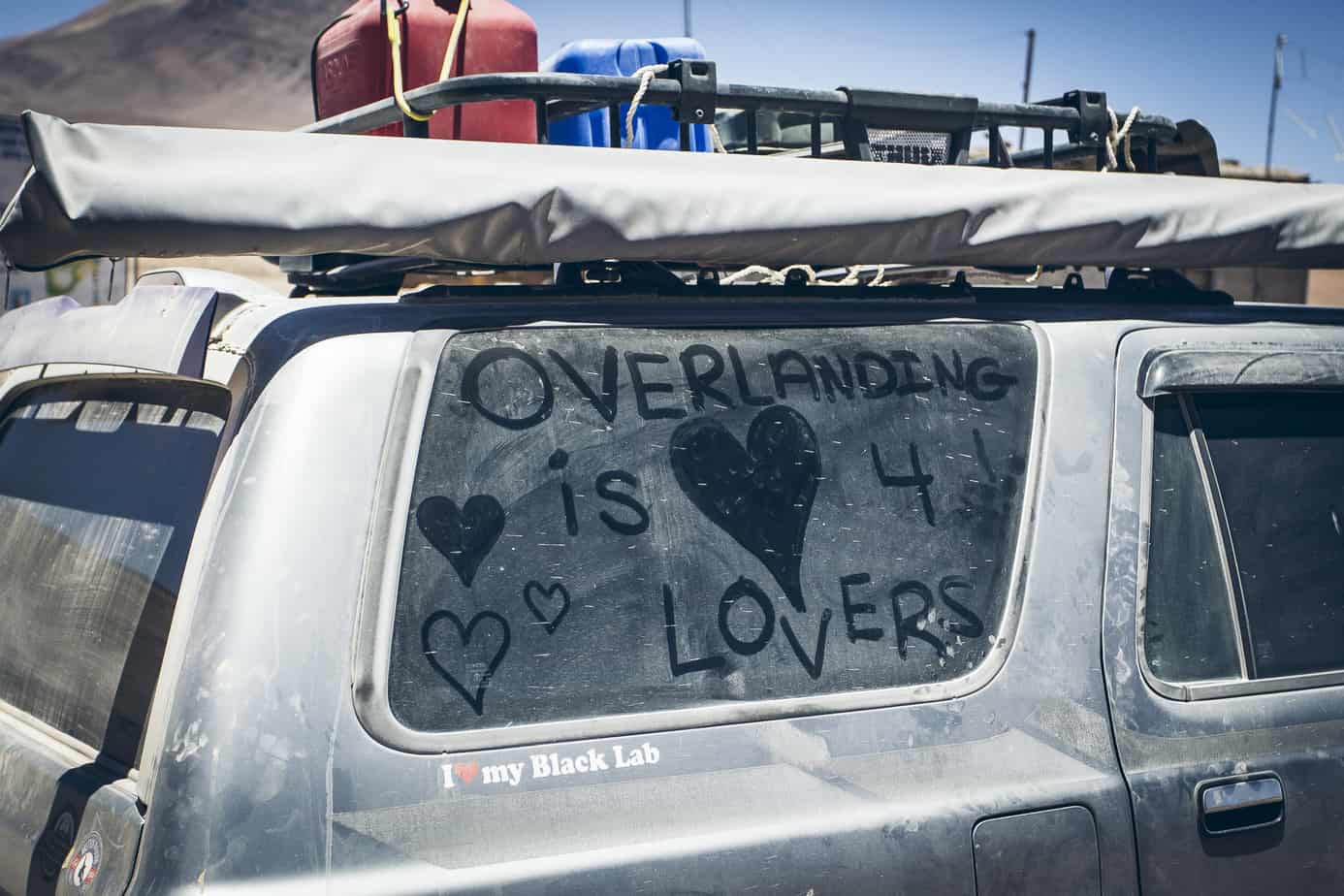
Best border crossing ever? Maybe. It definitely took some time to make it to this little shack seemingly in the middle of nowhere. Our paperwork in order, we hit the road once again, this time on a luxuriously smooth ribbon of asphalt. After descending 6,500 feet, we arrived in our first Chilean town, San Pedro de Atacama.


